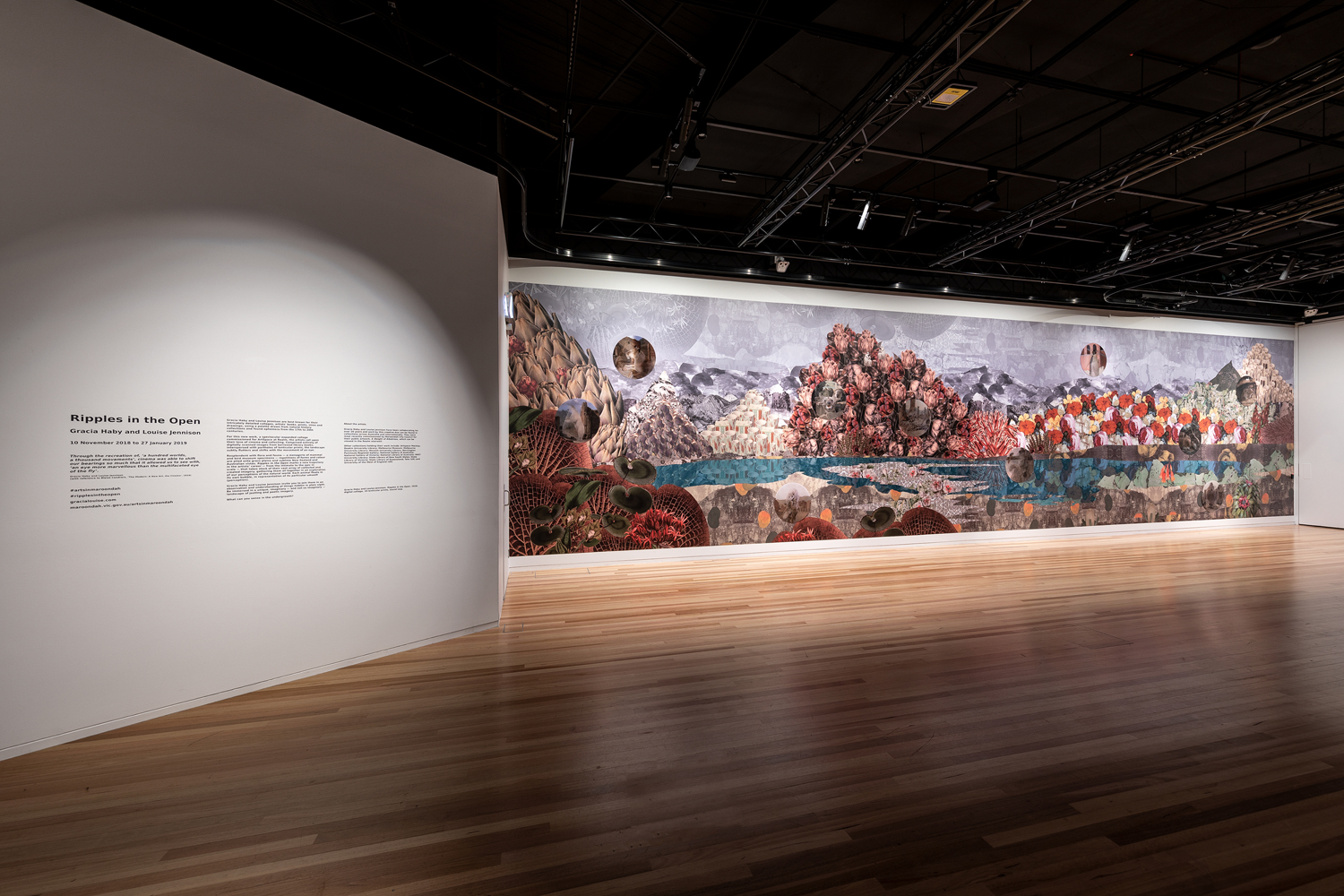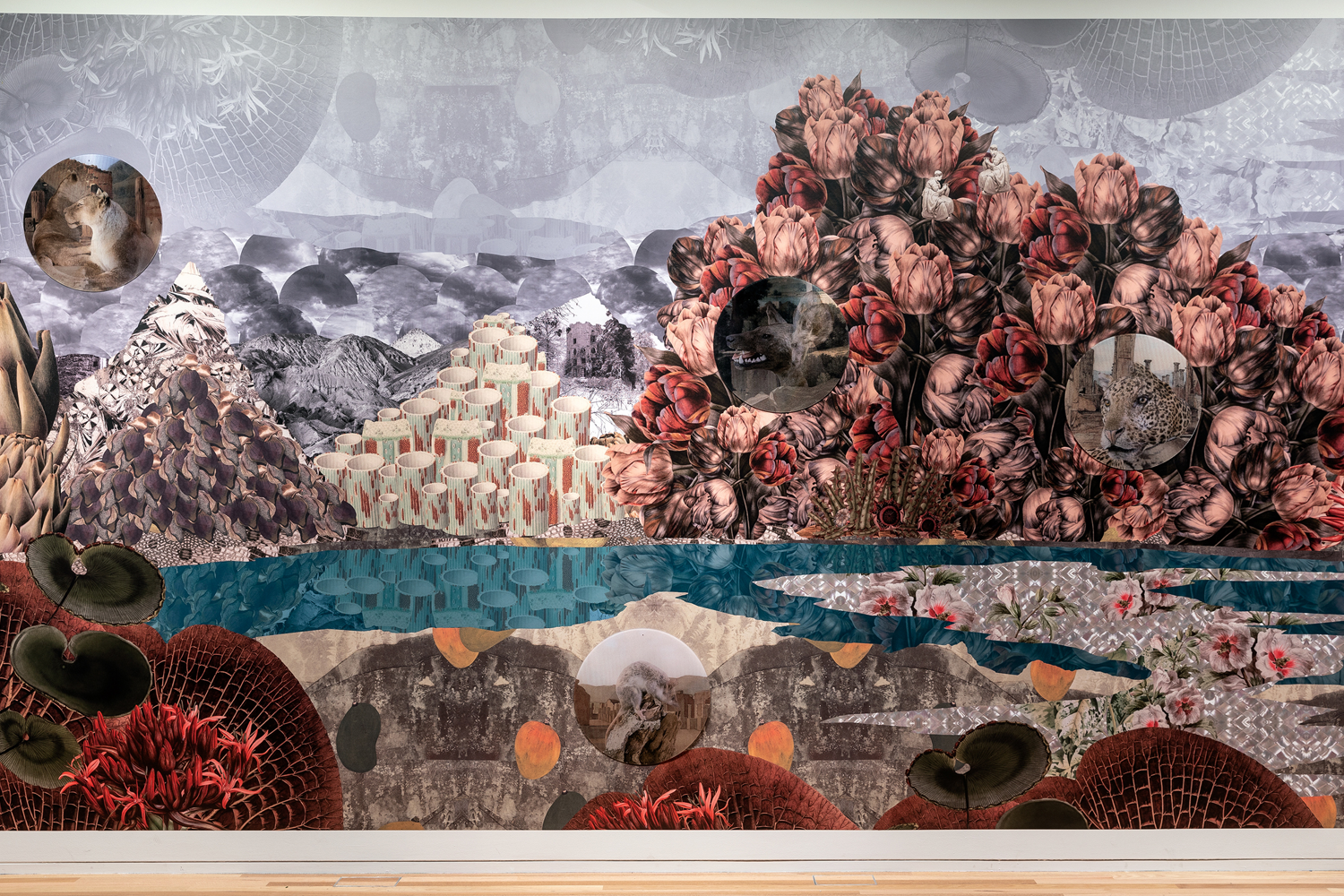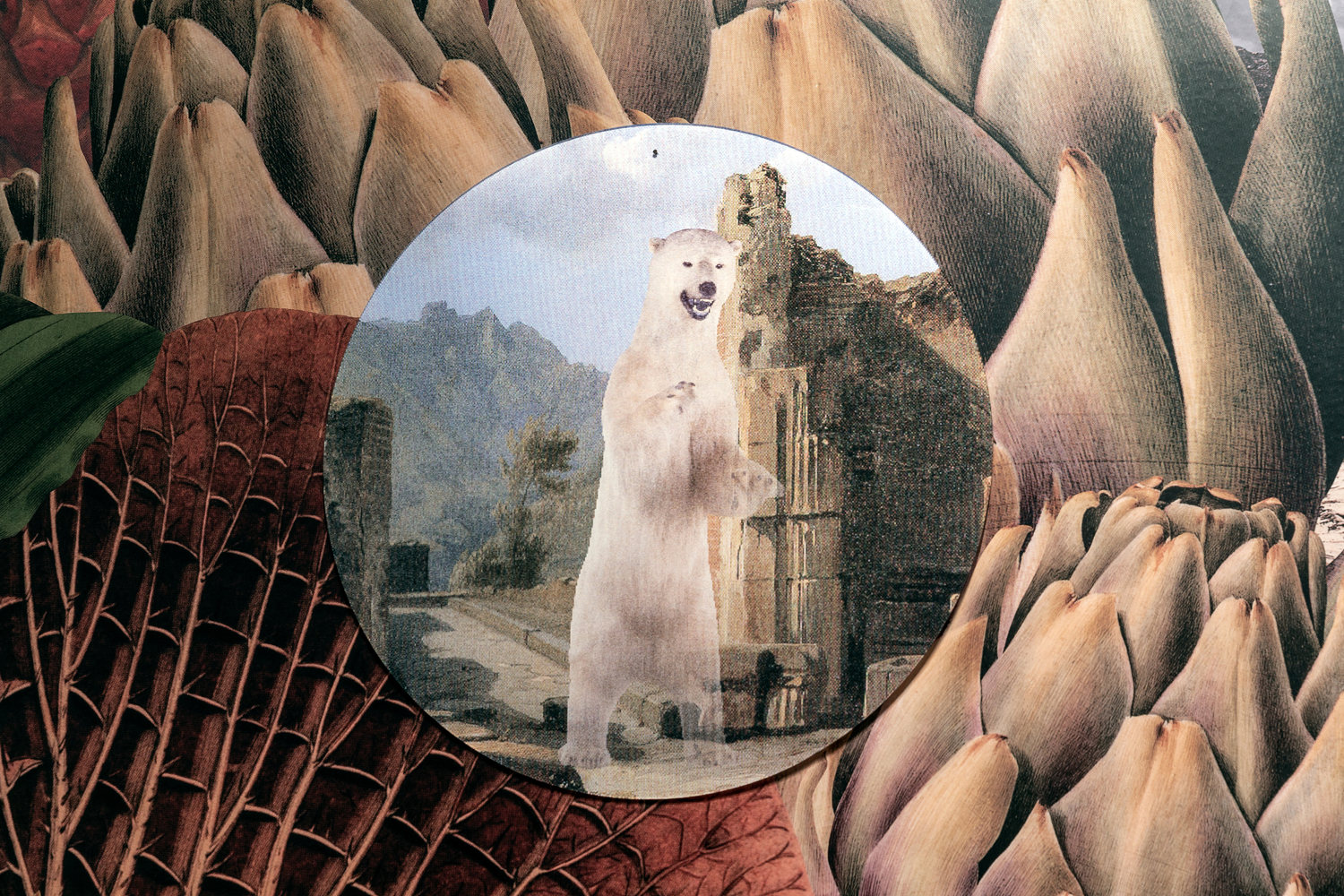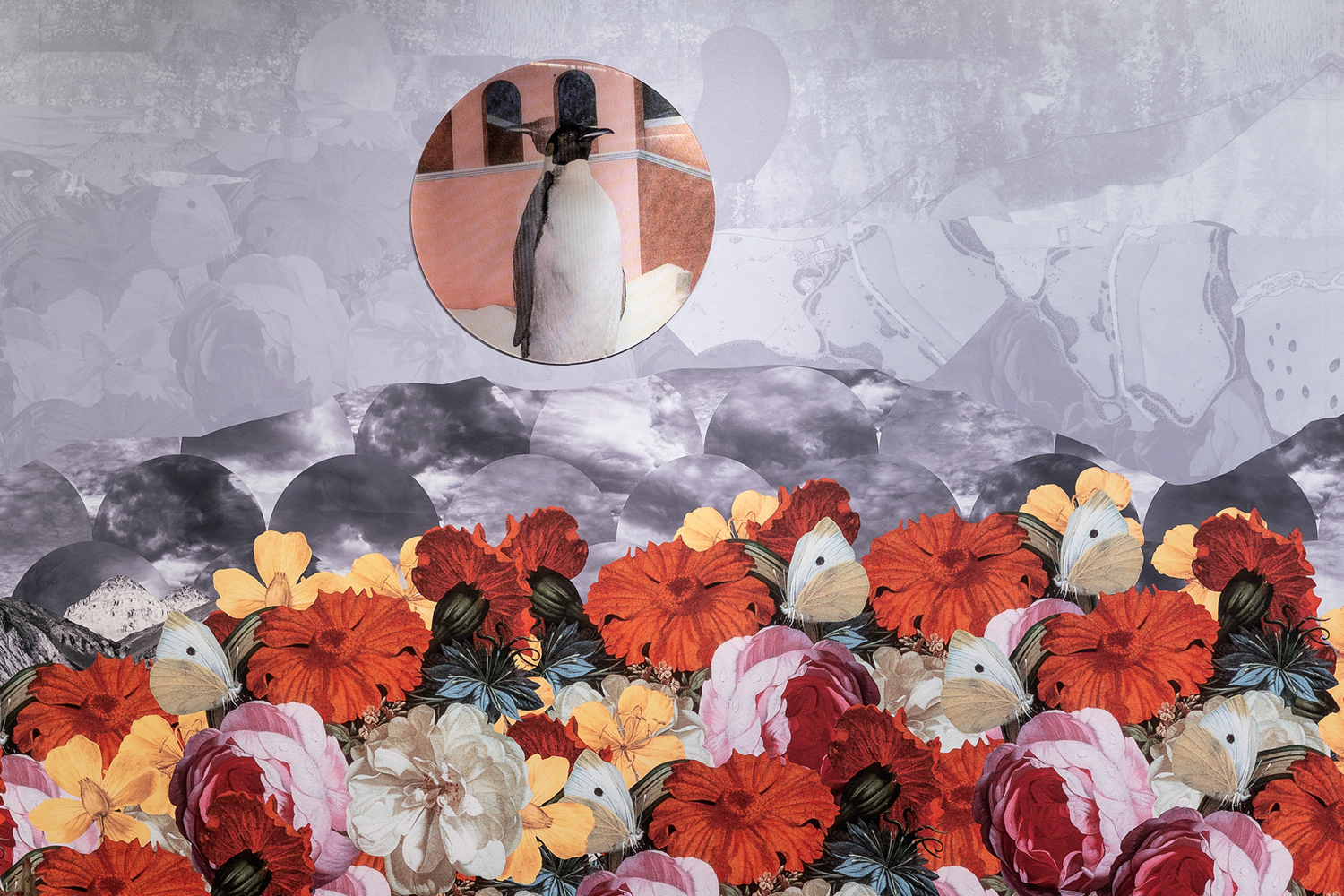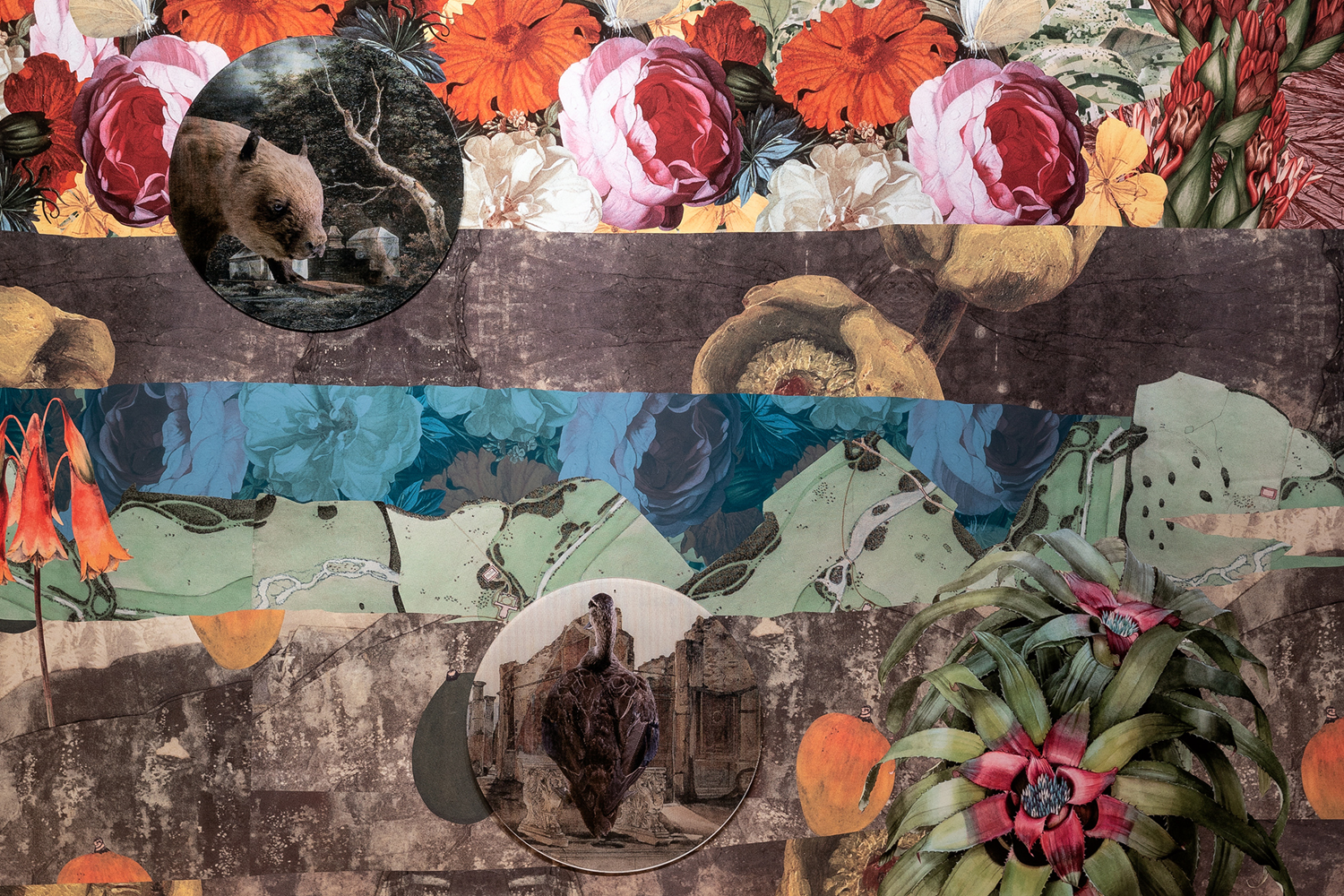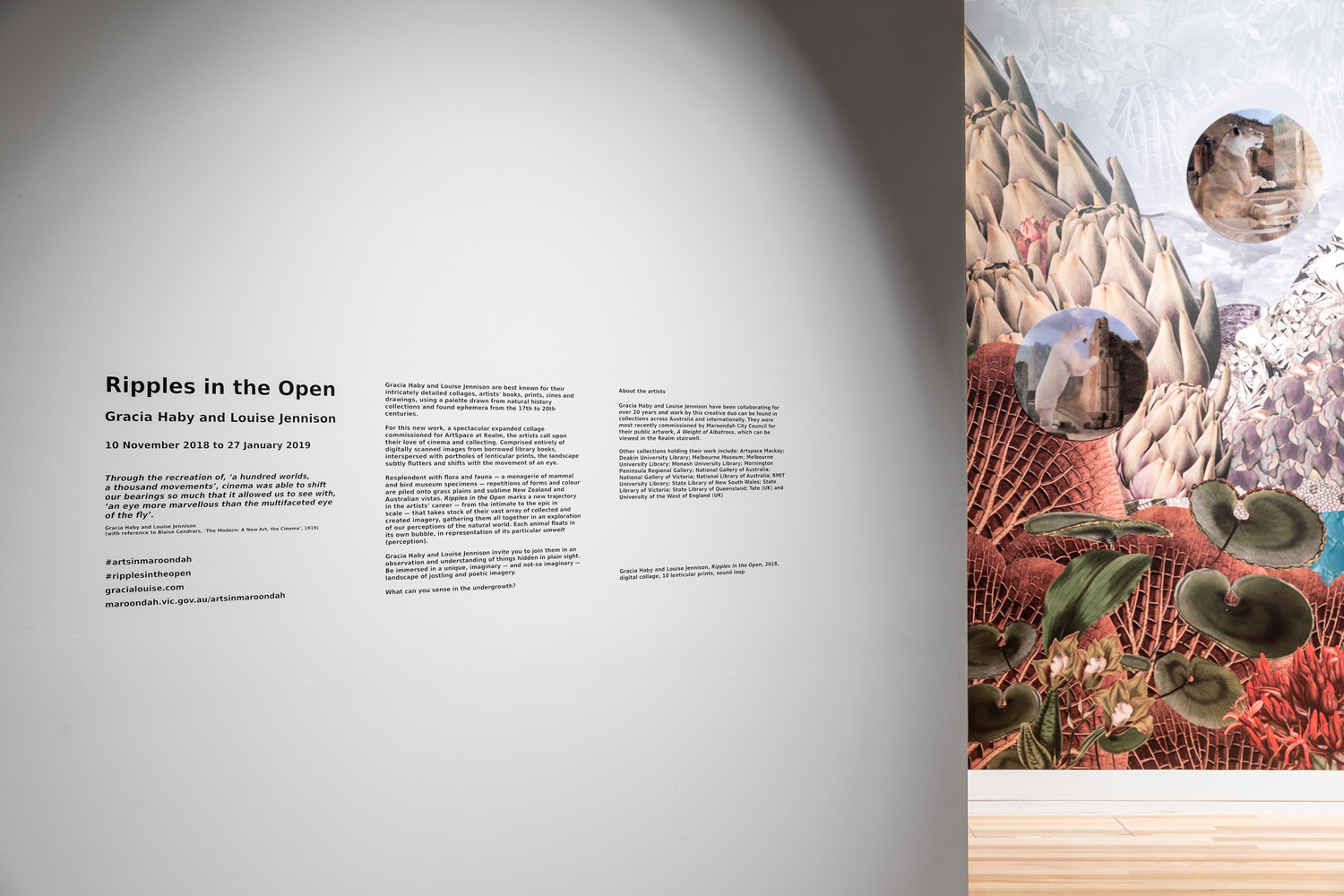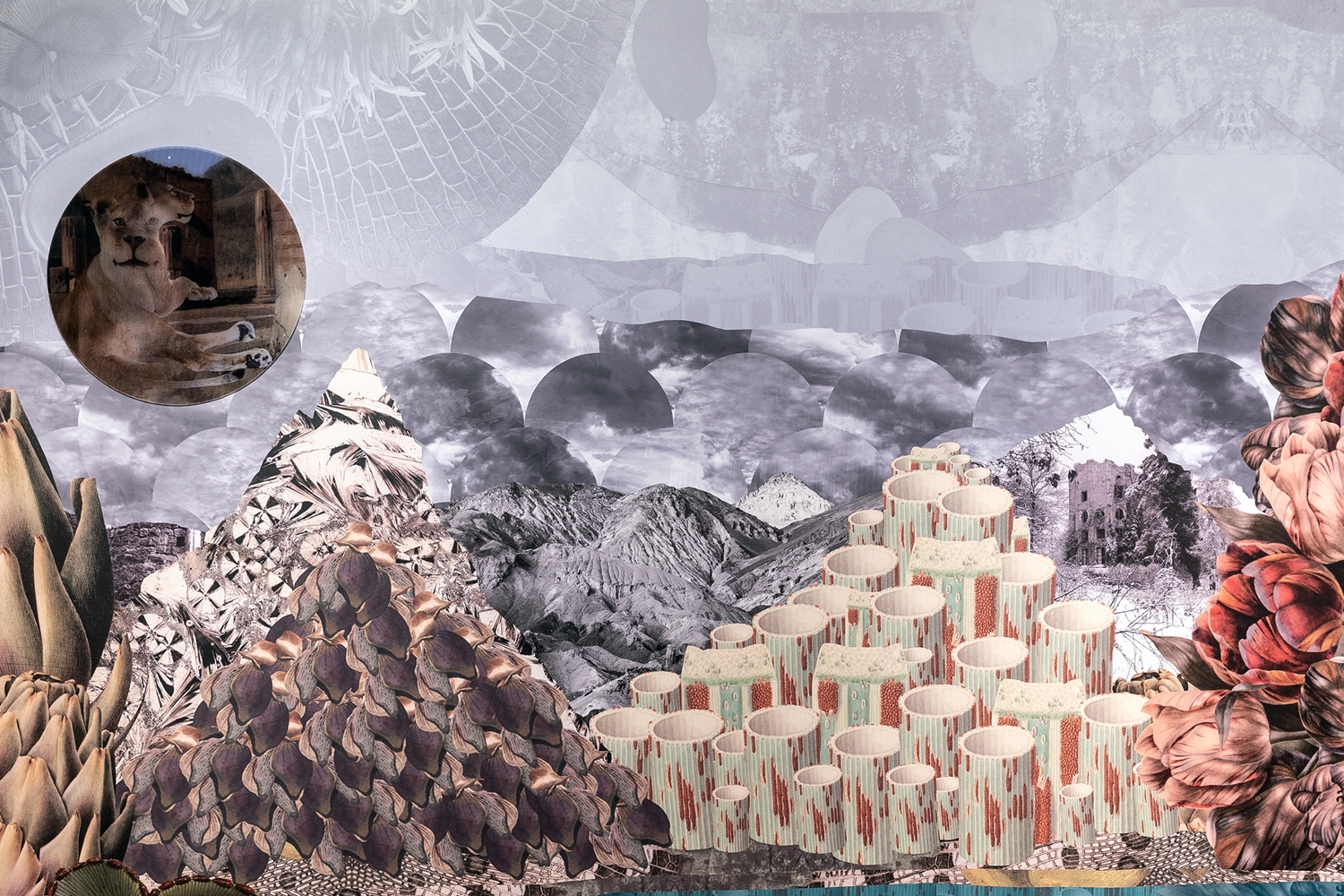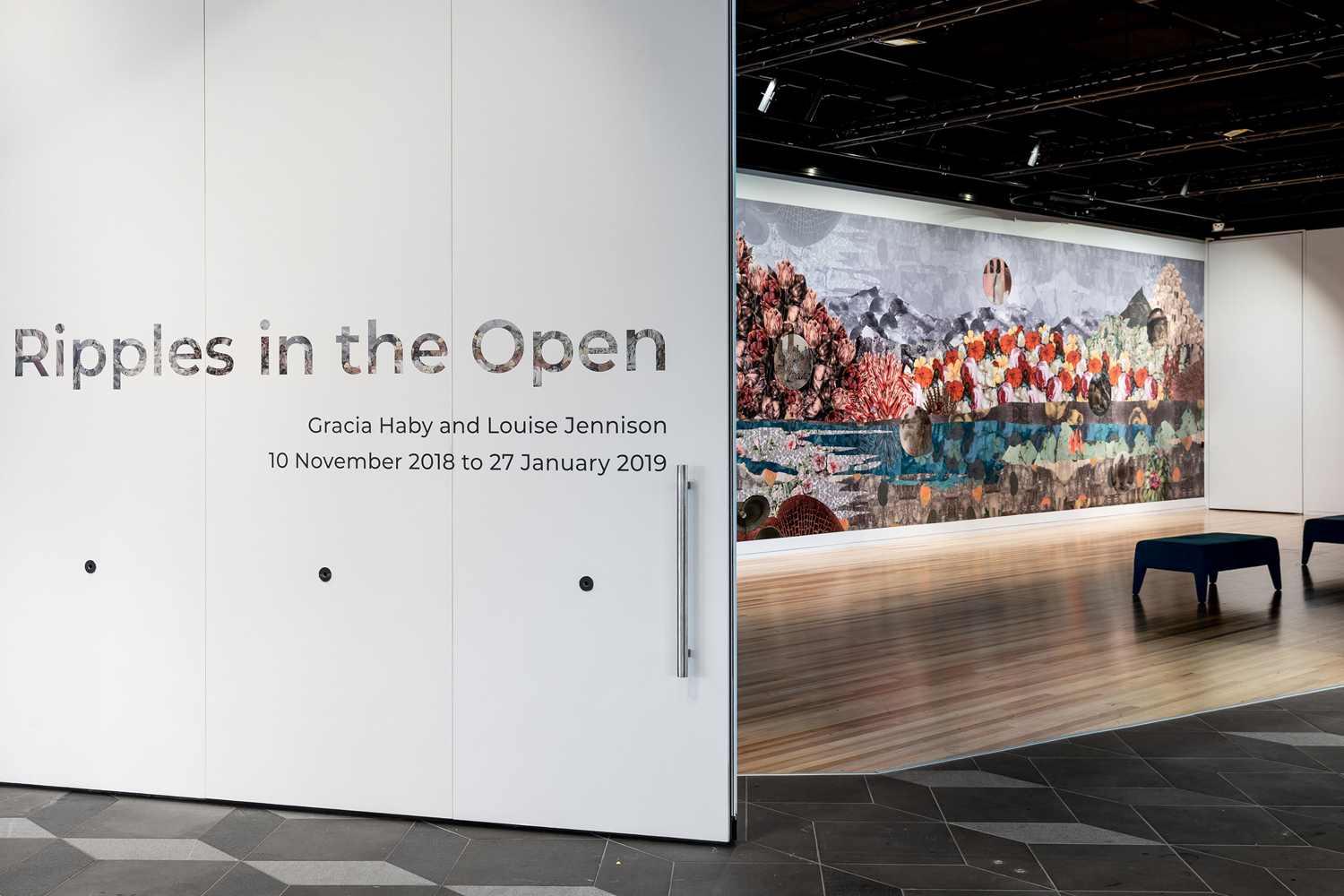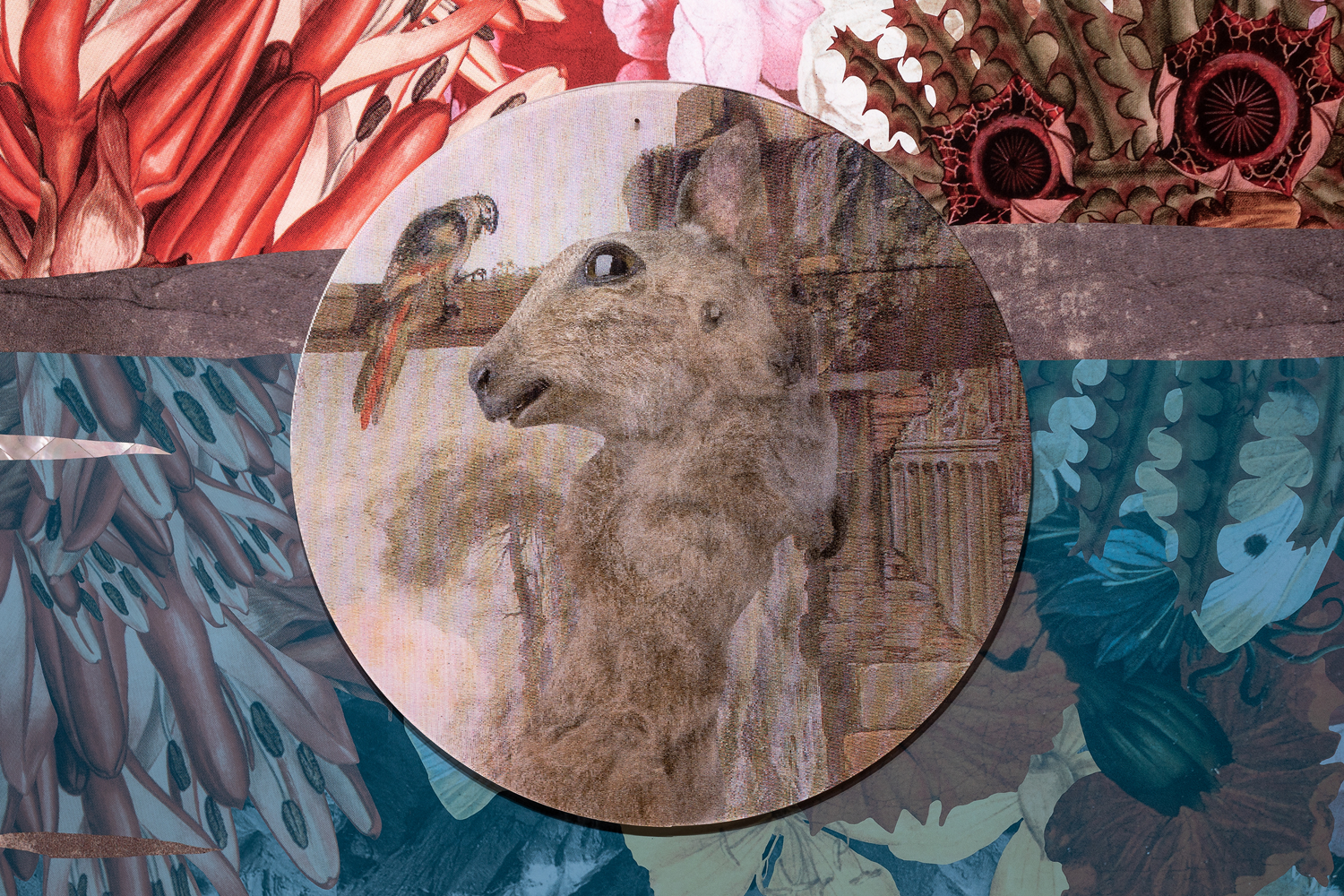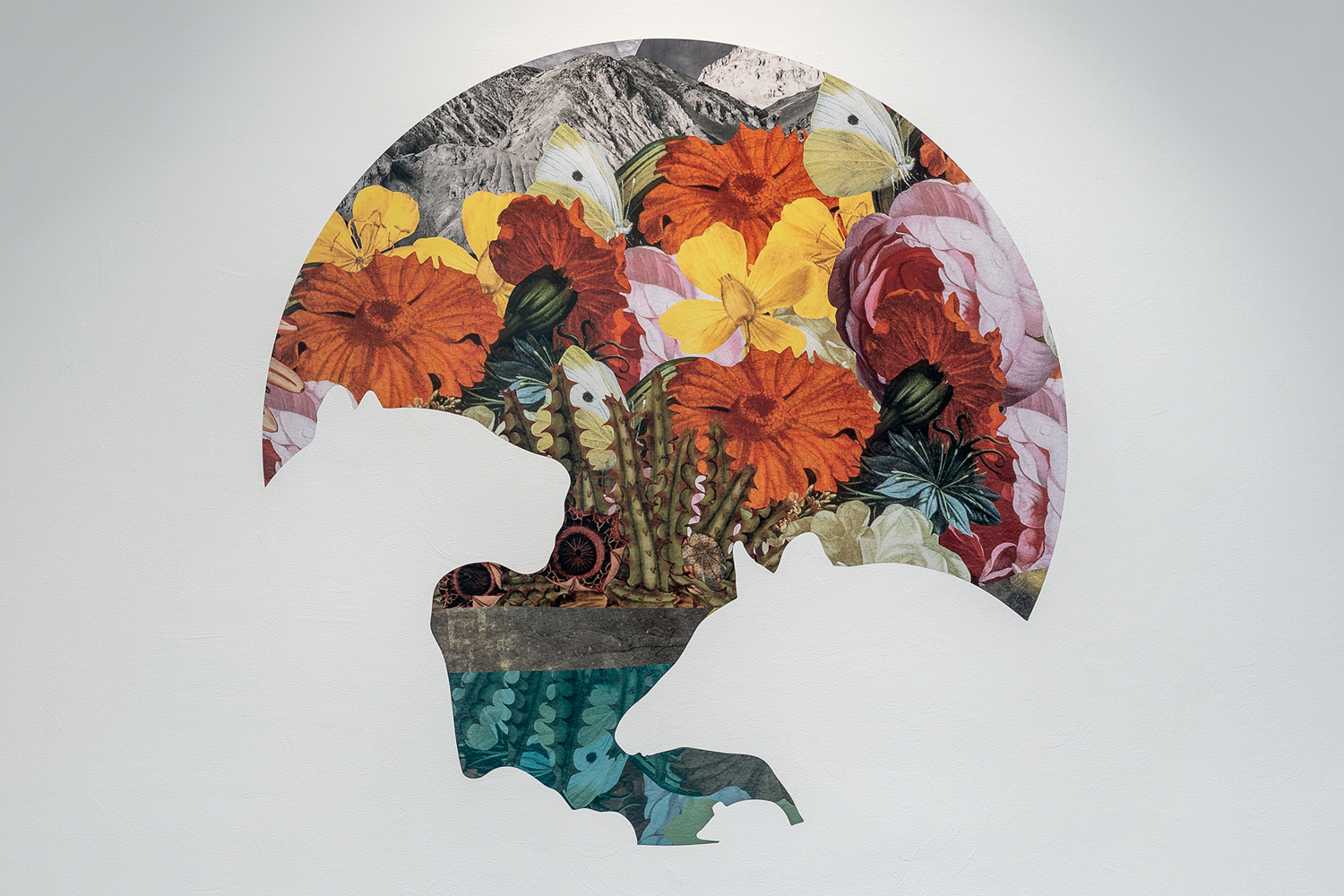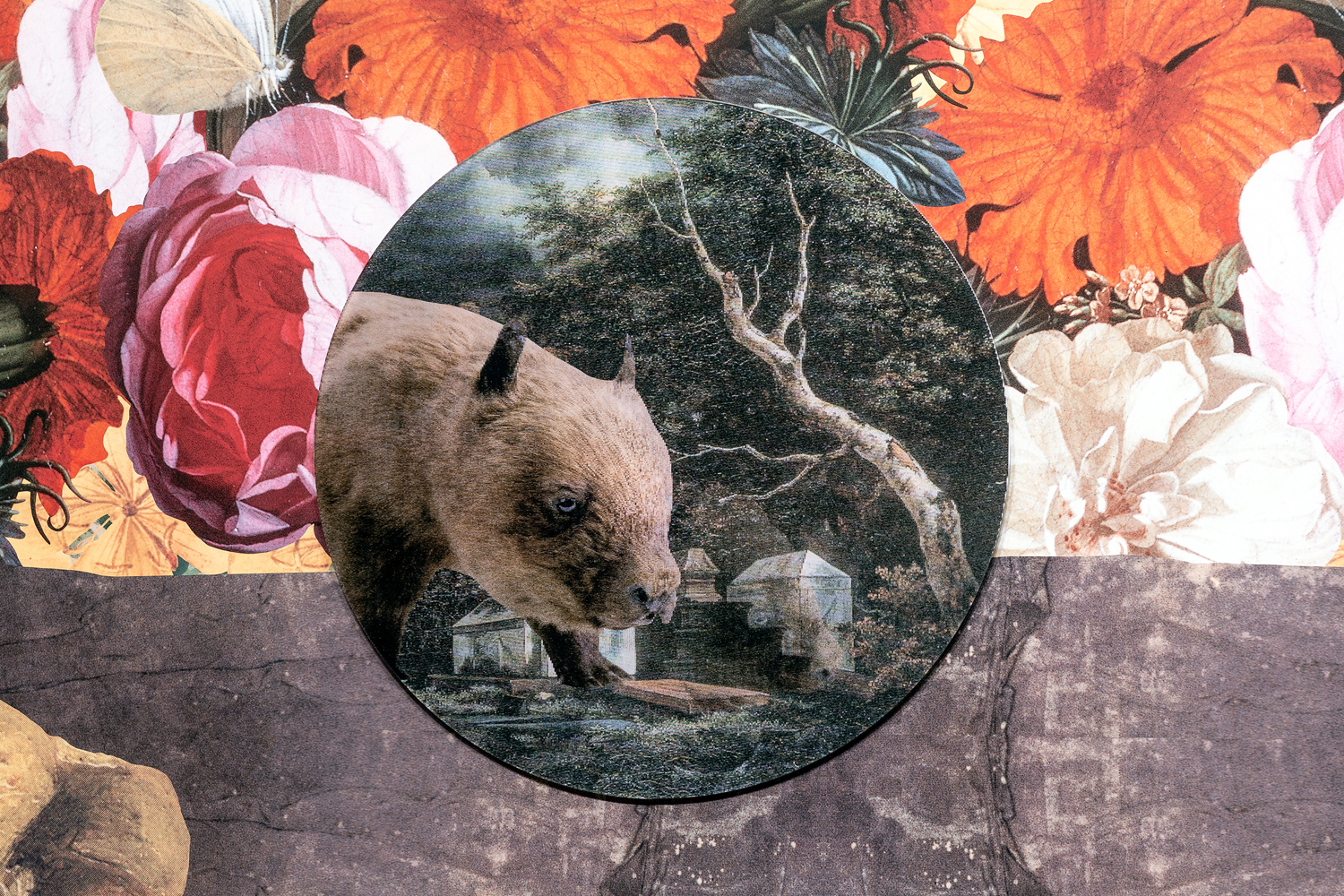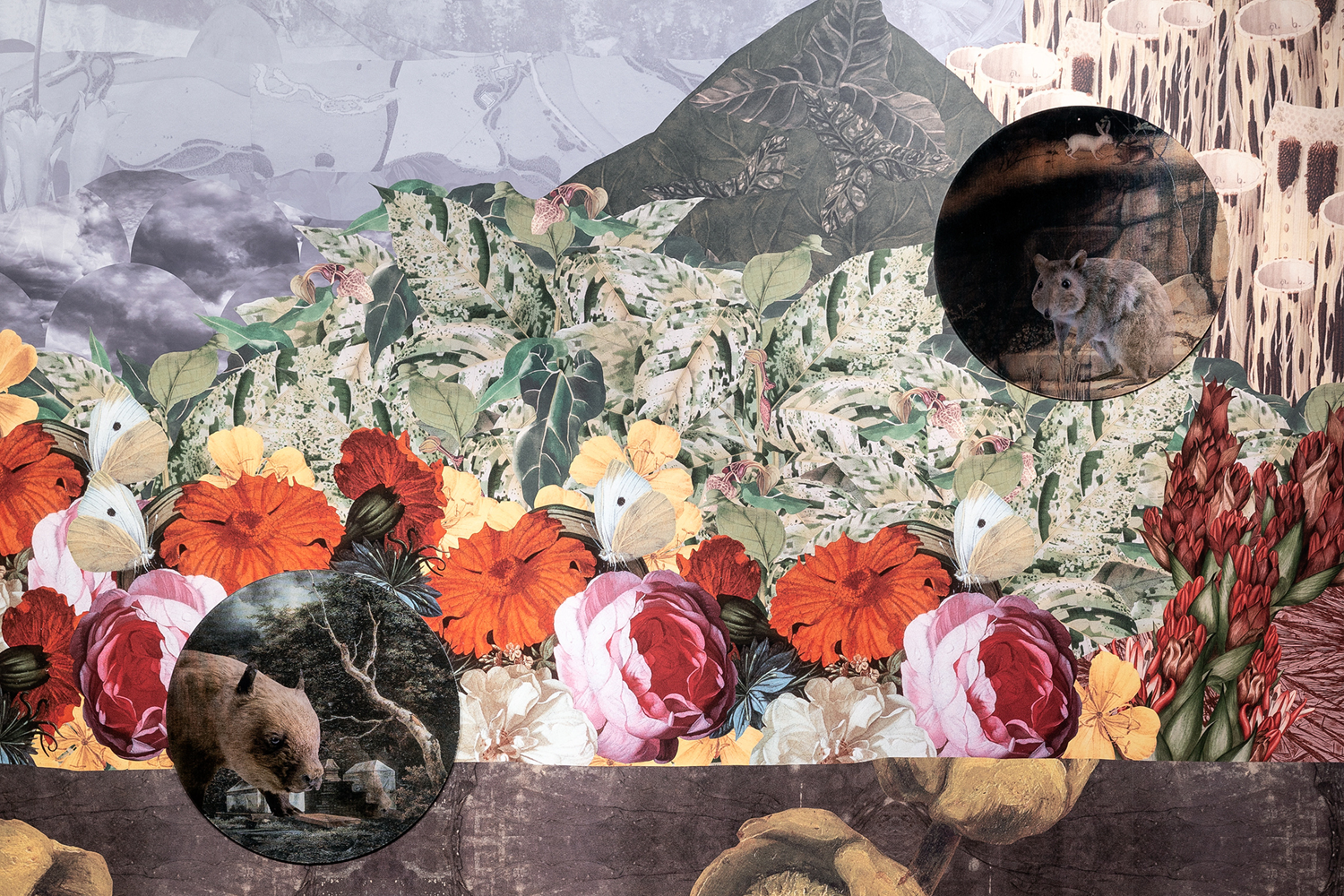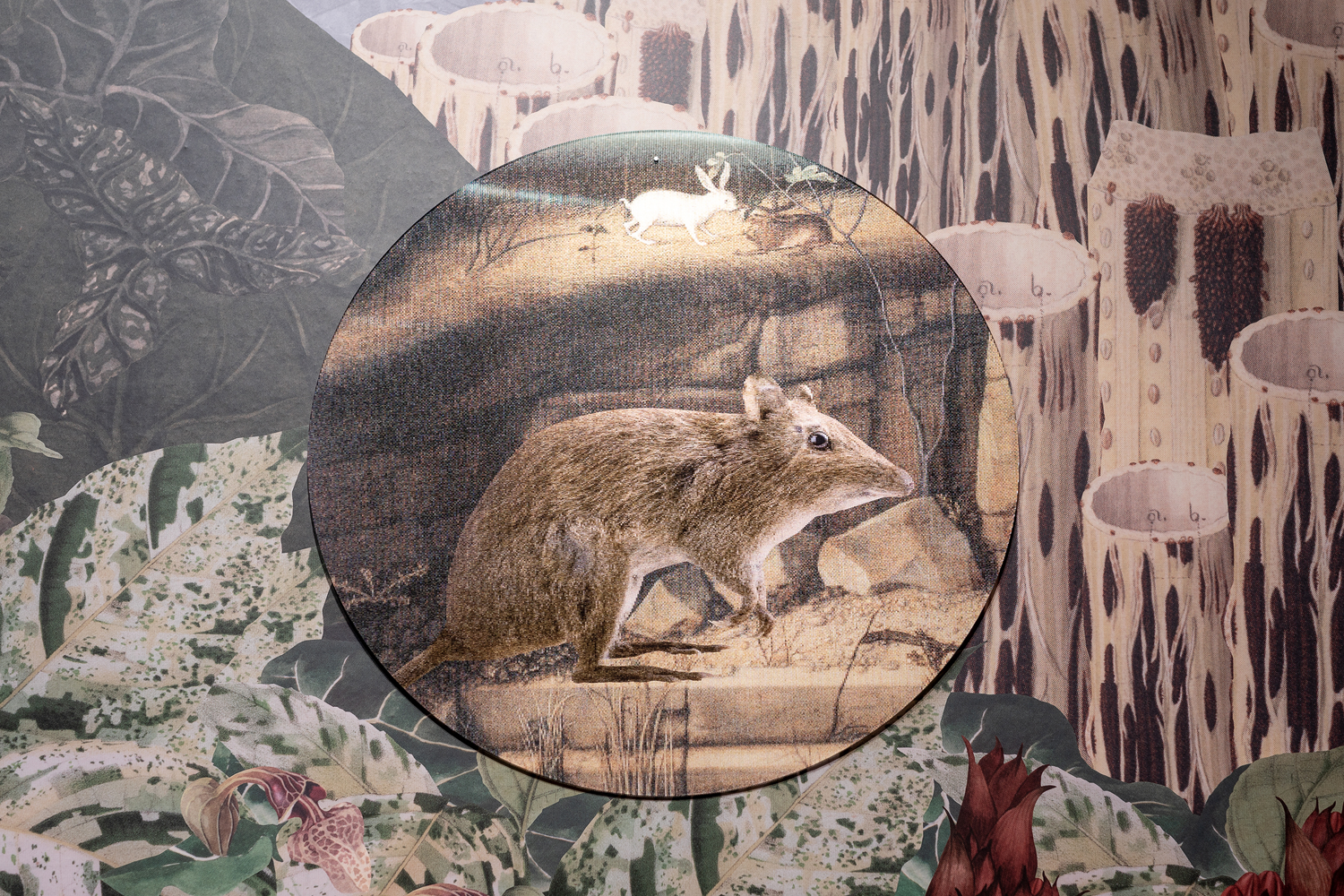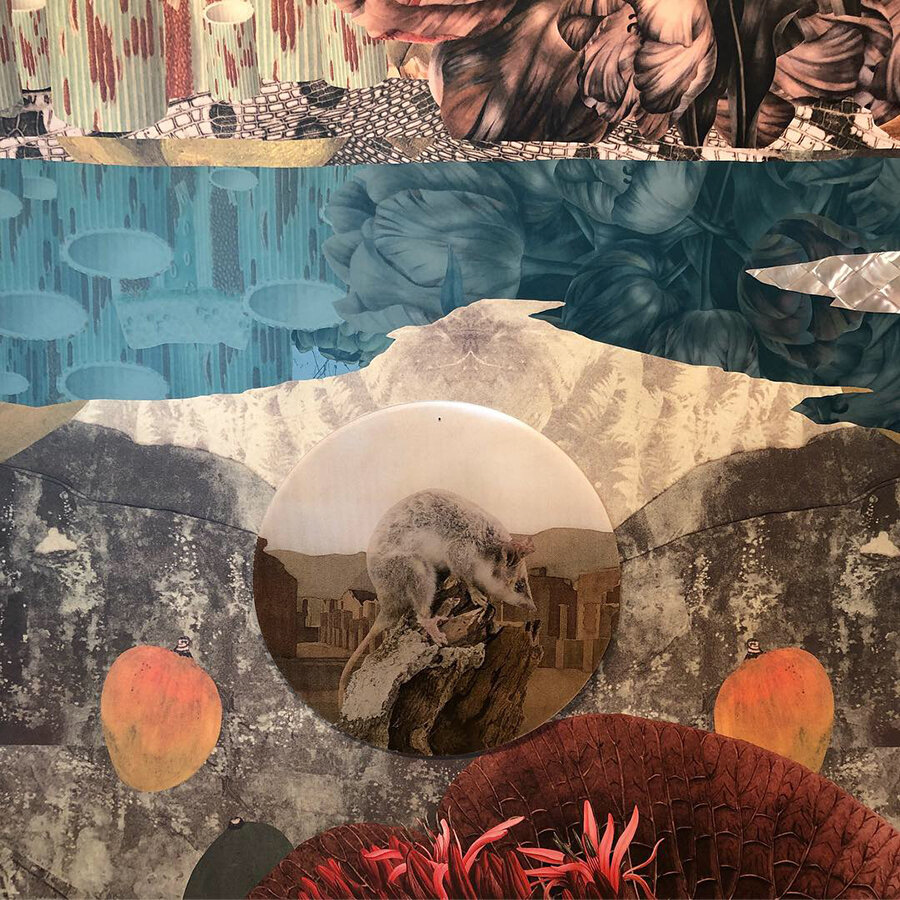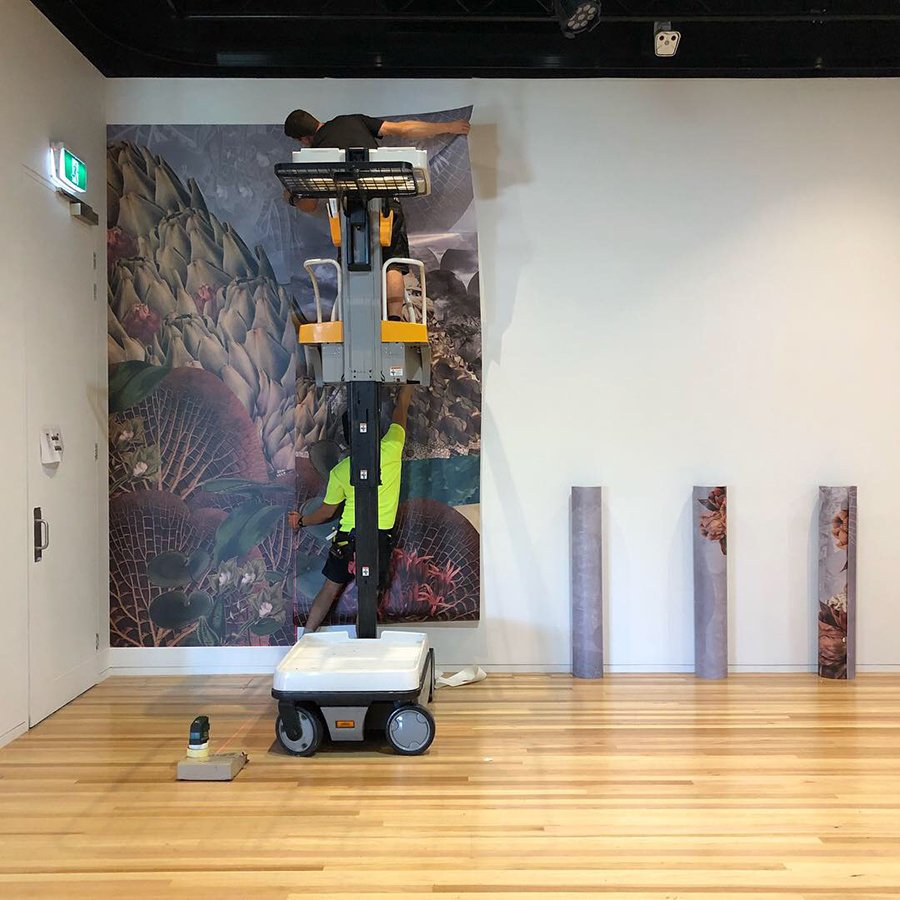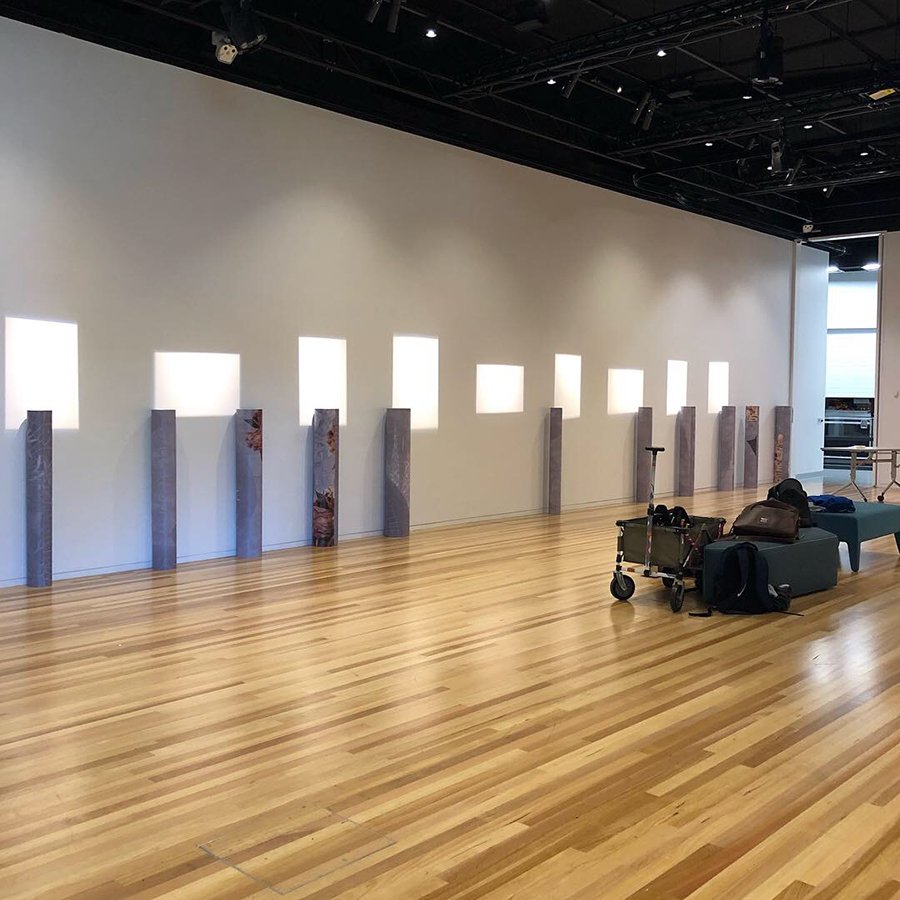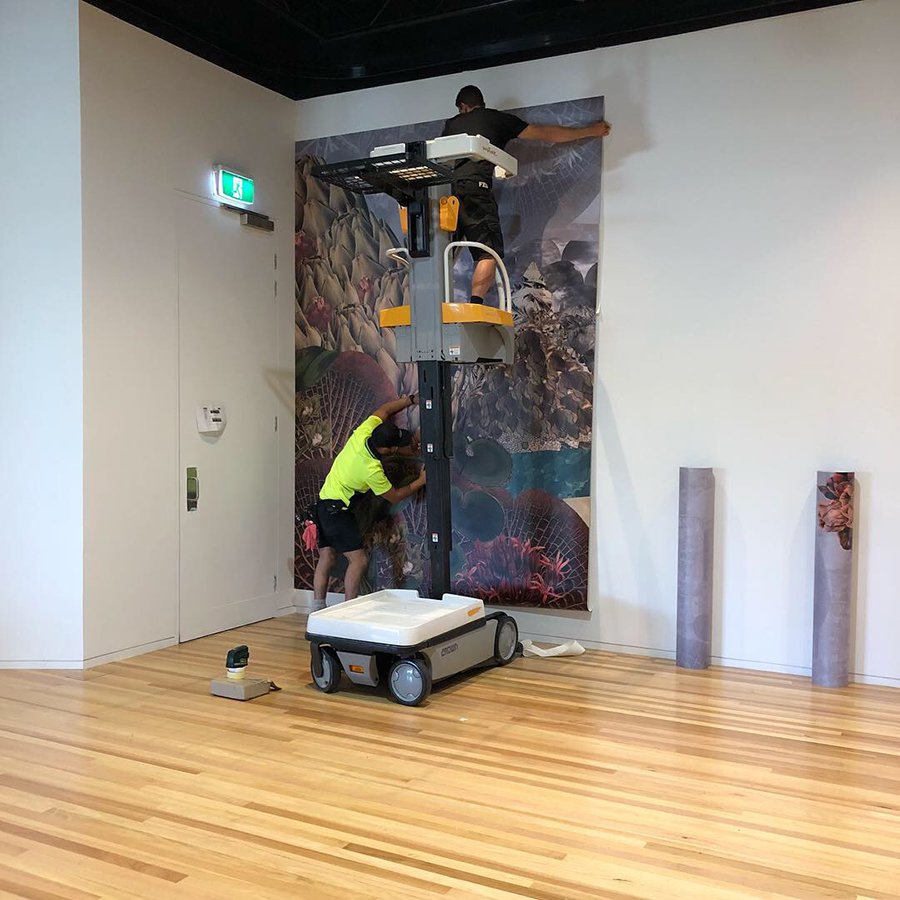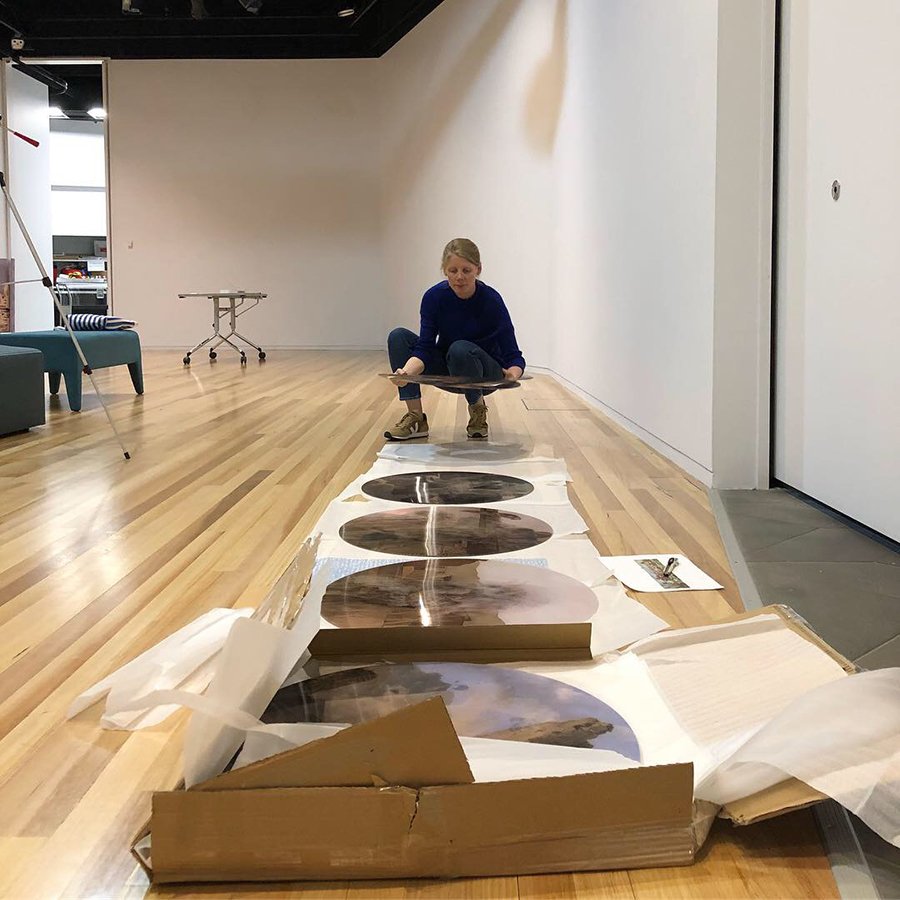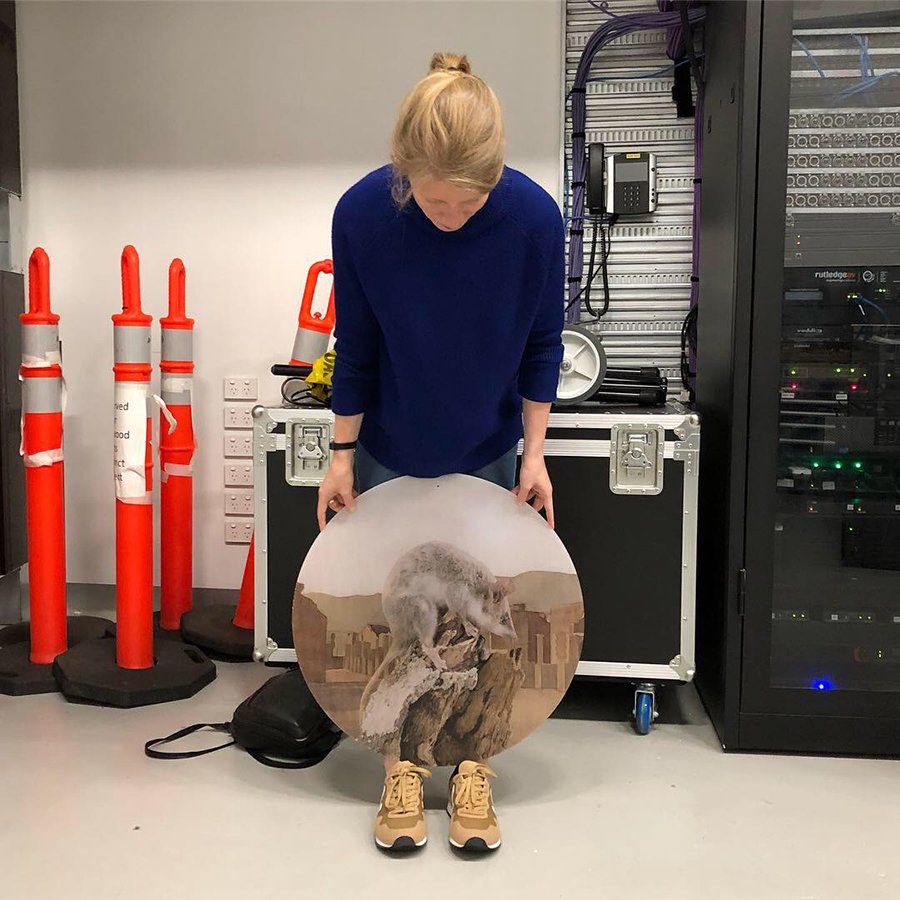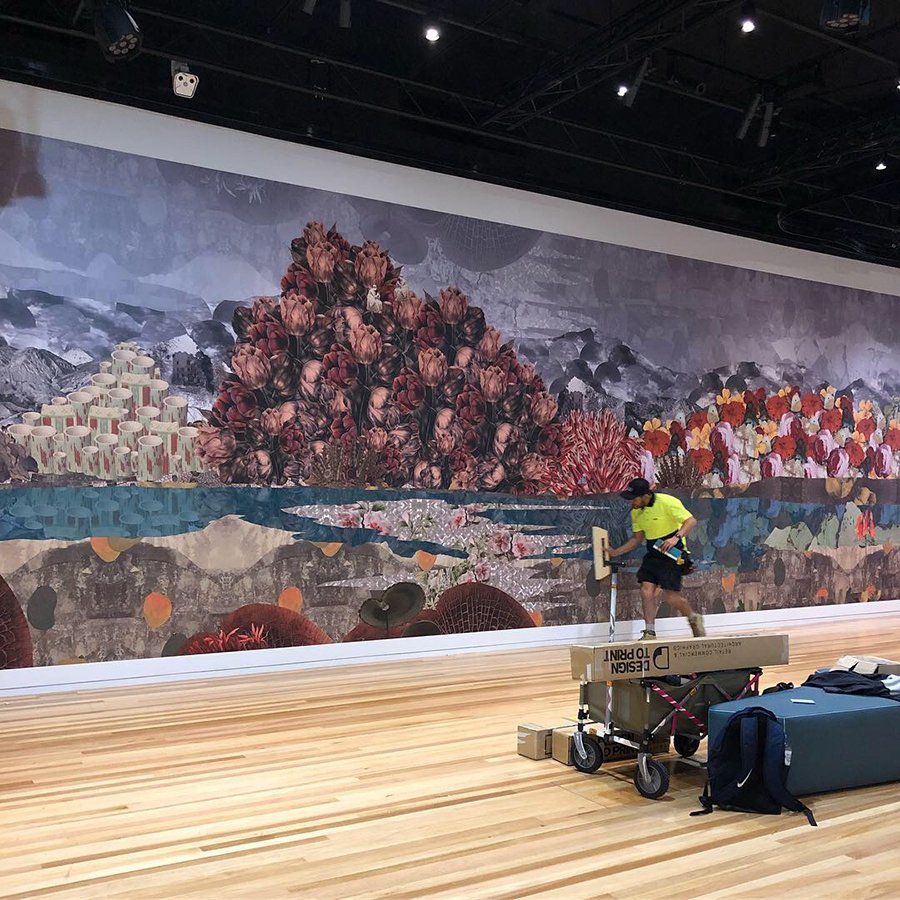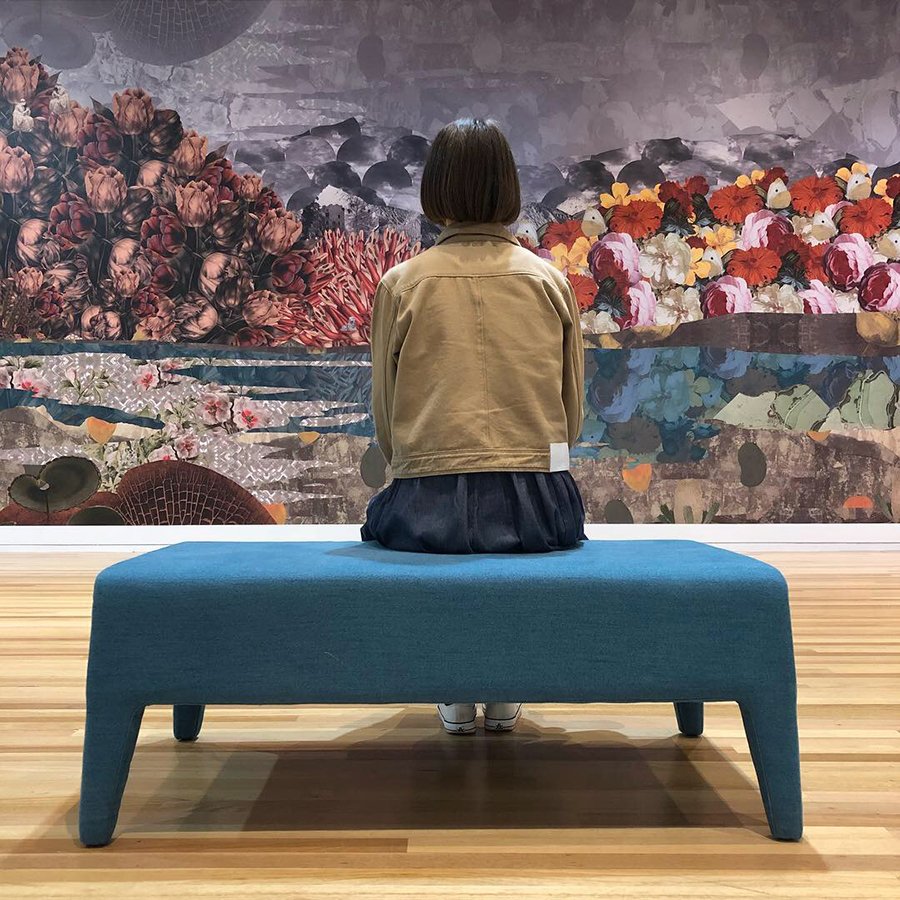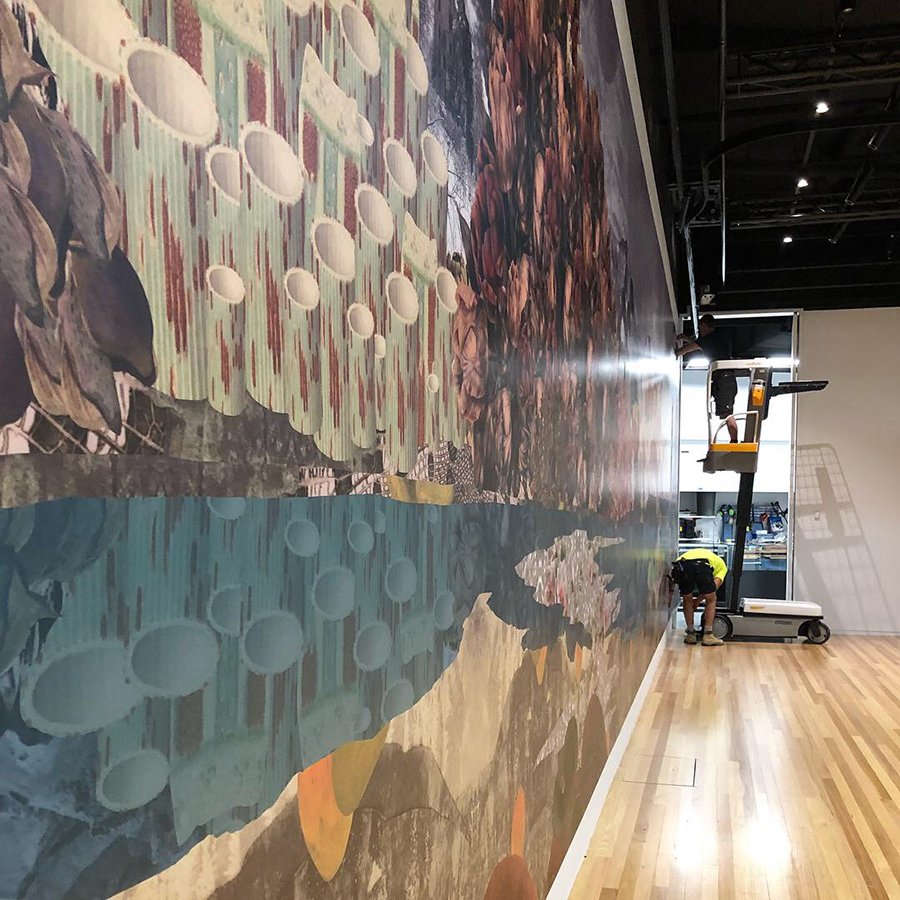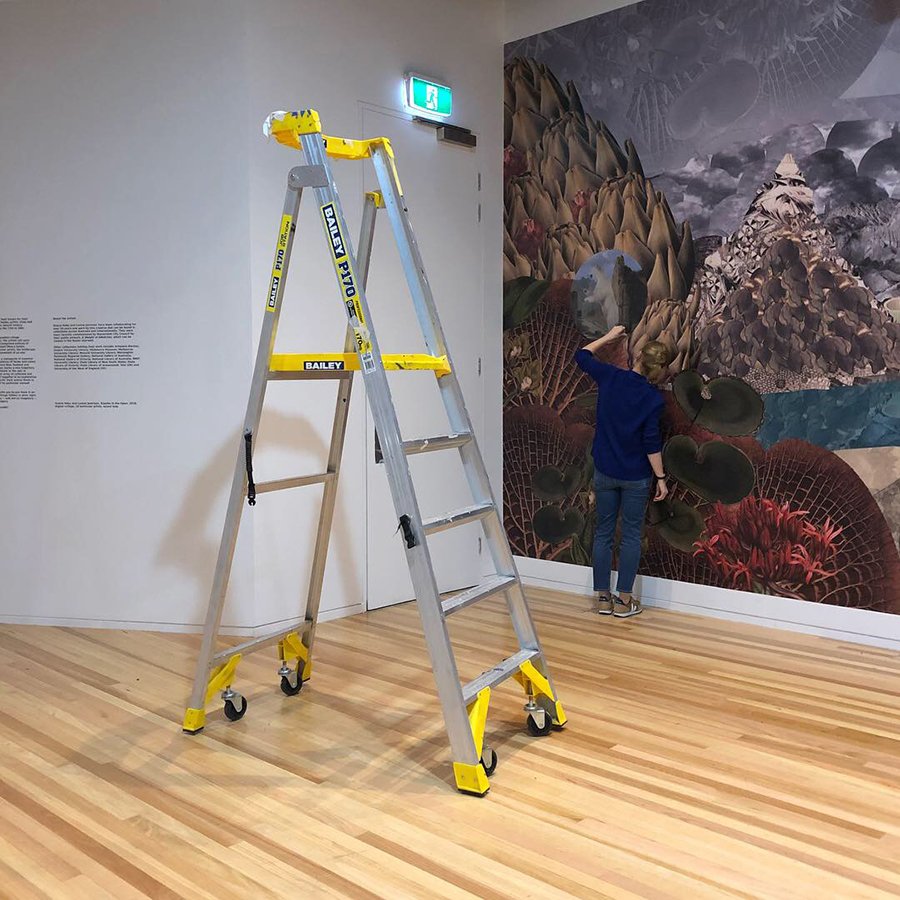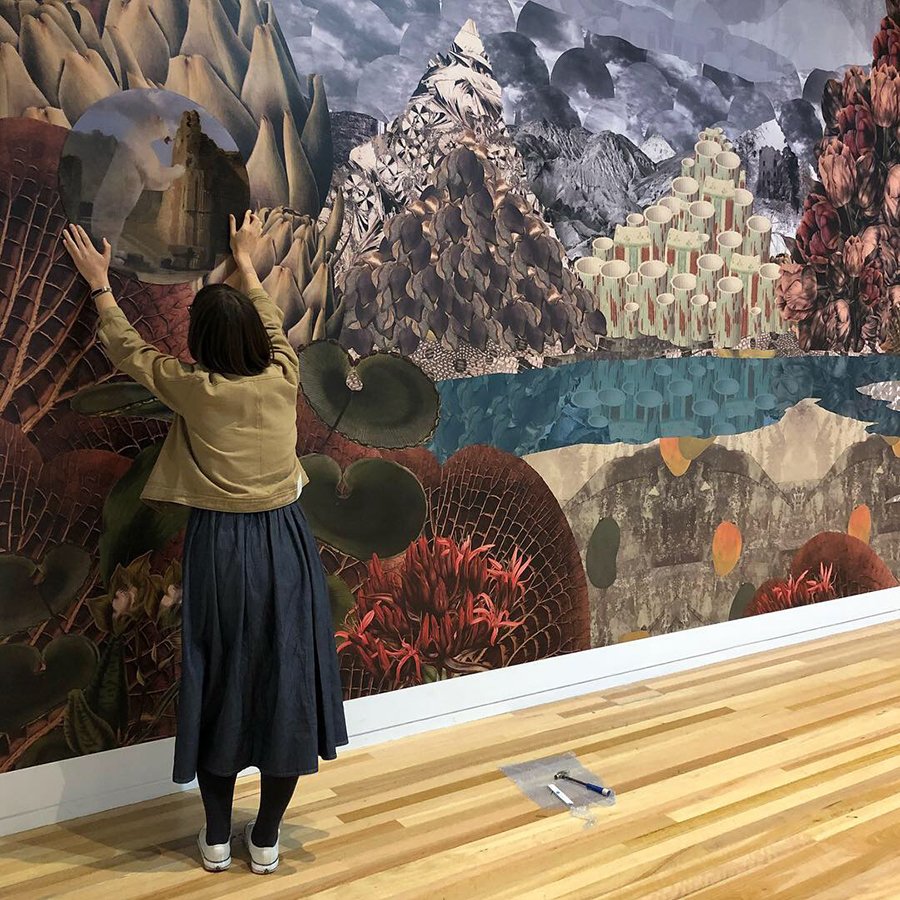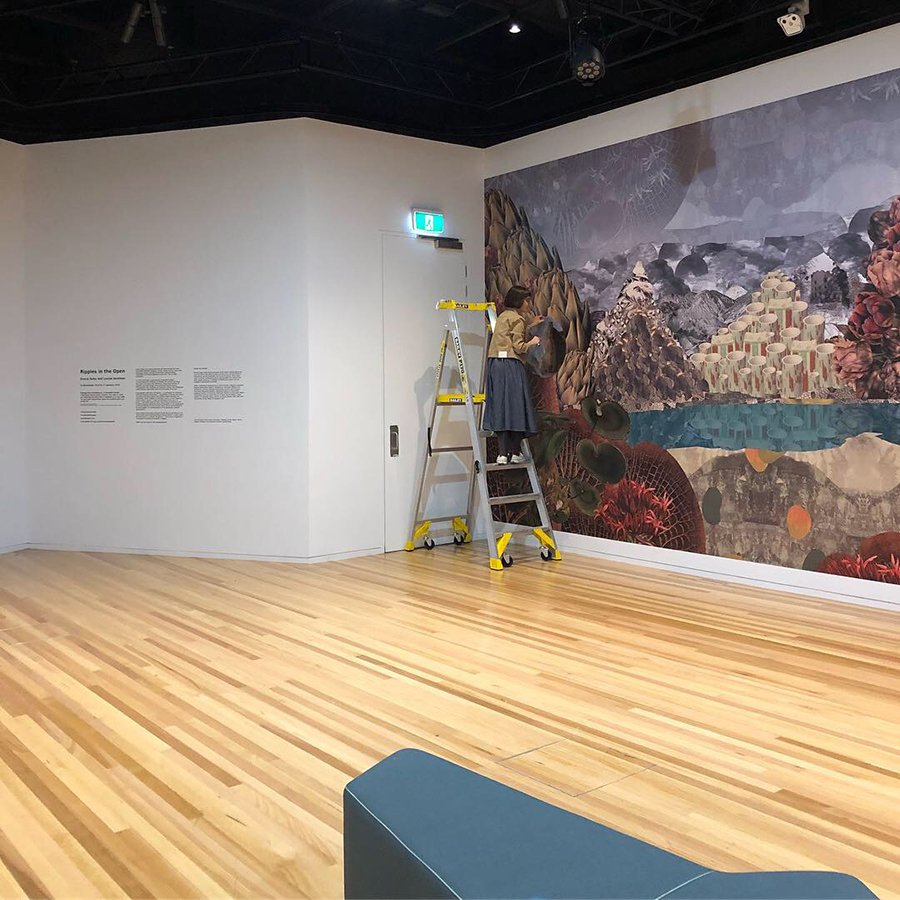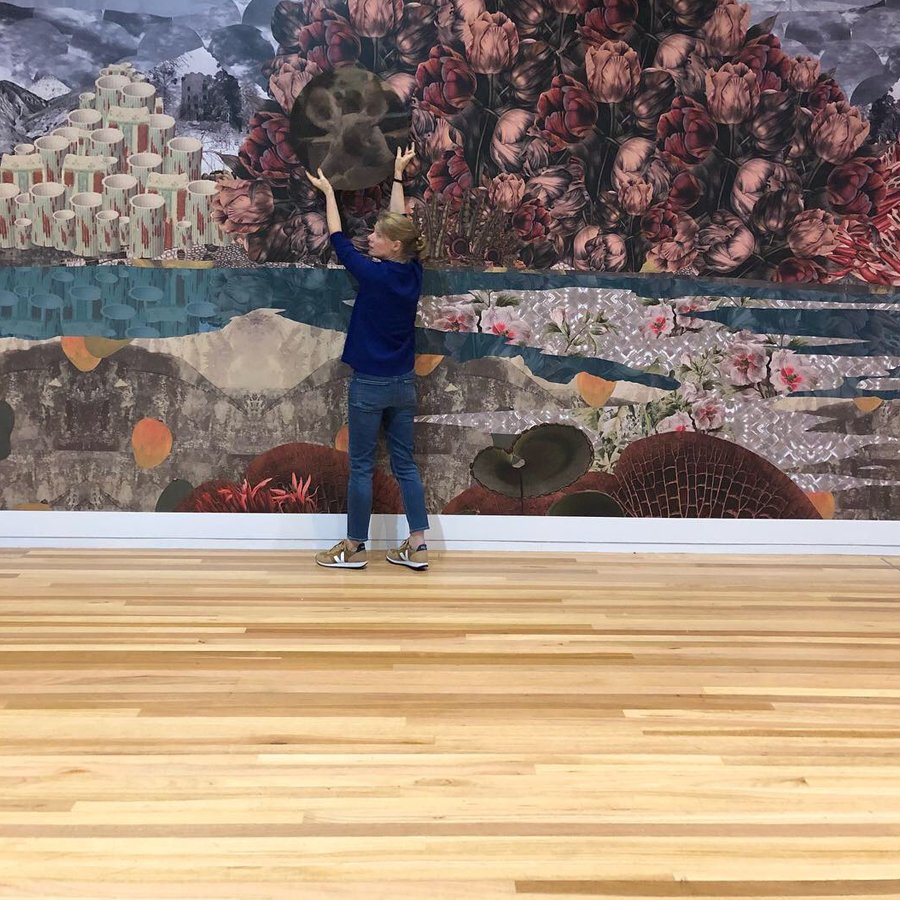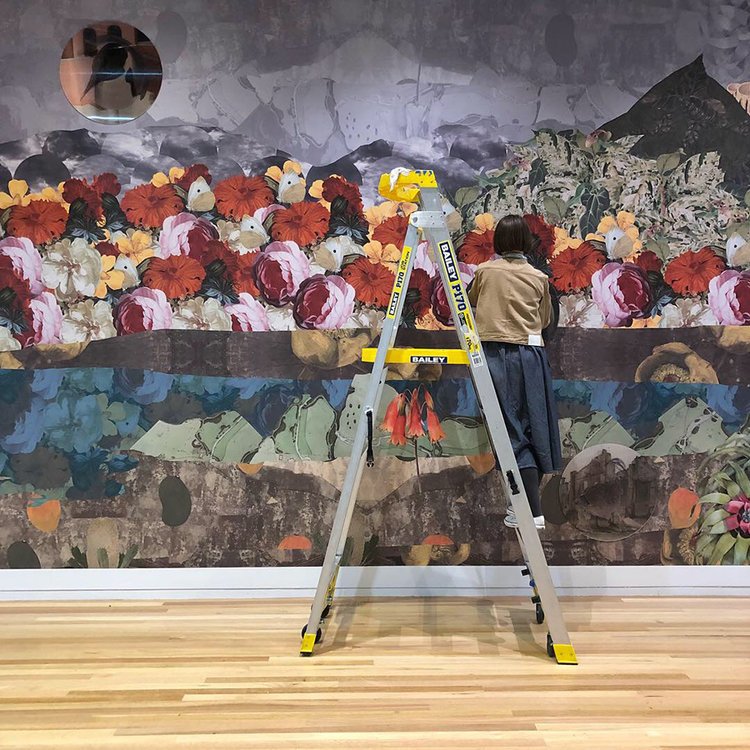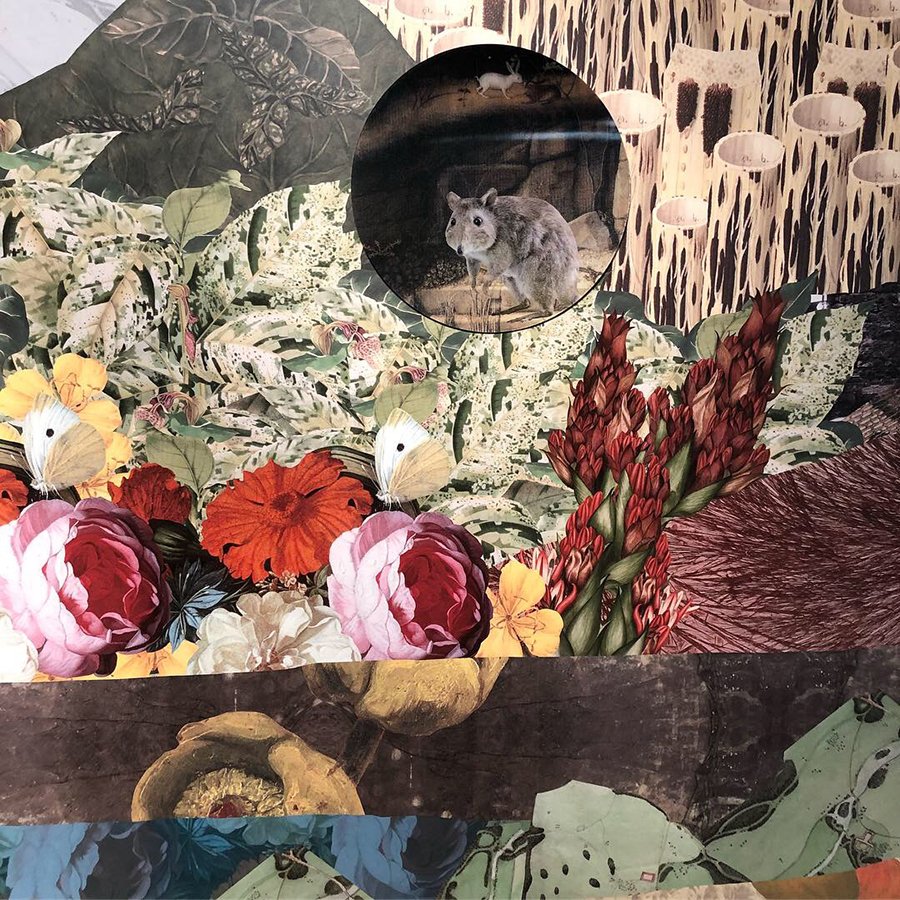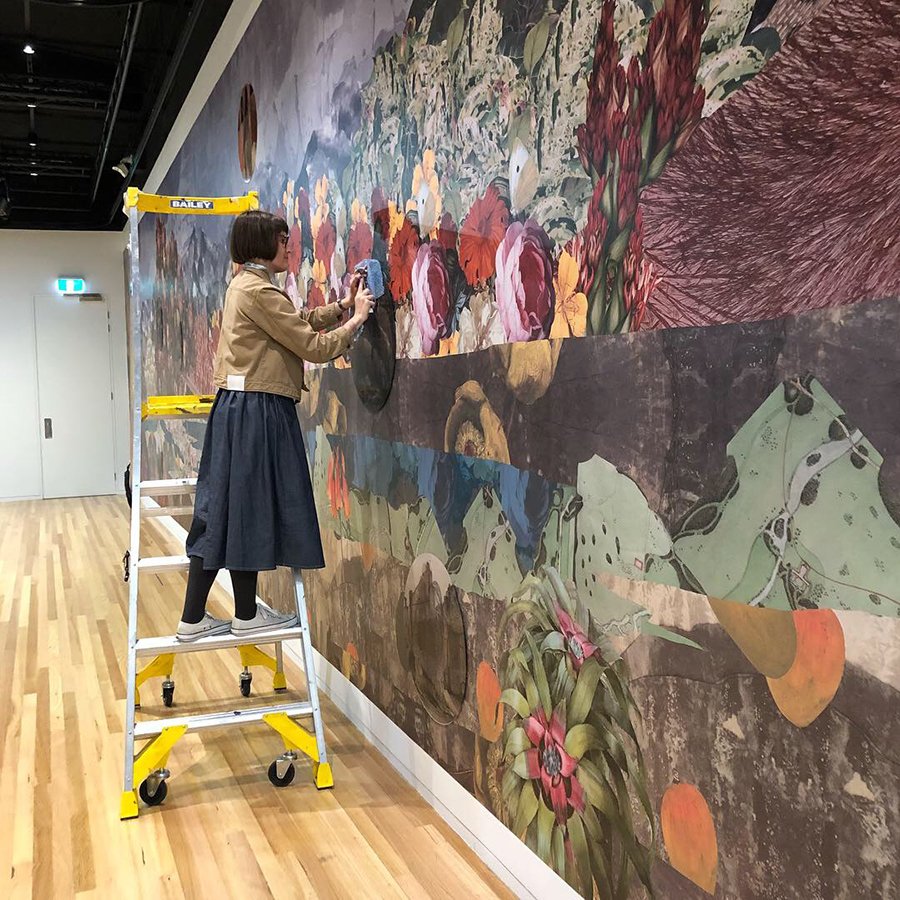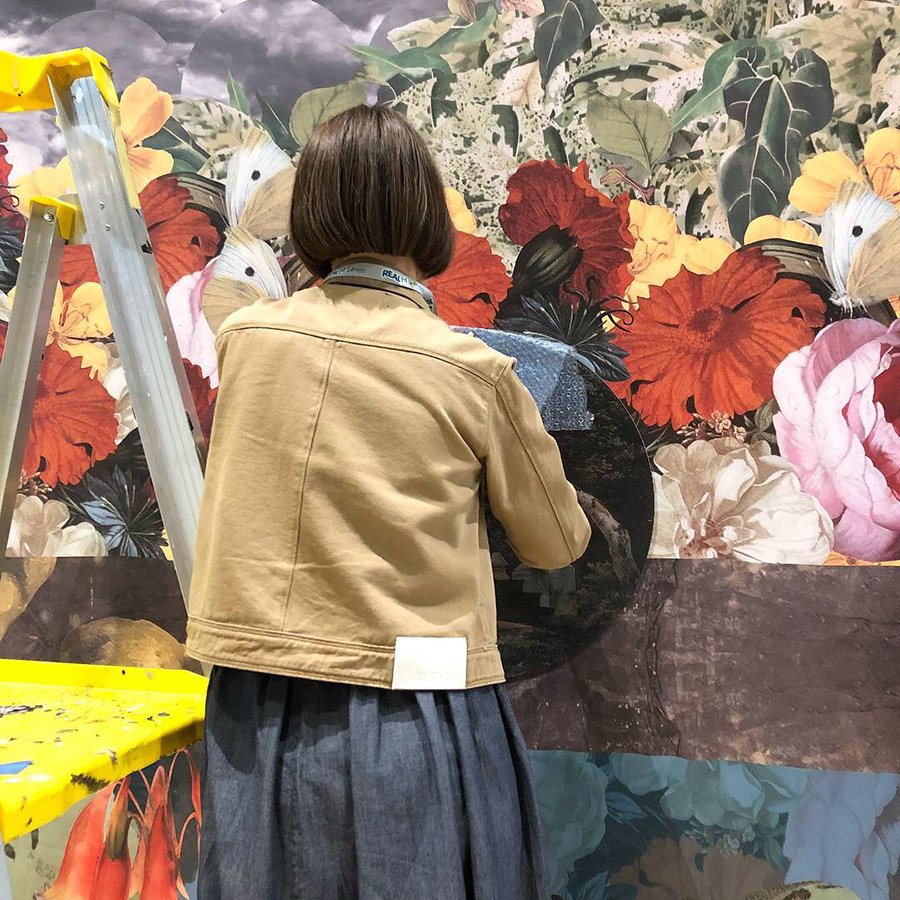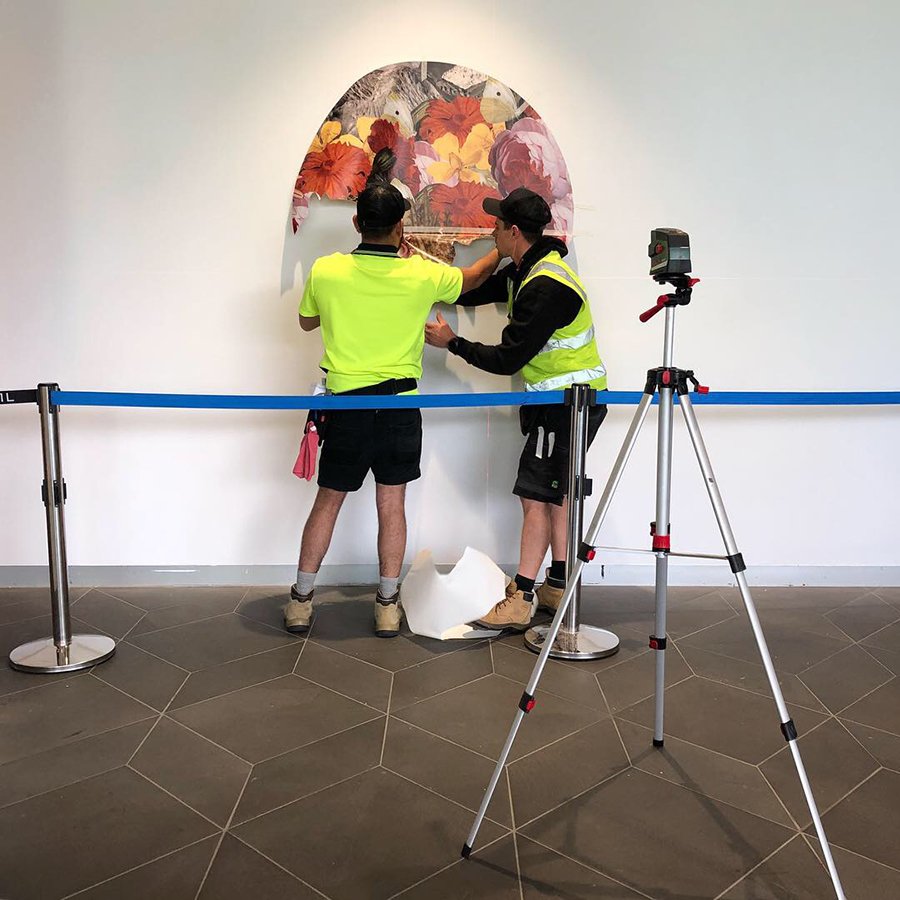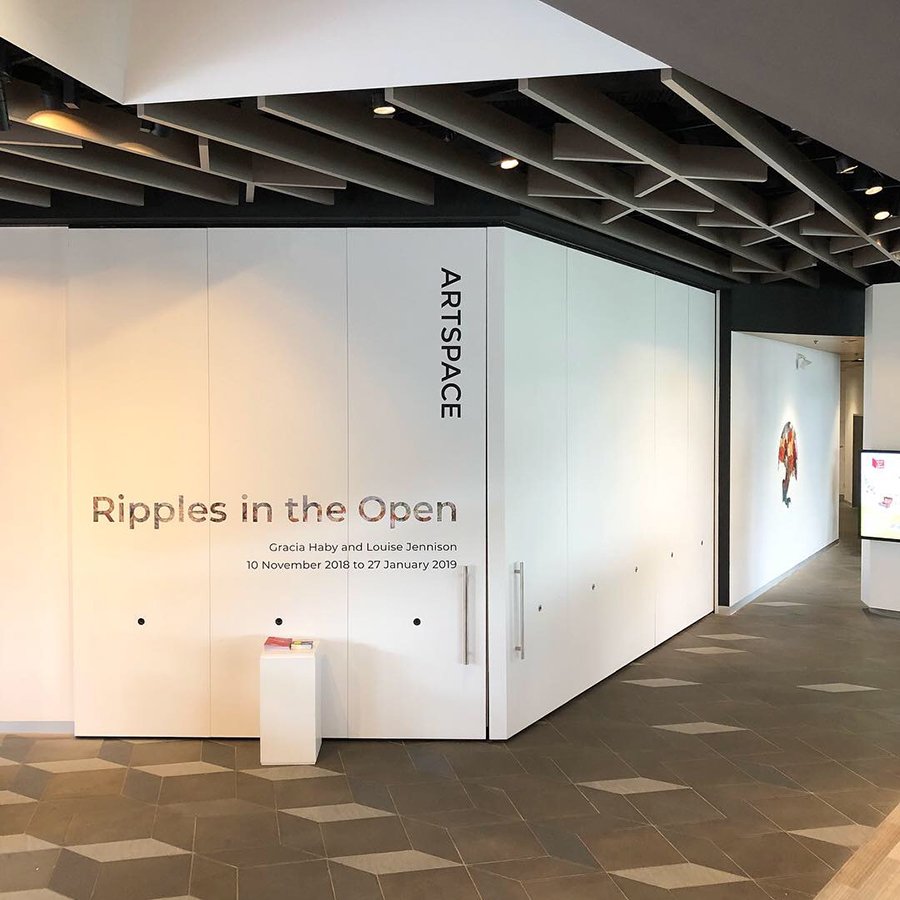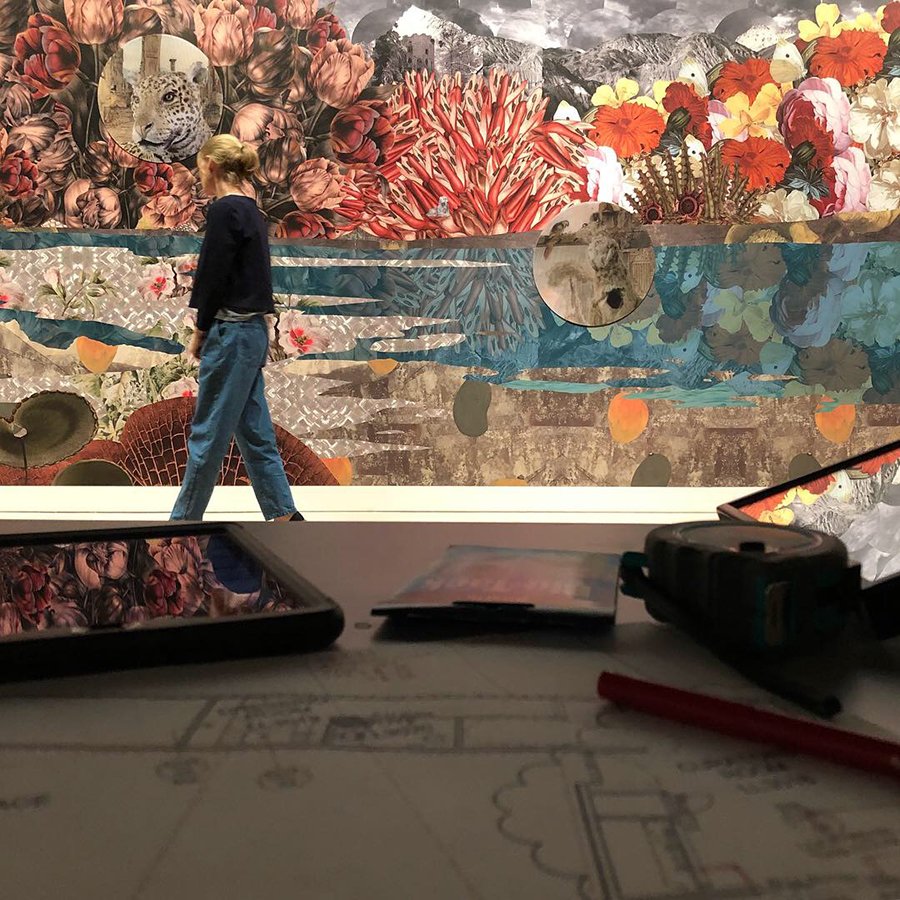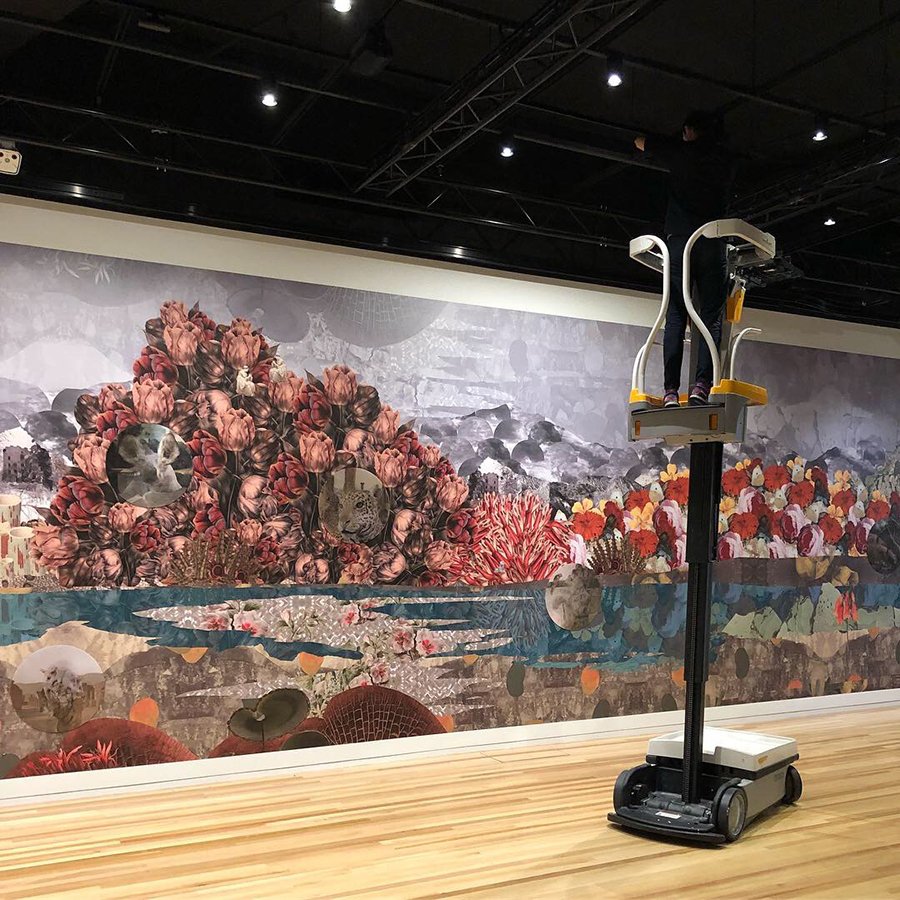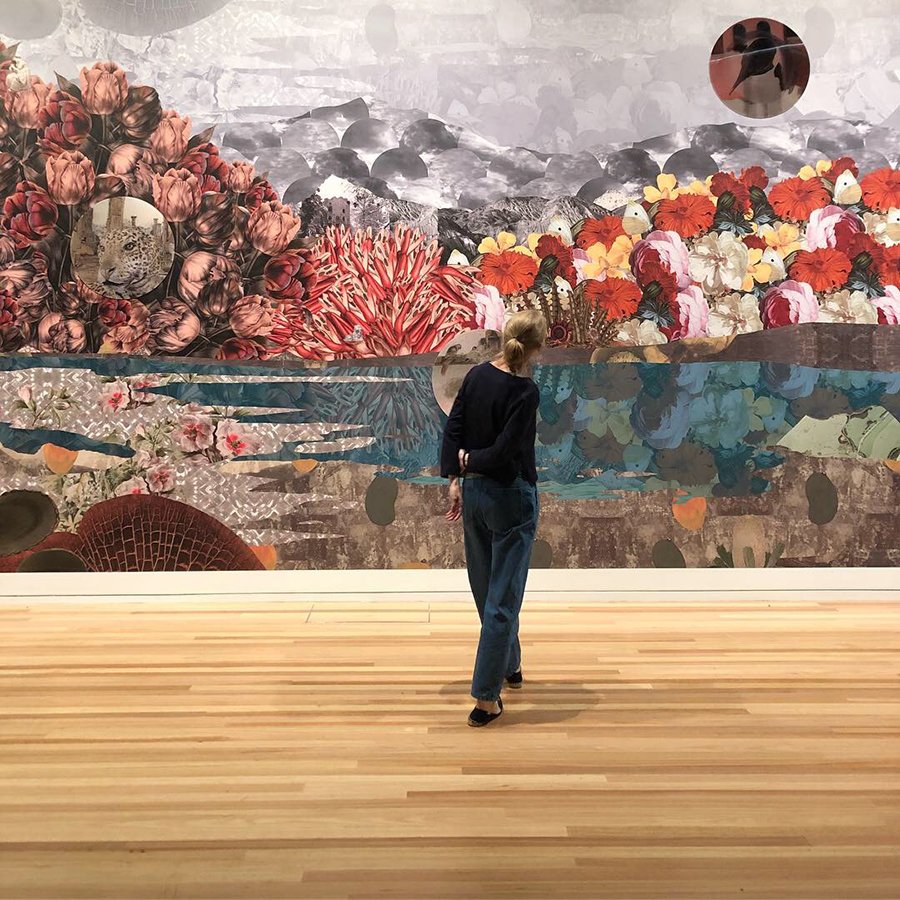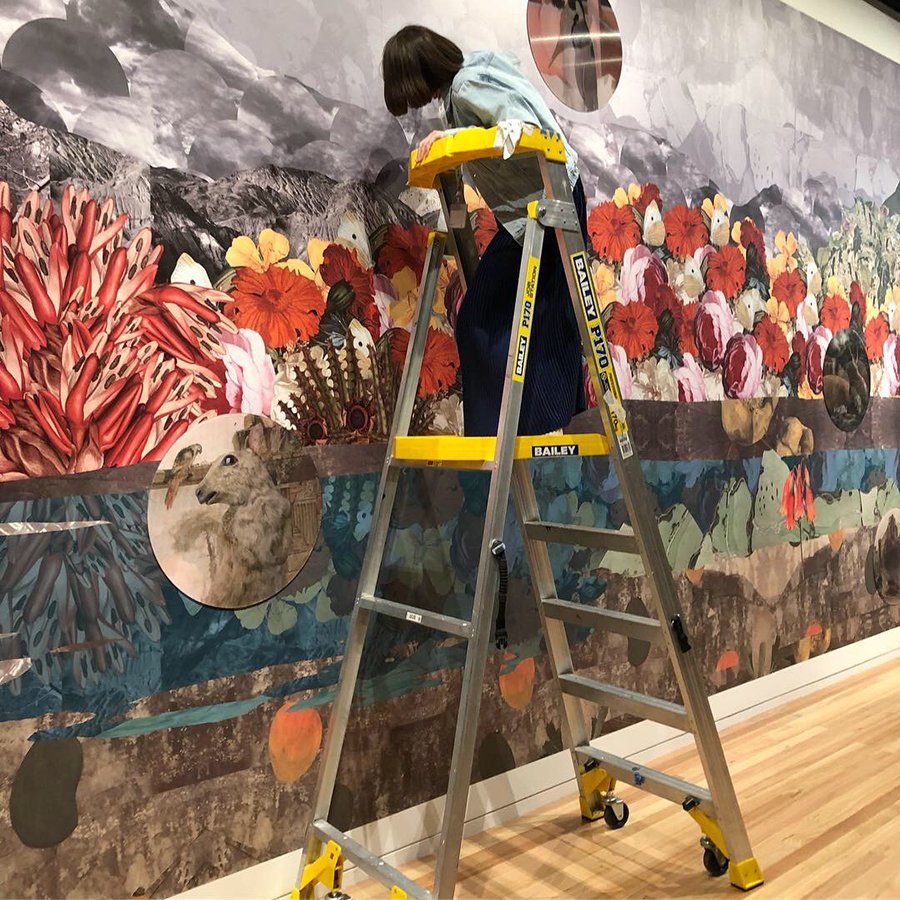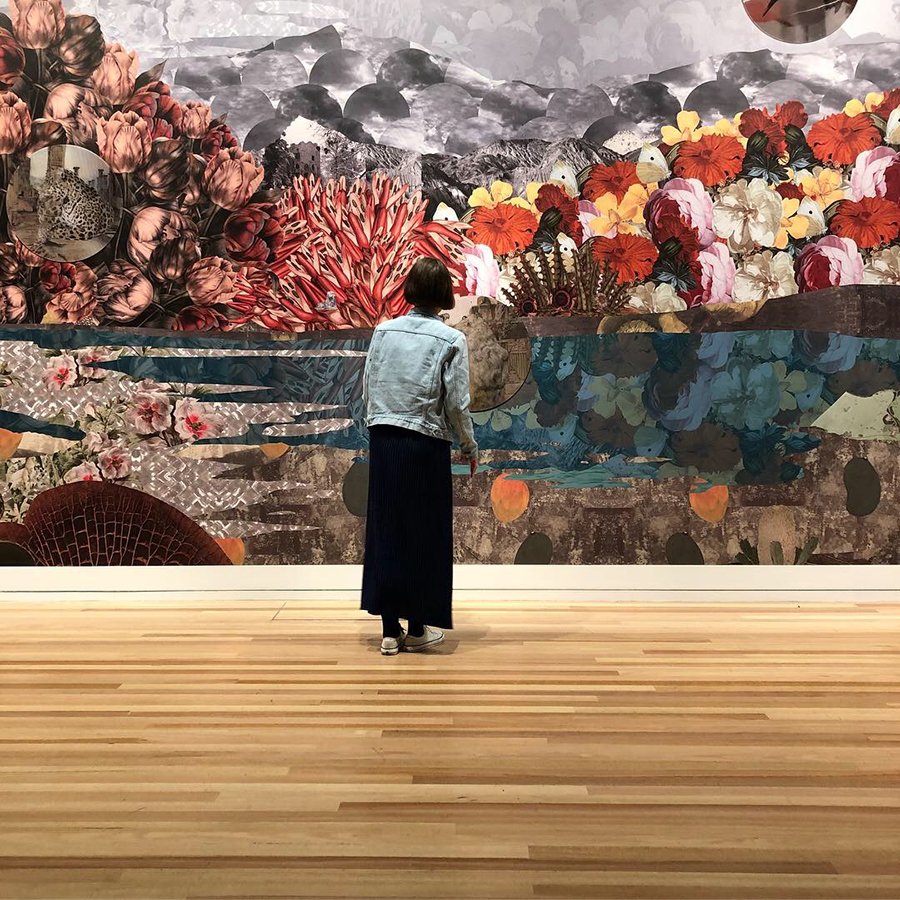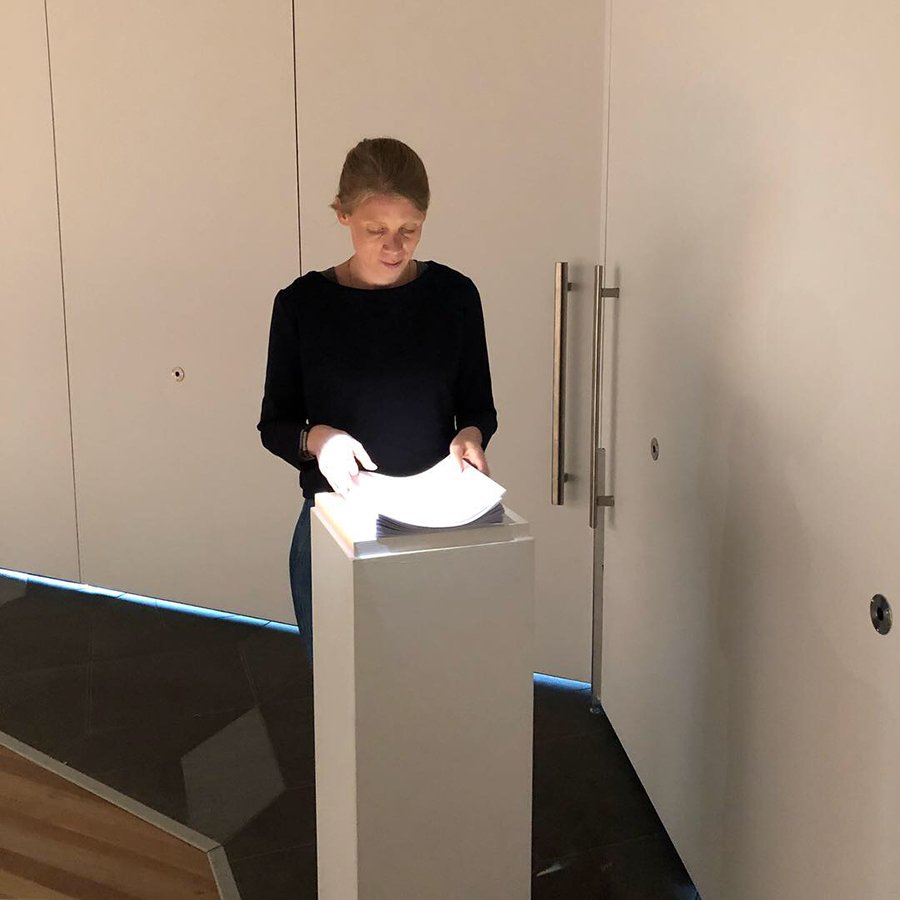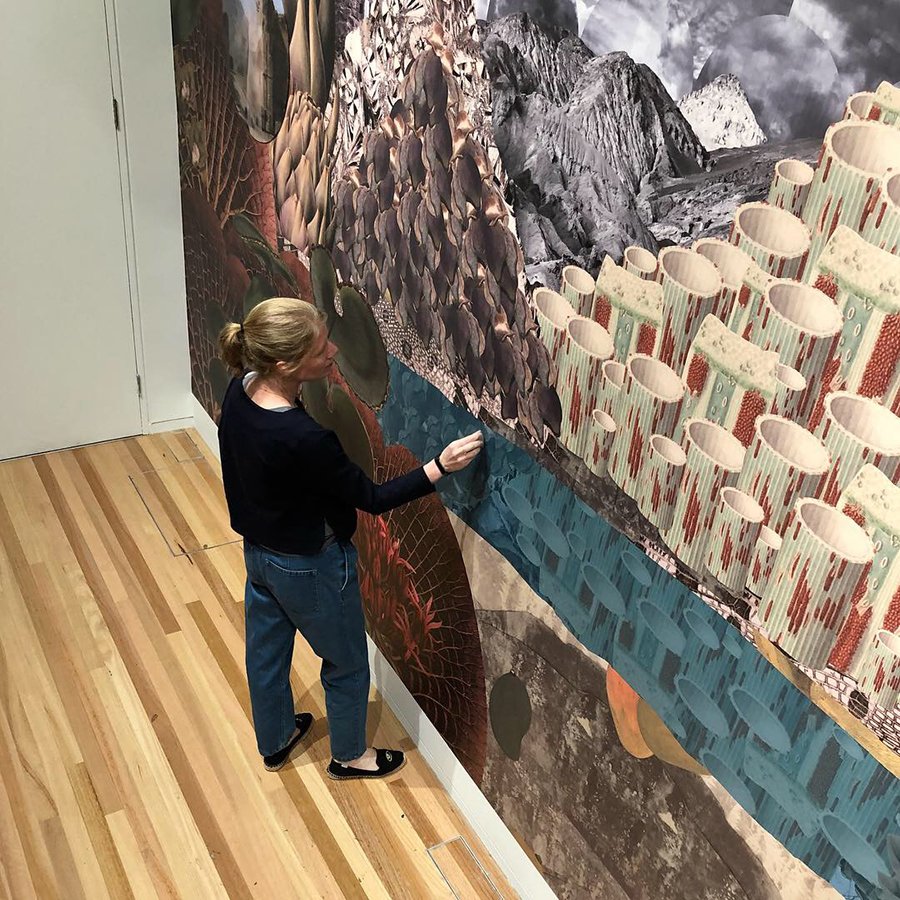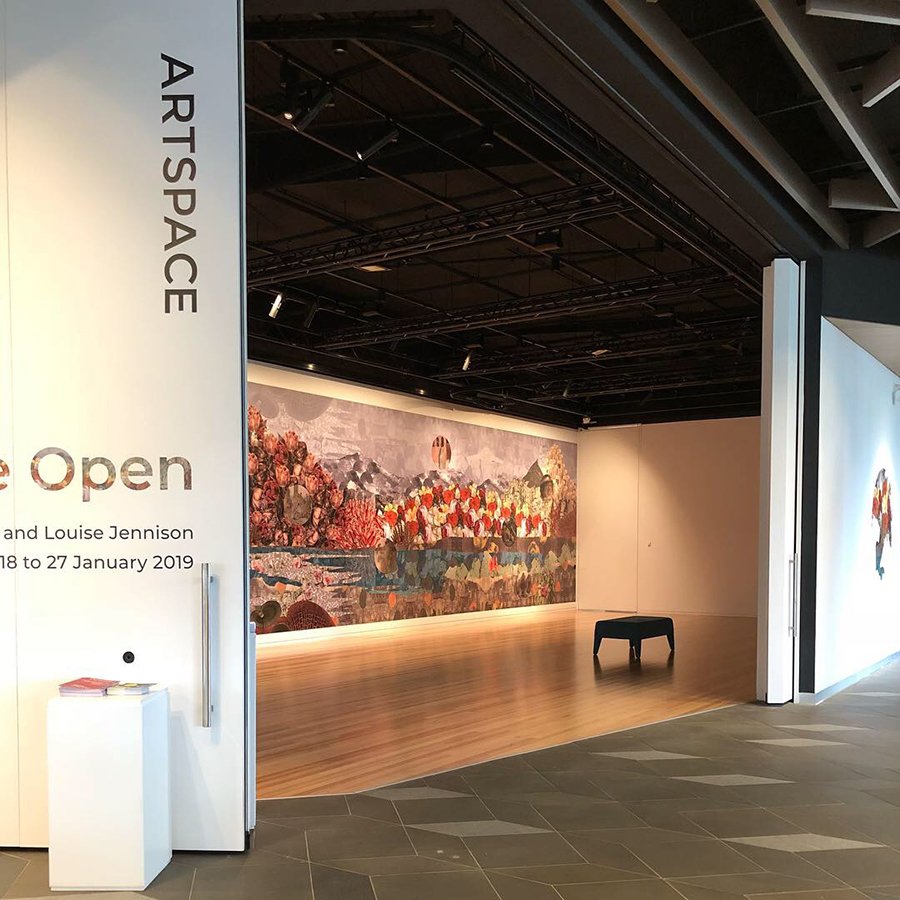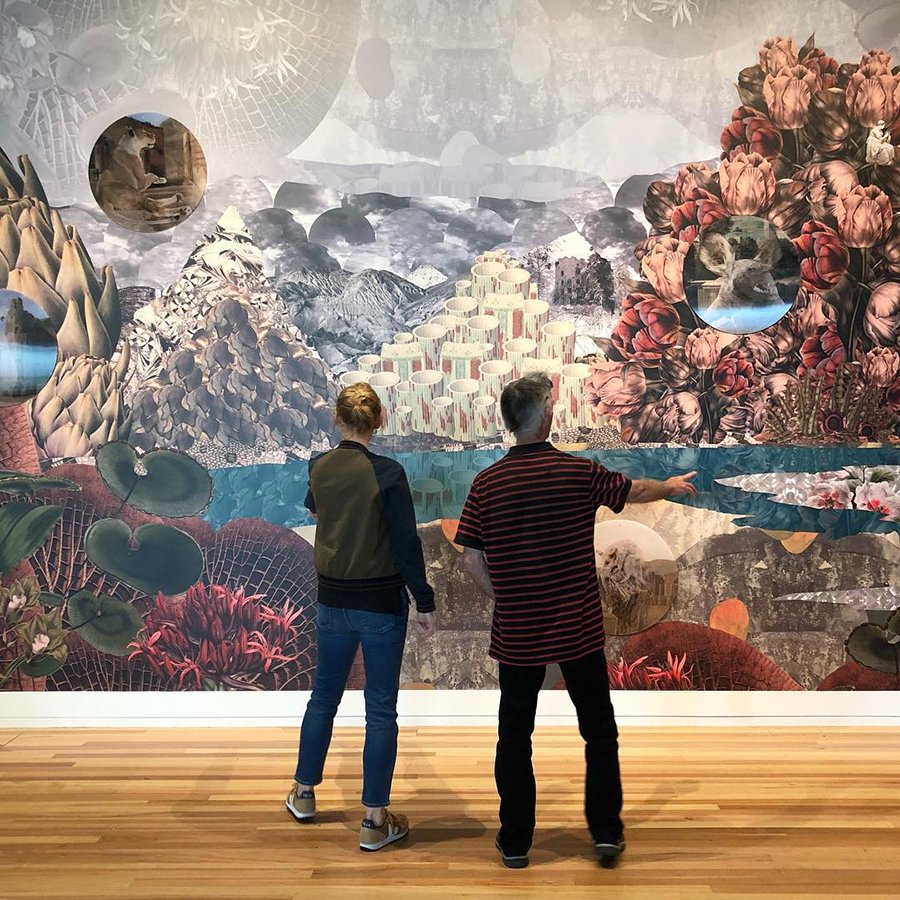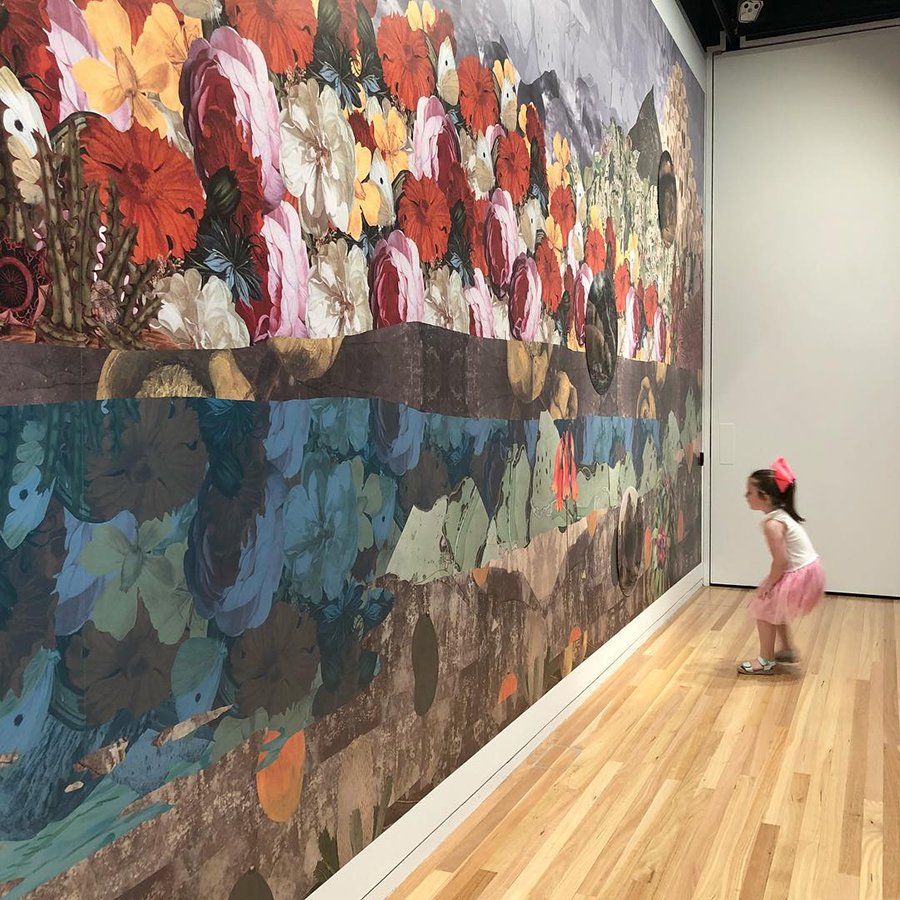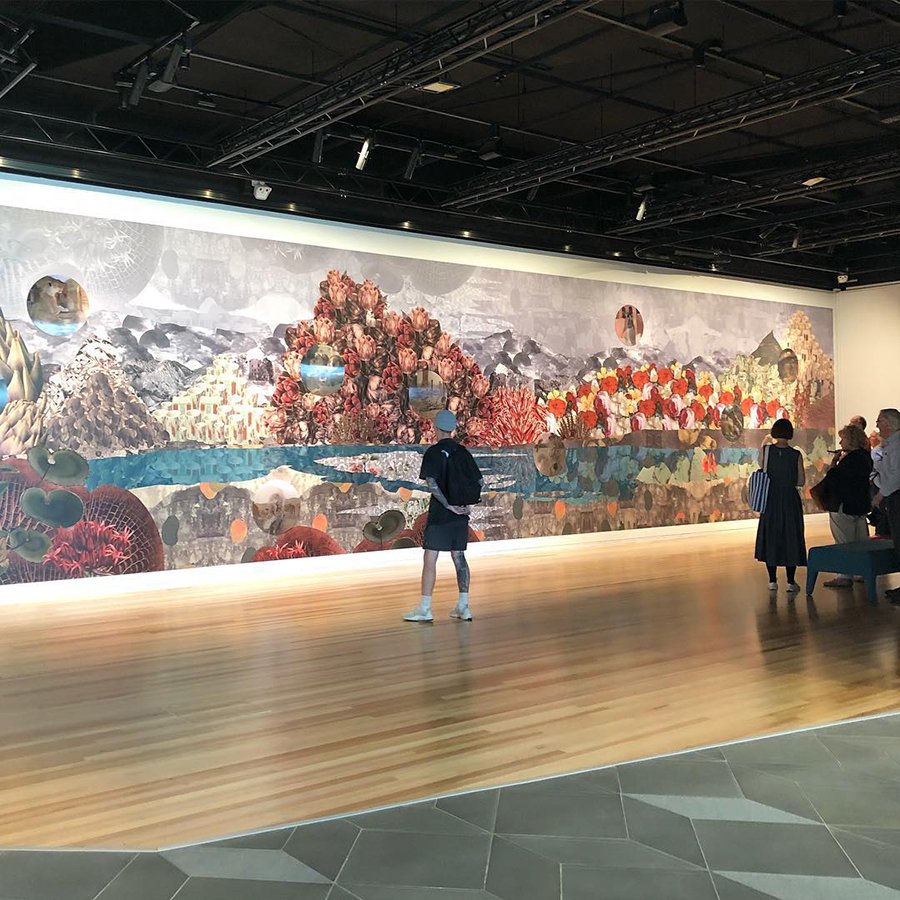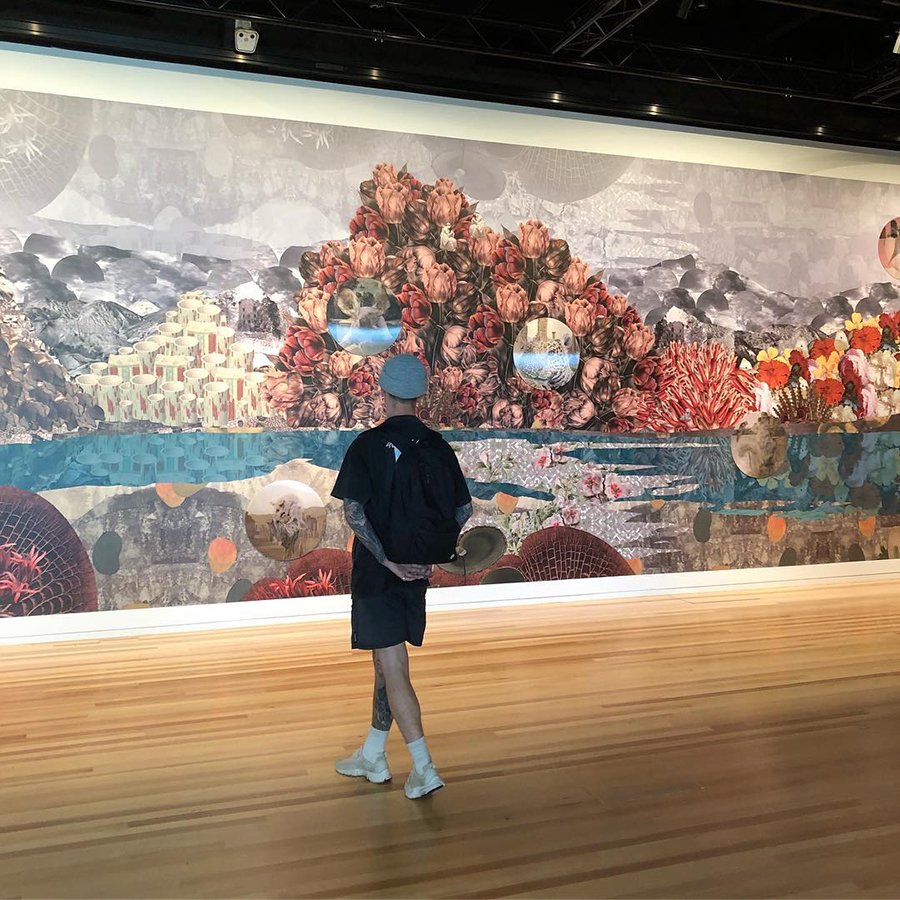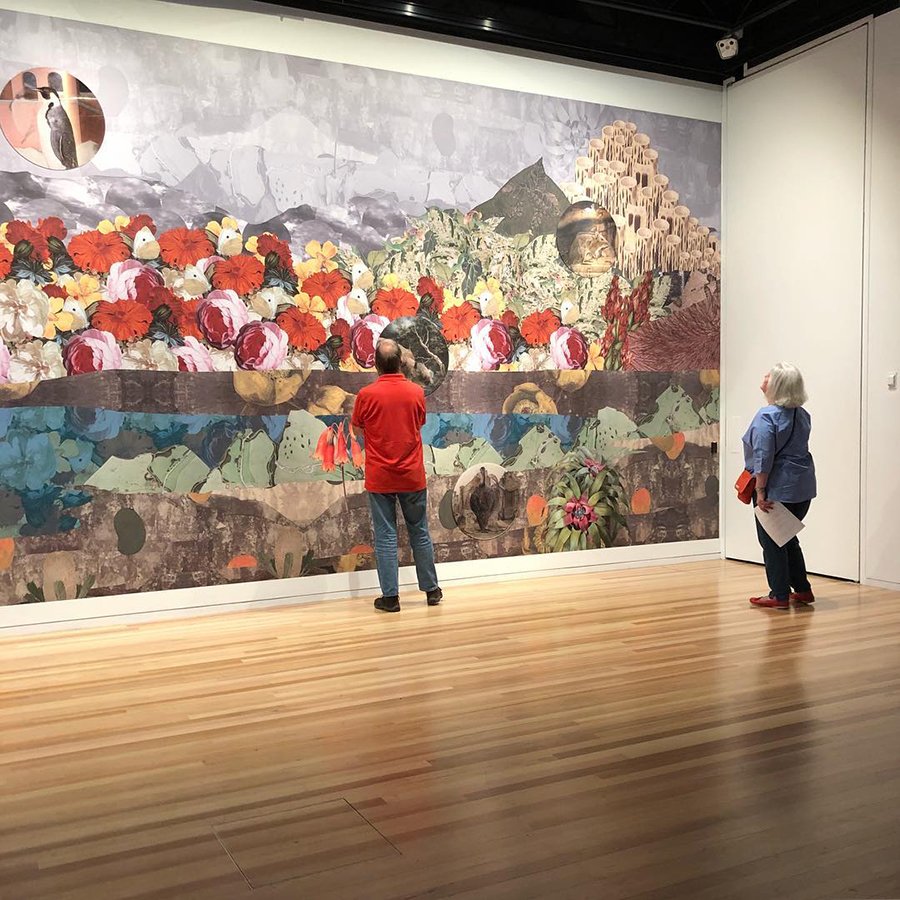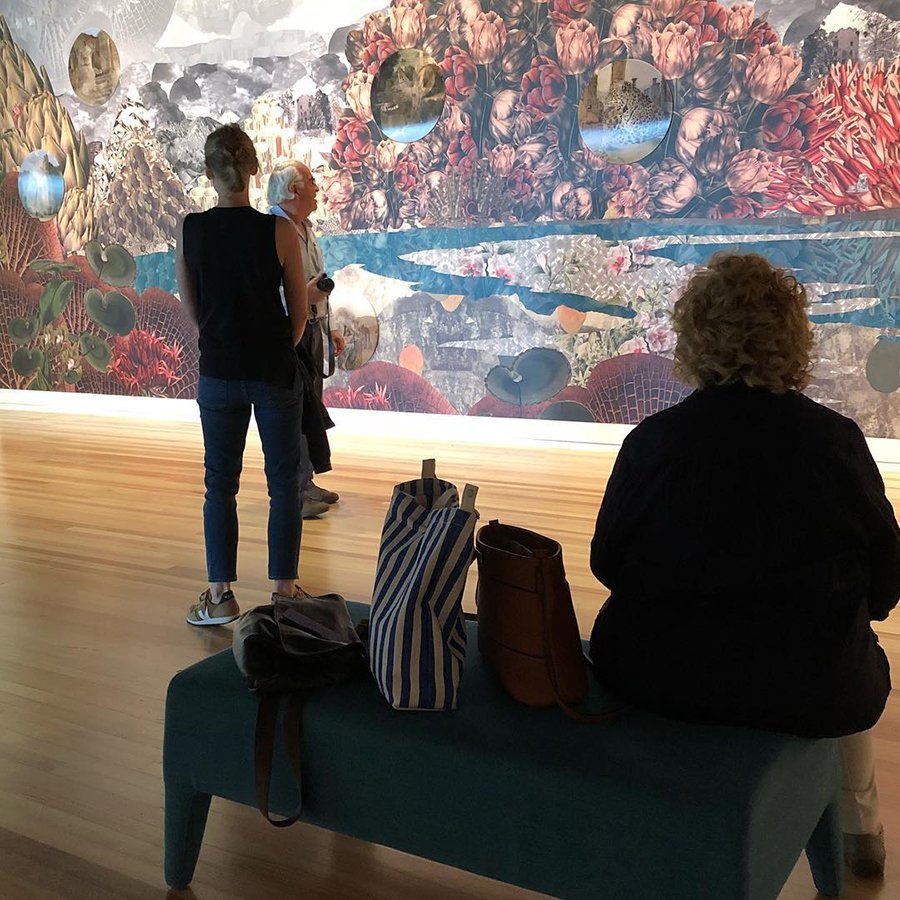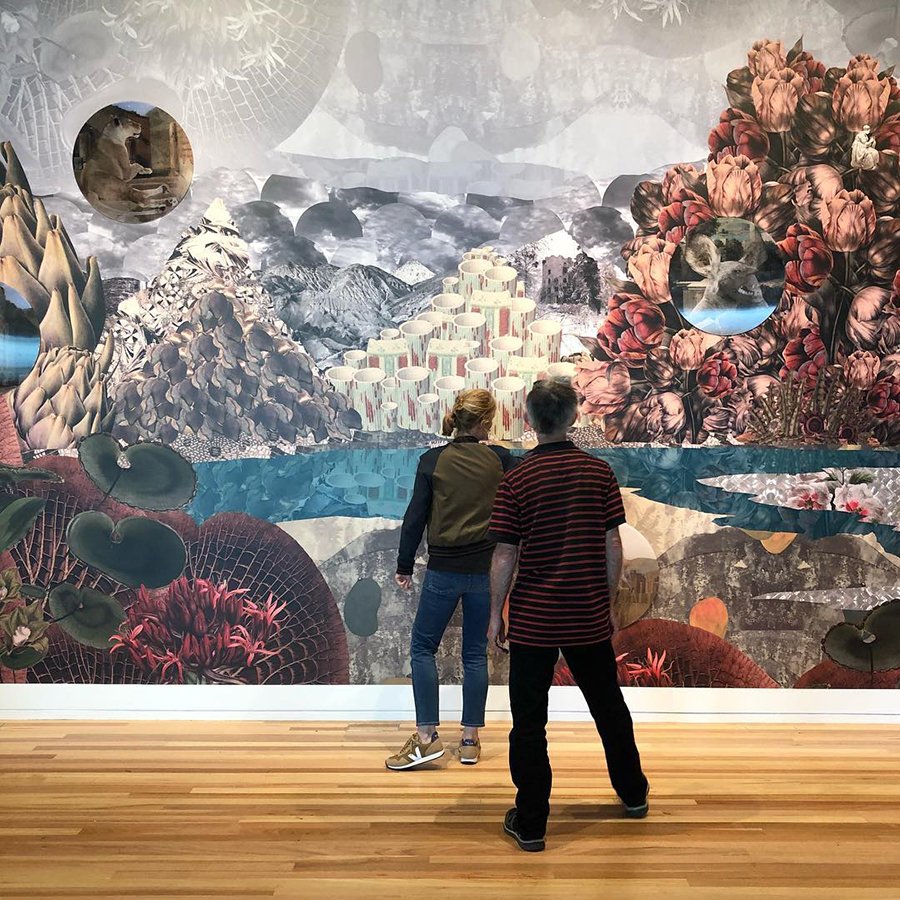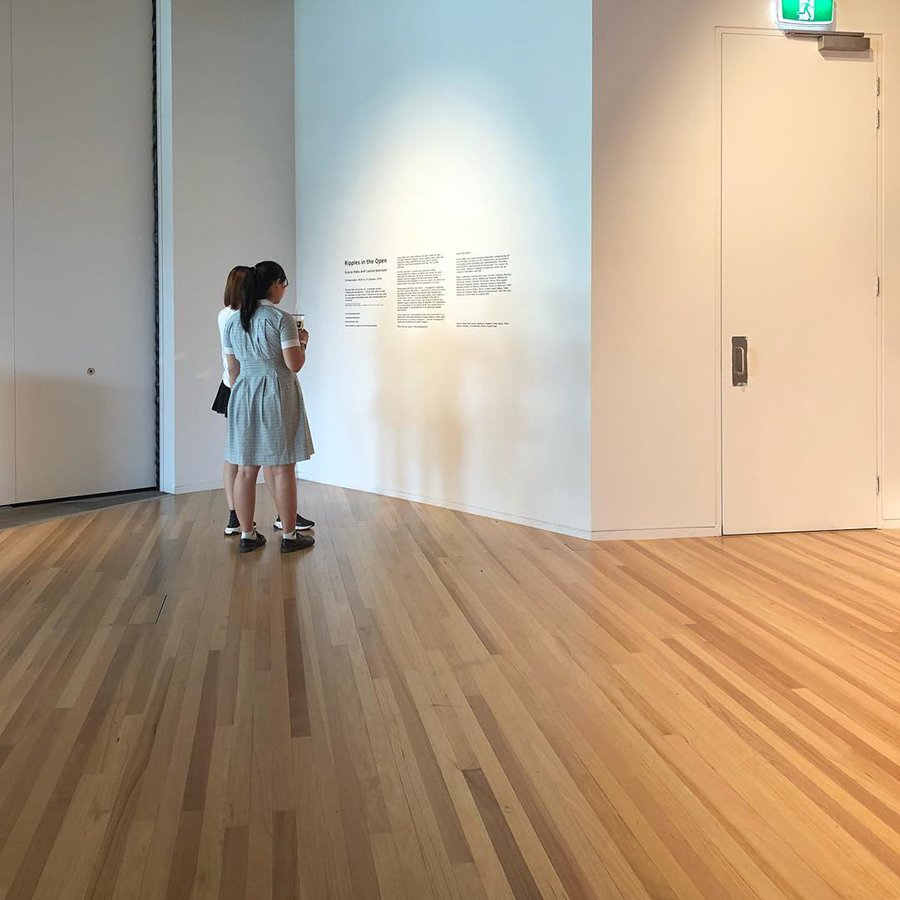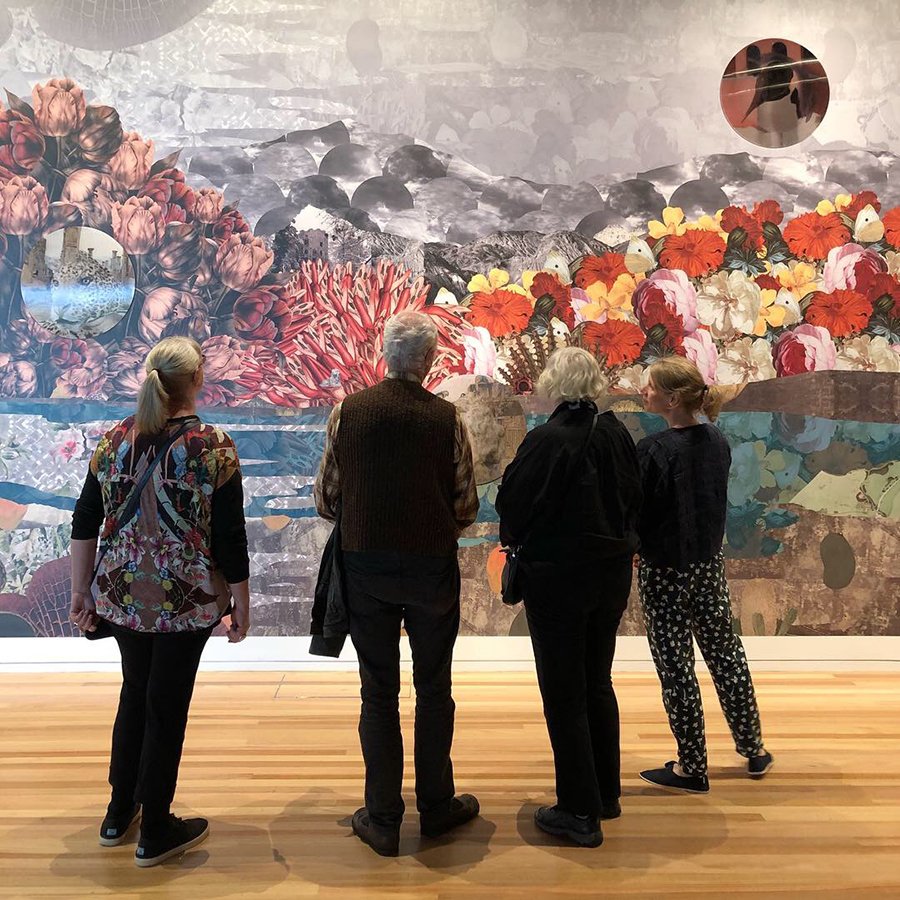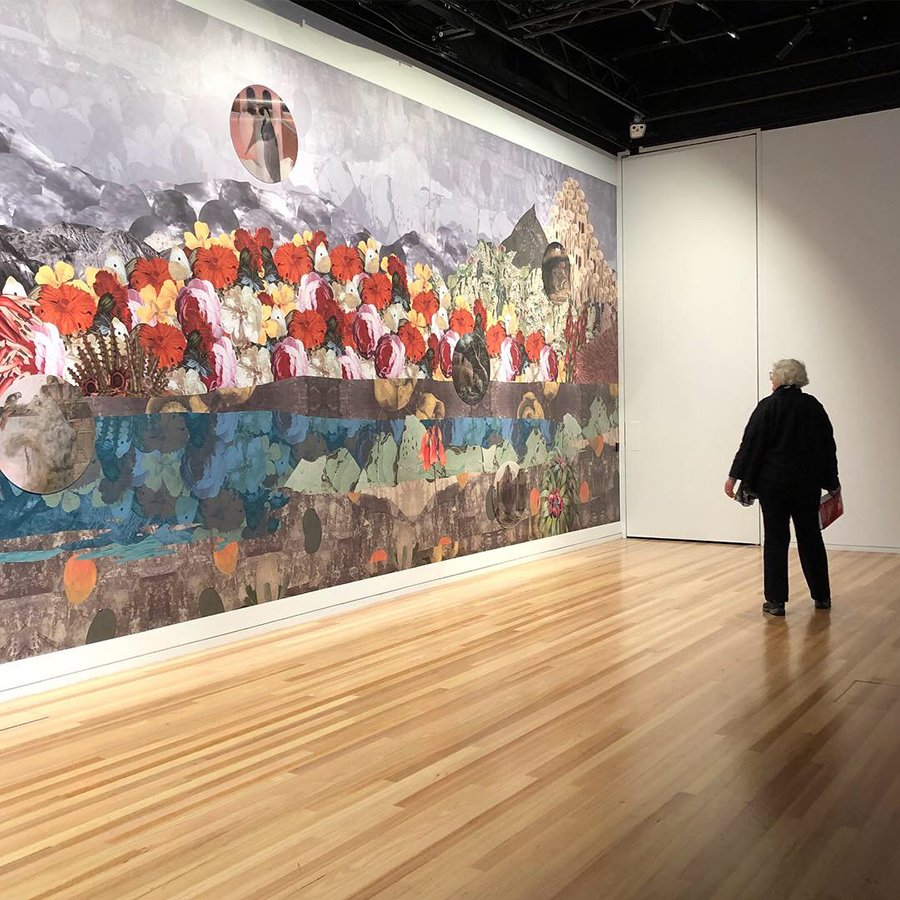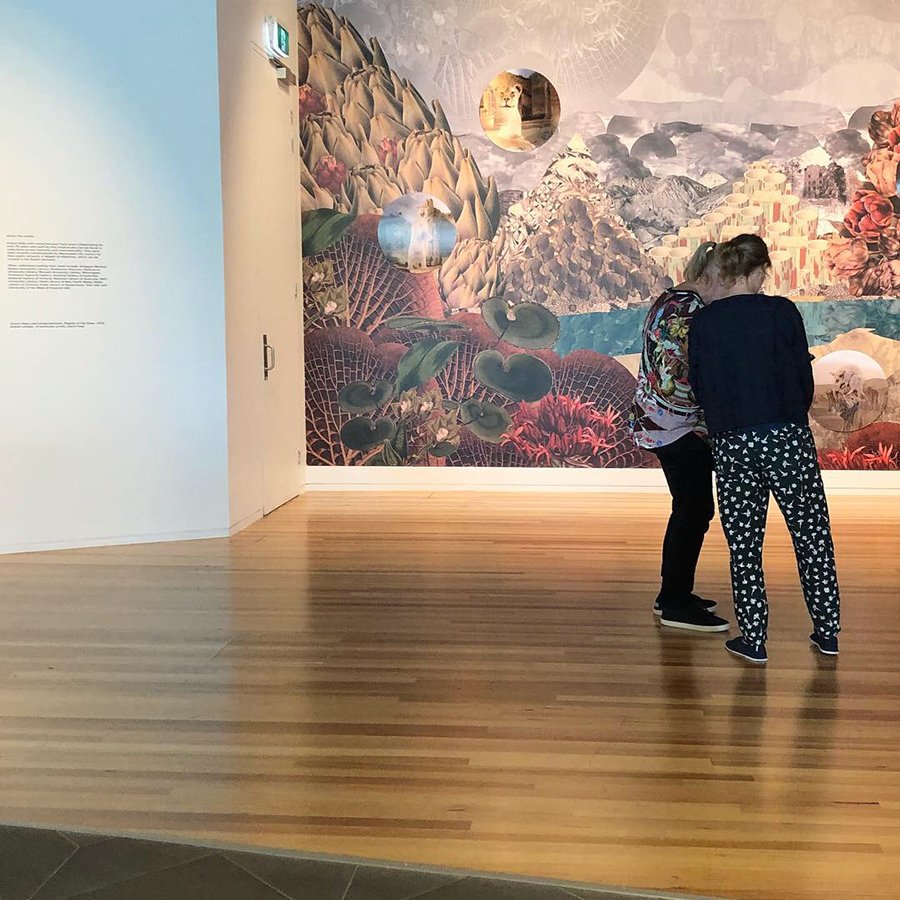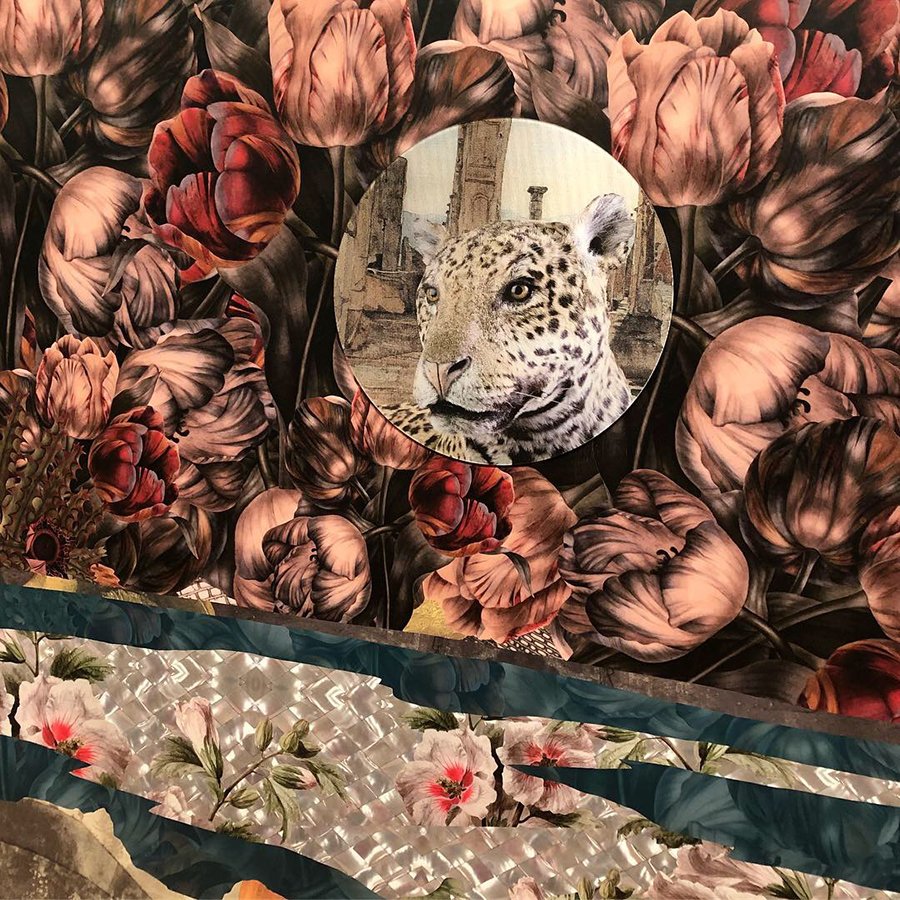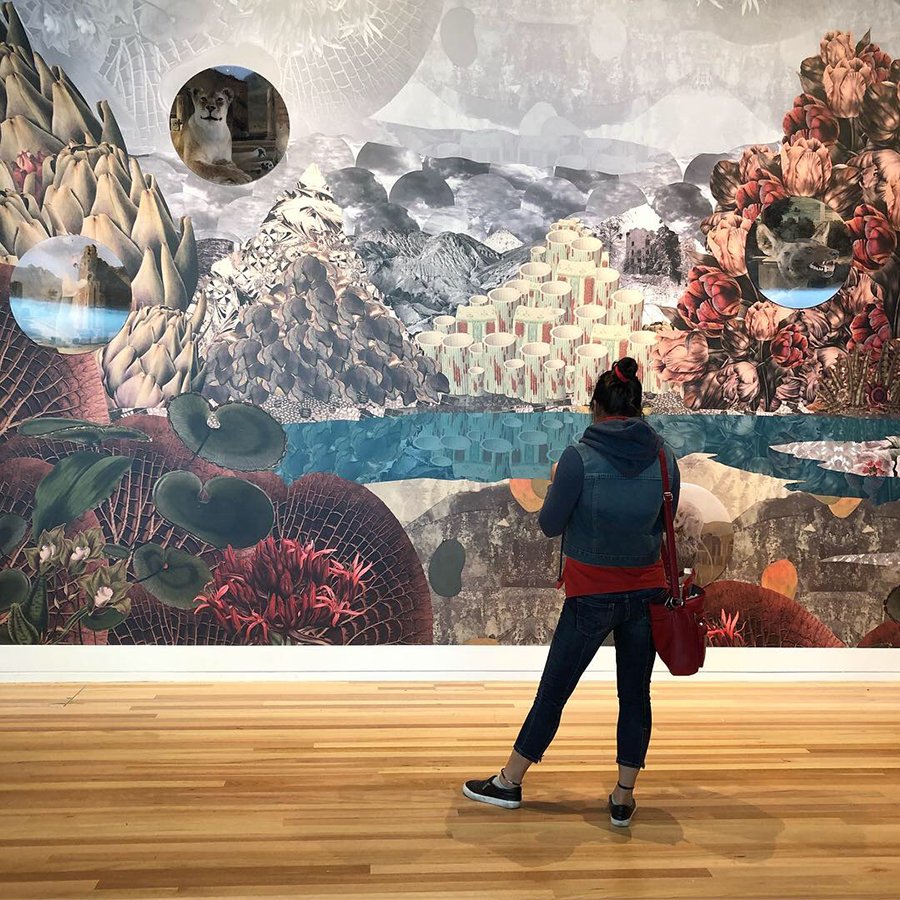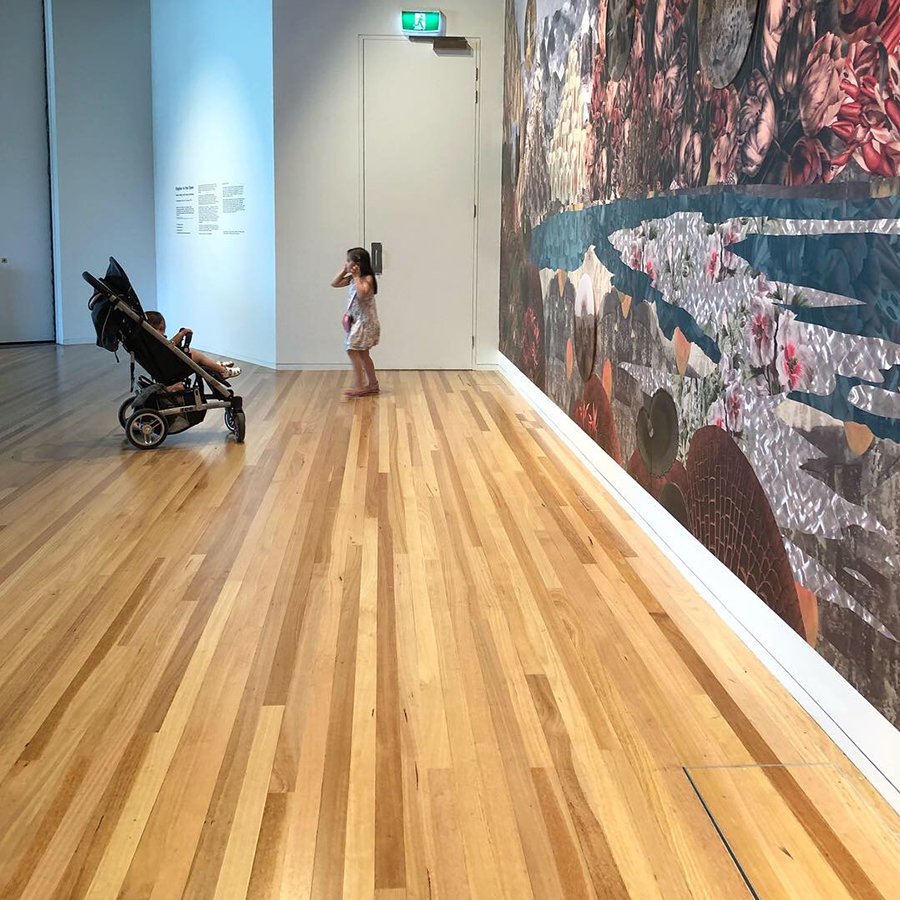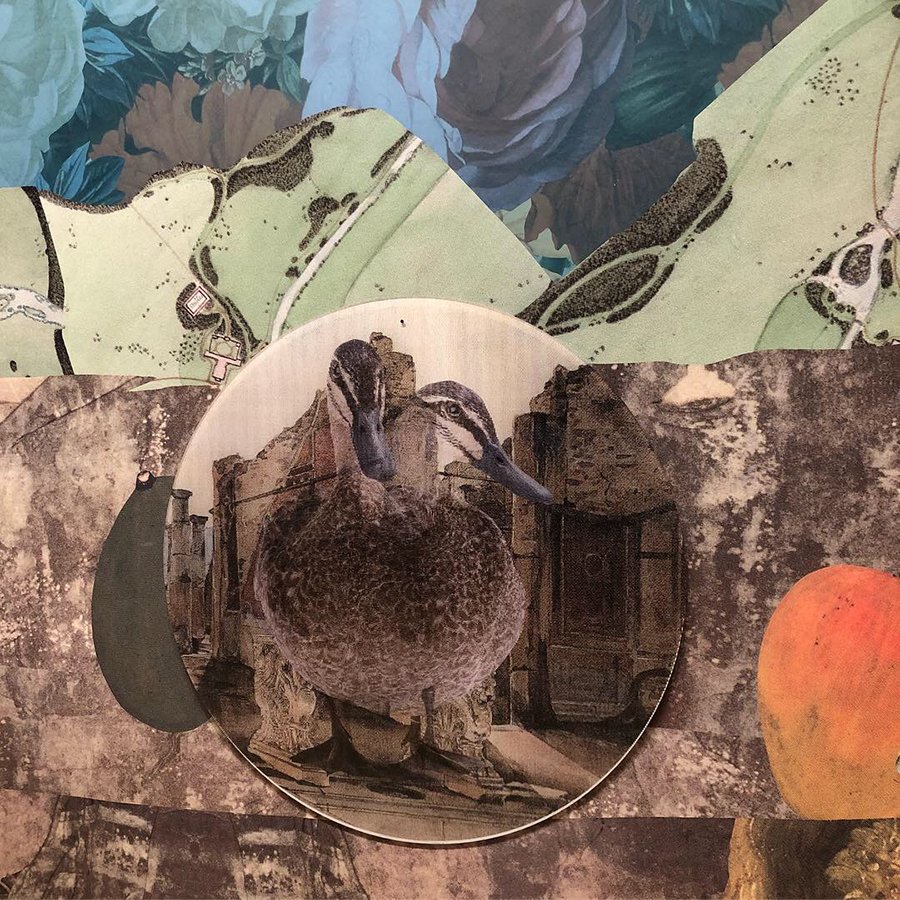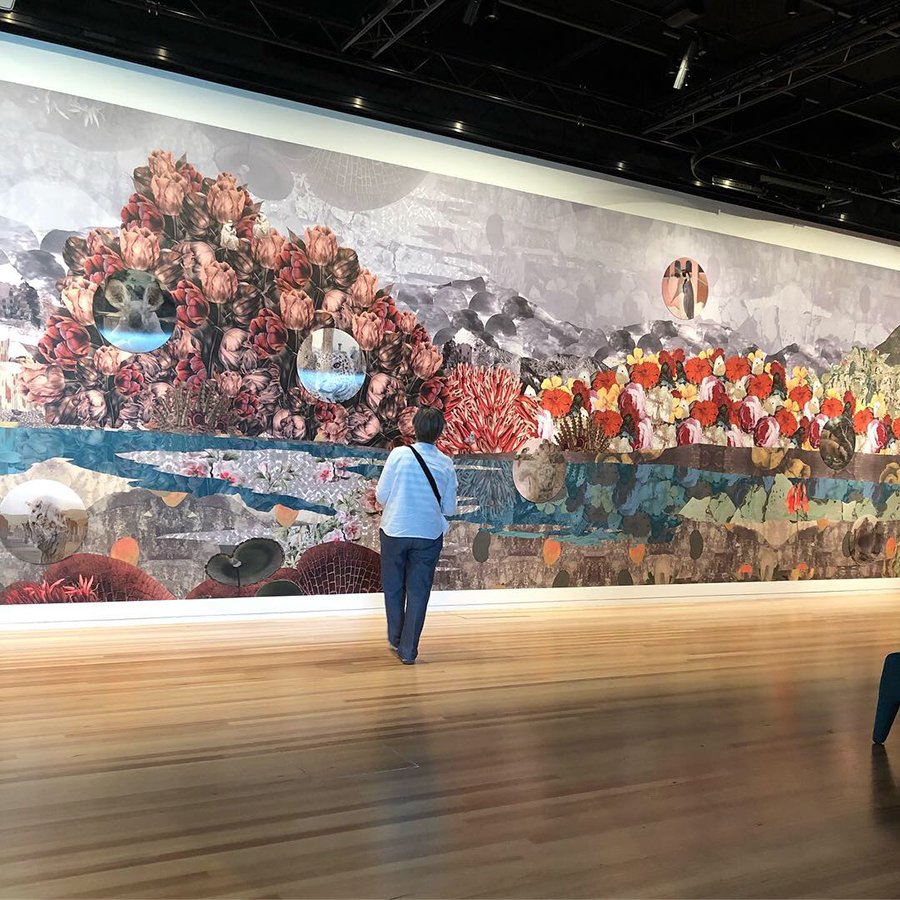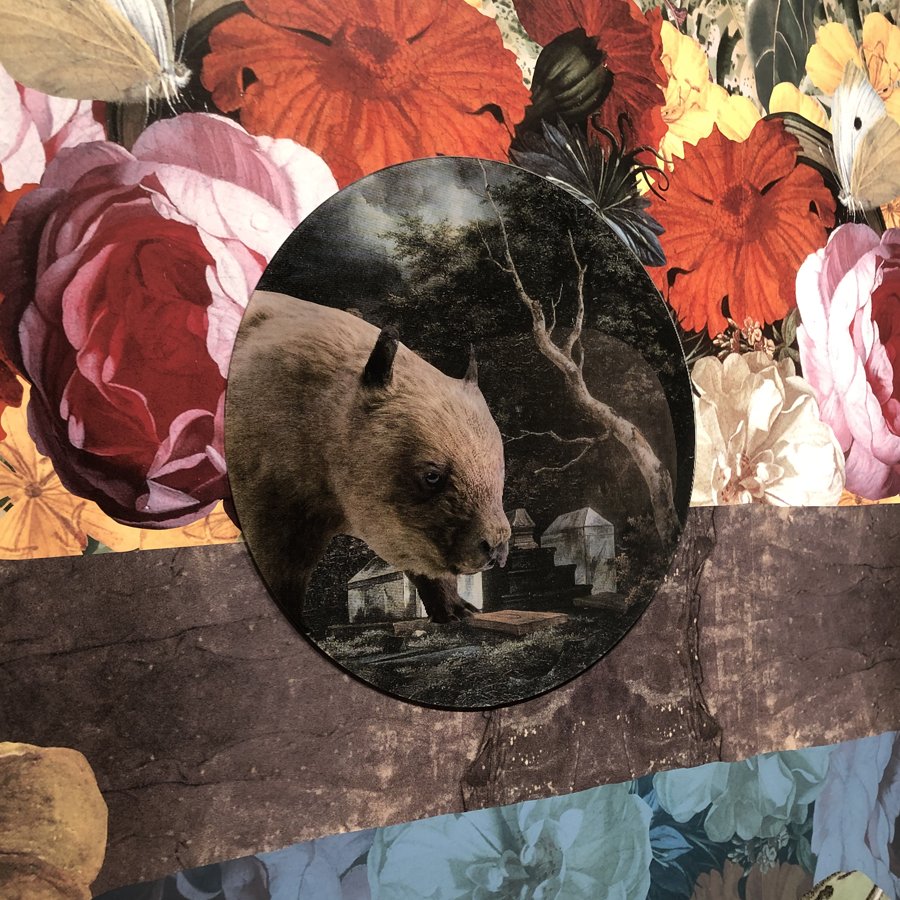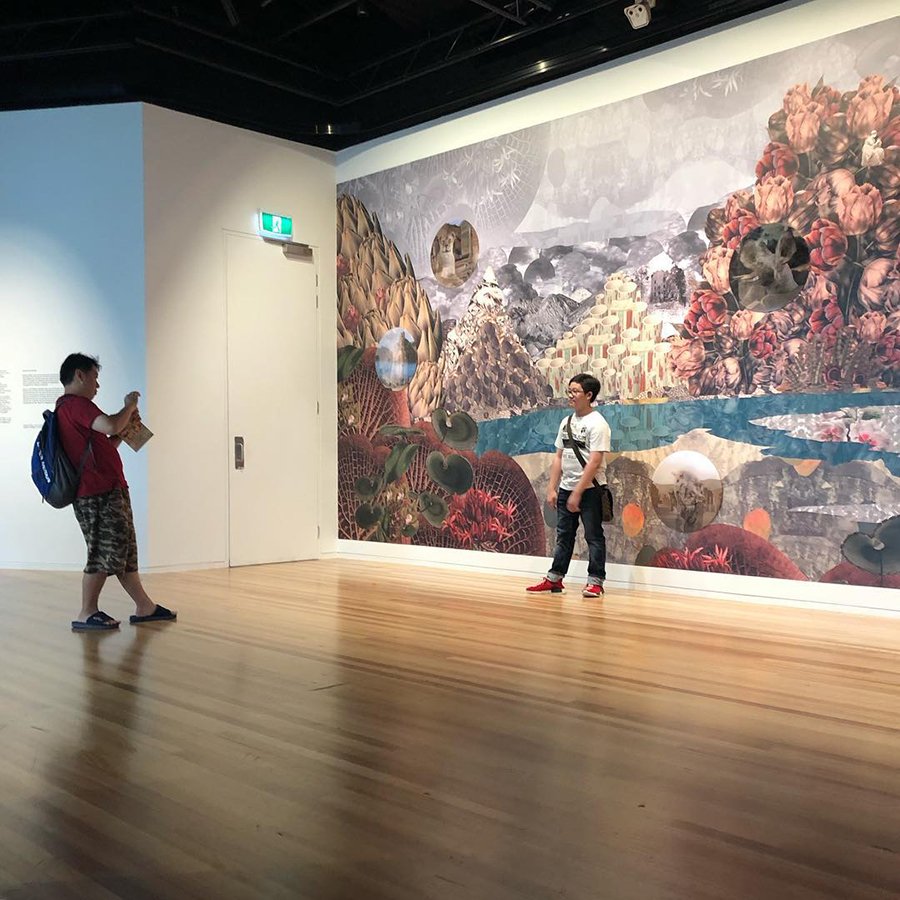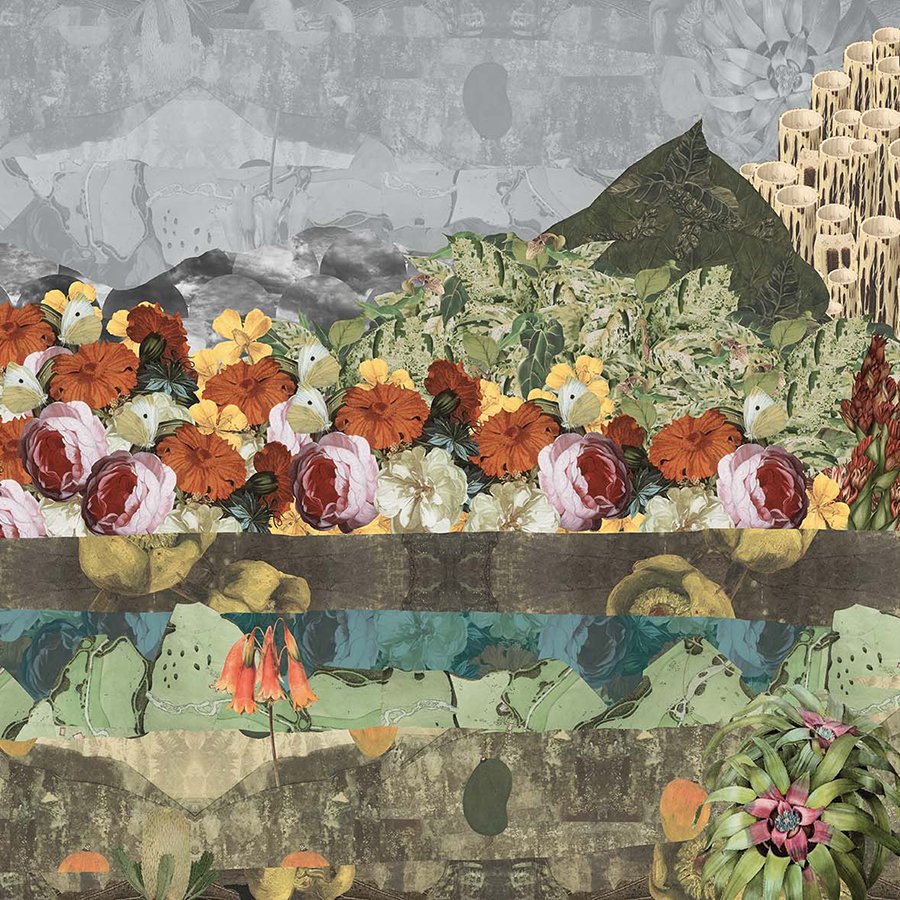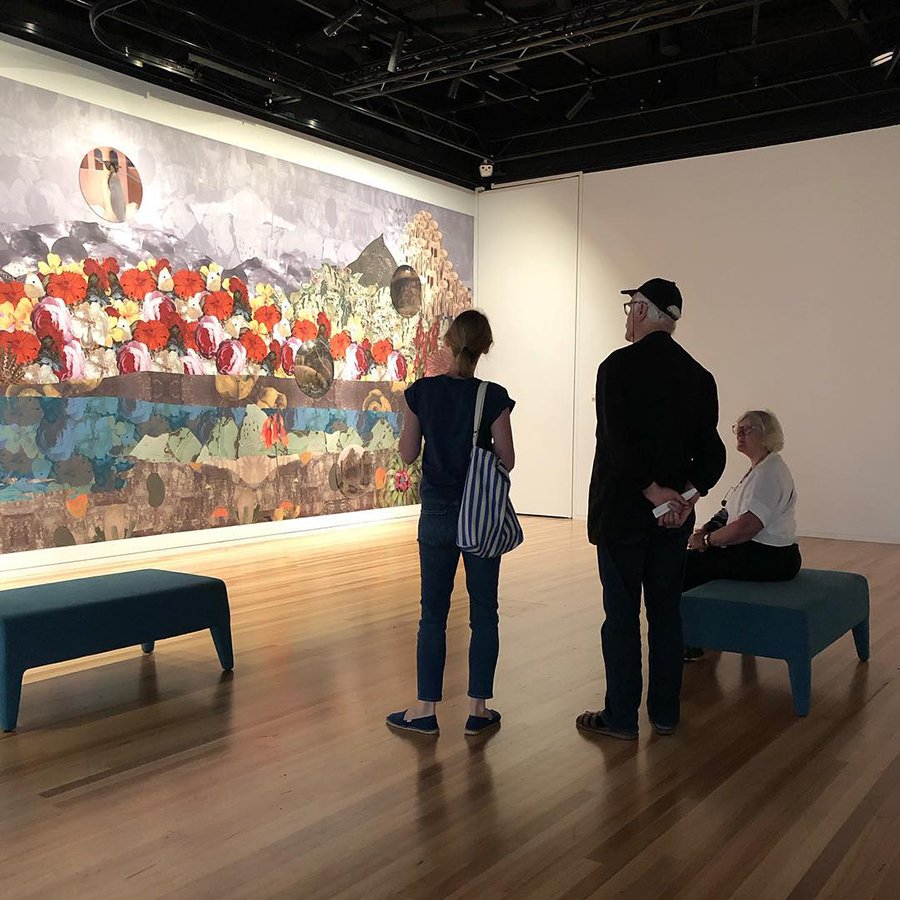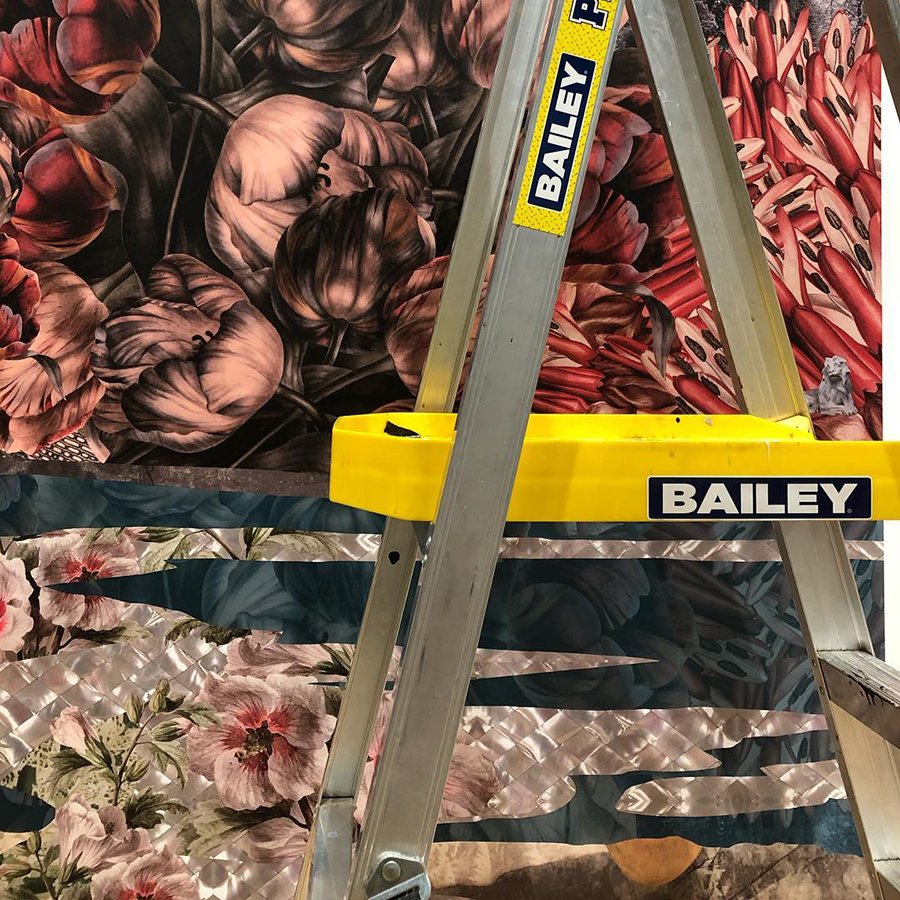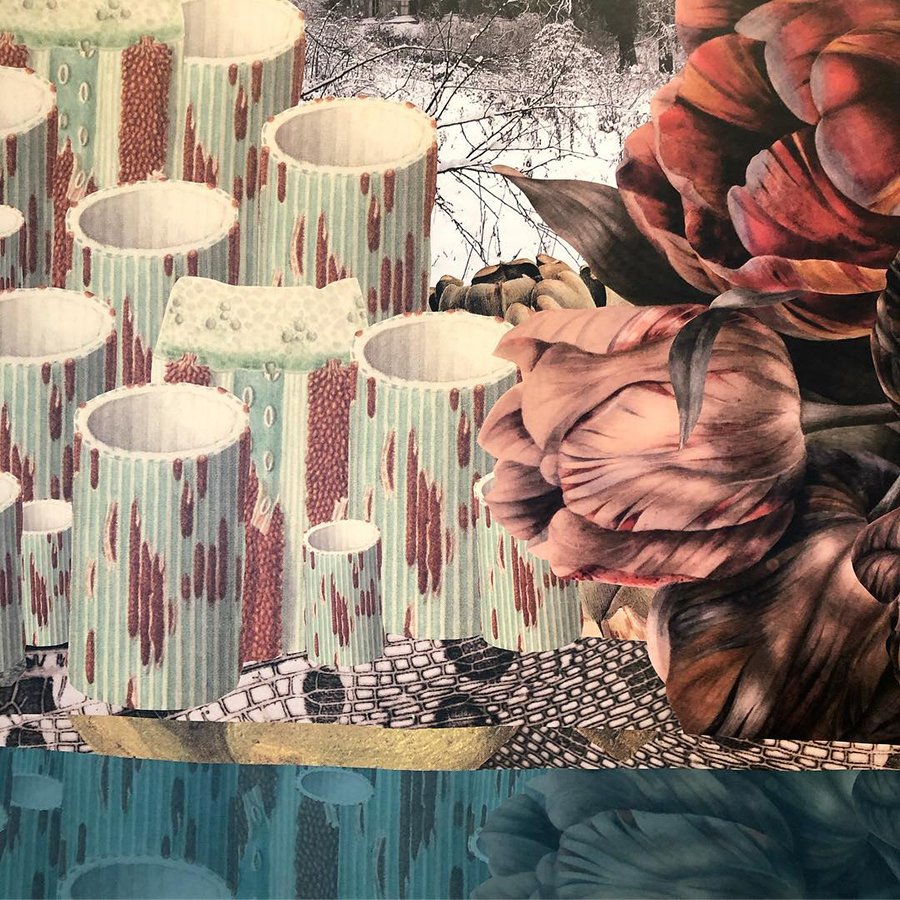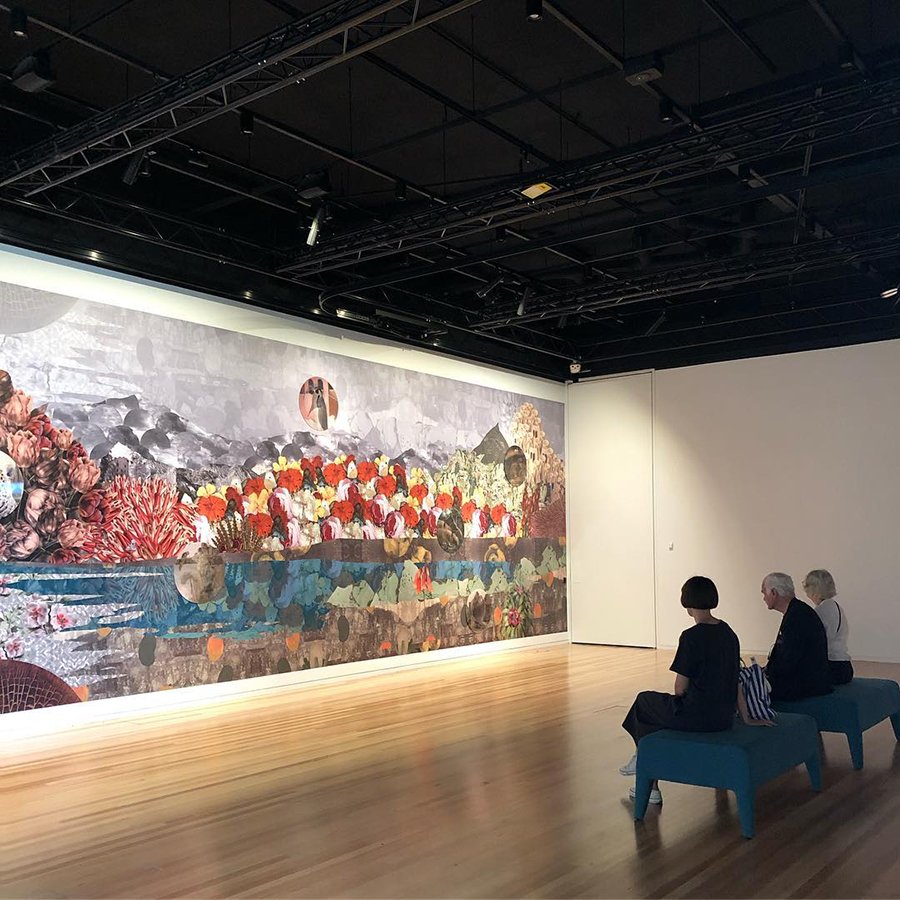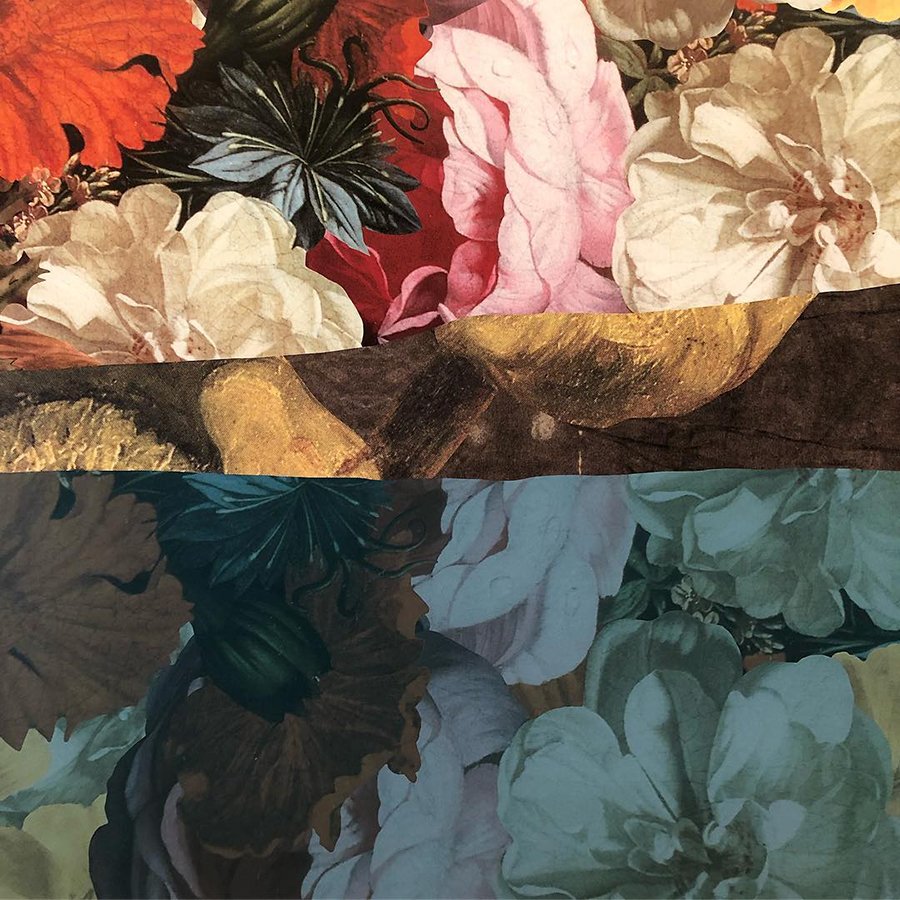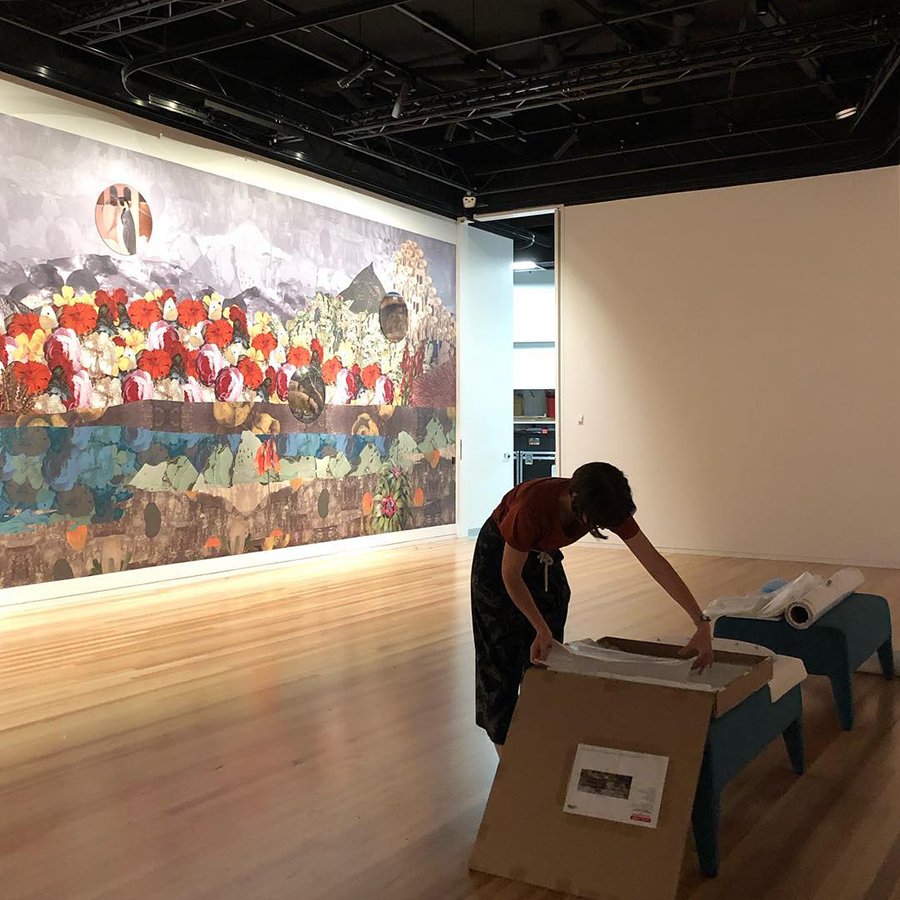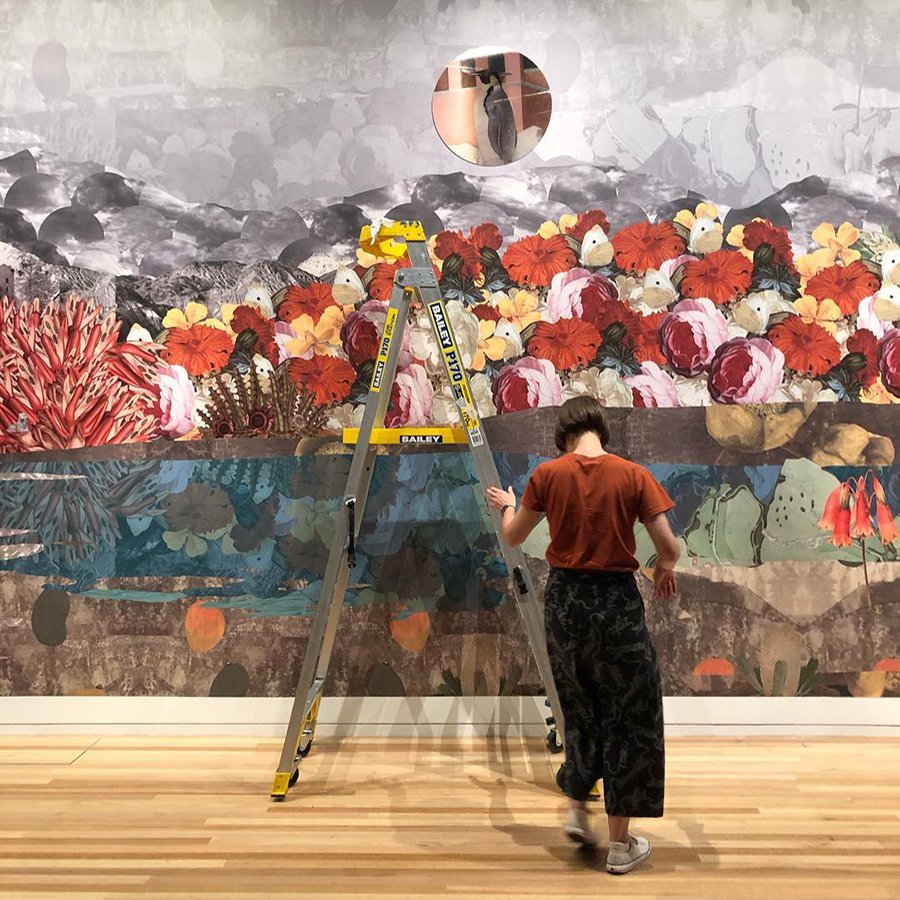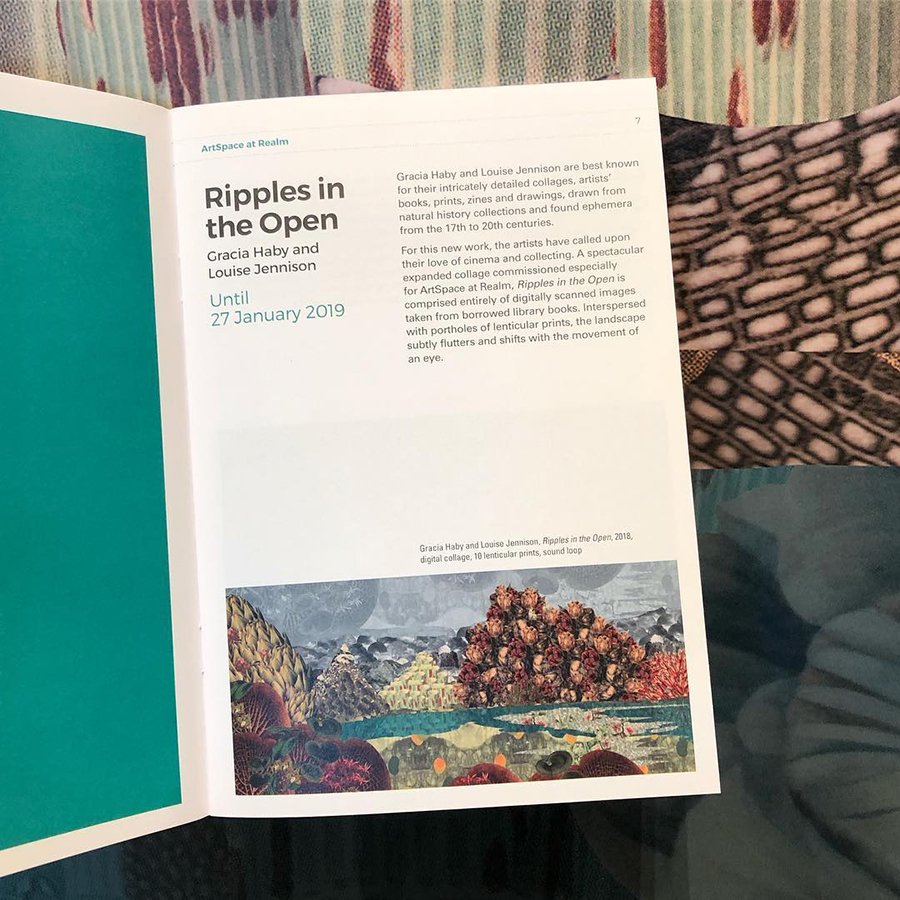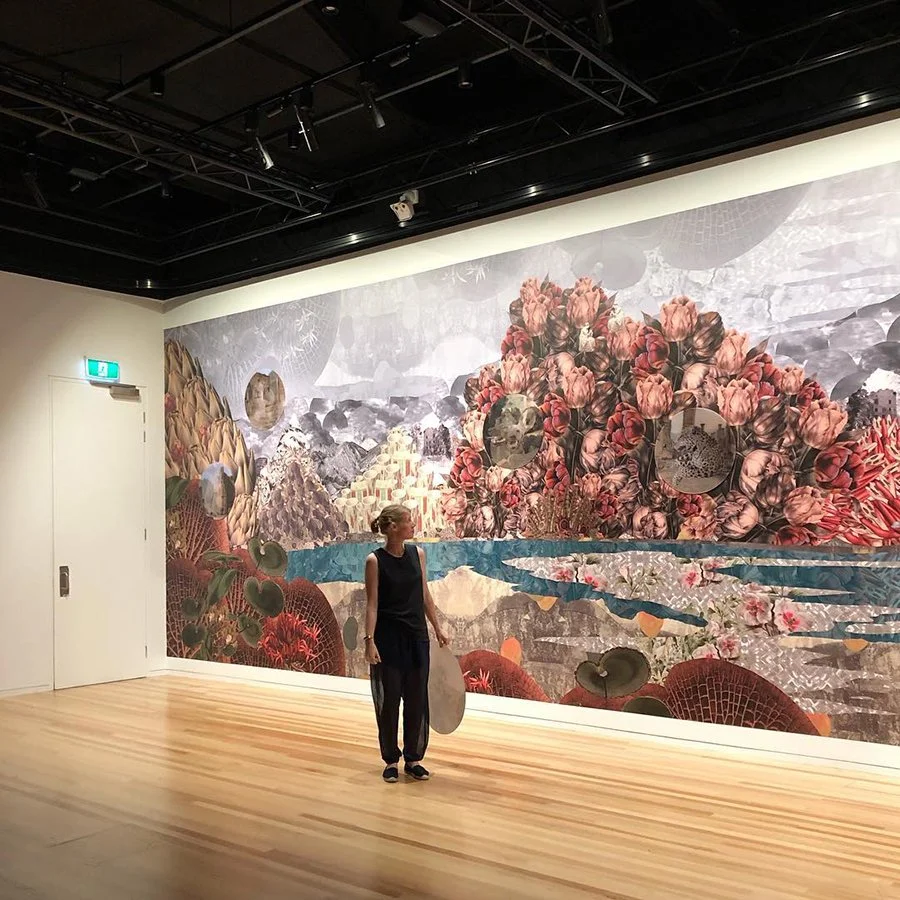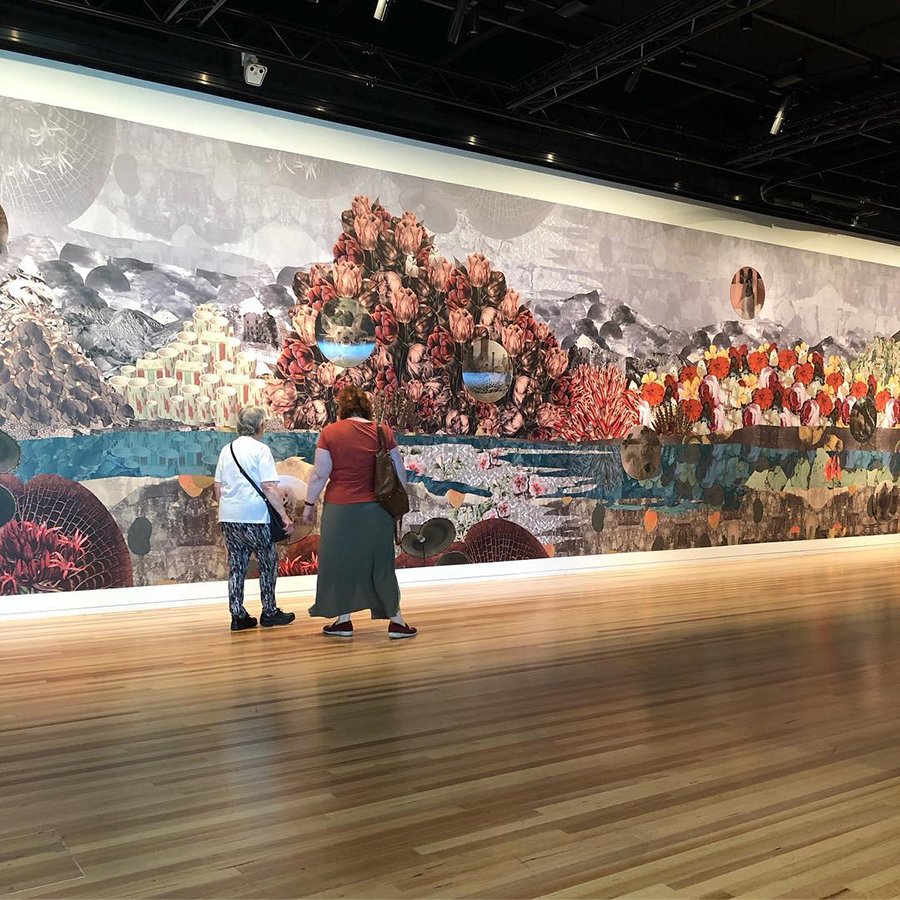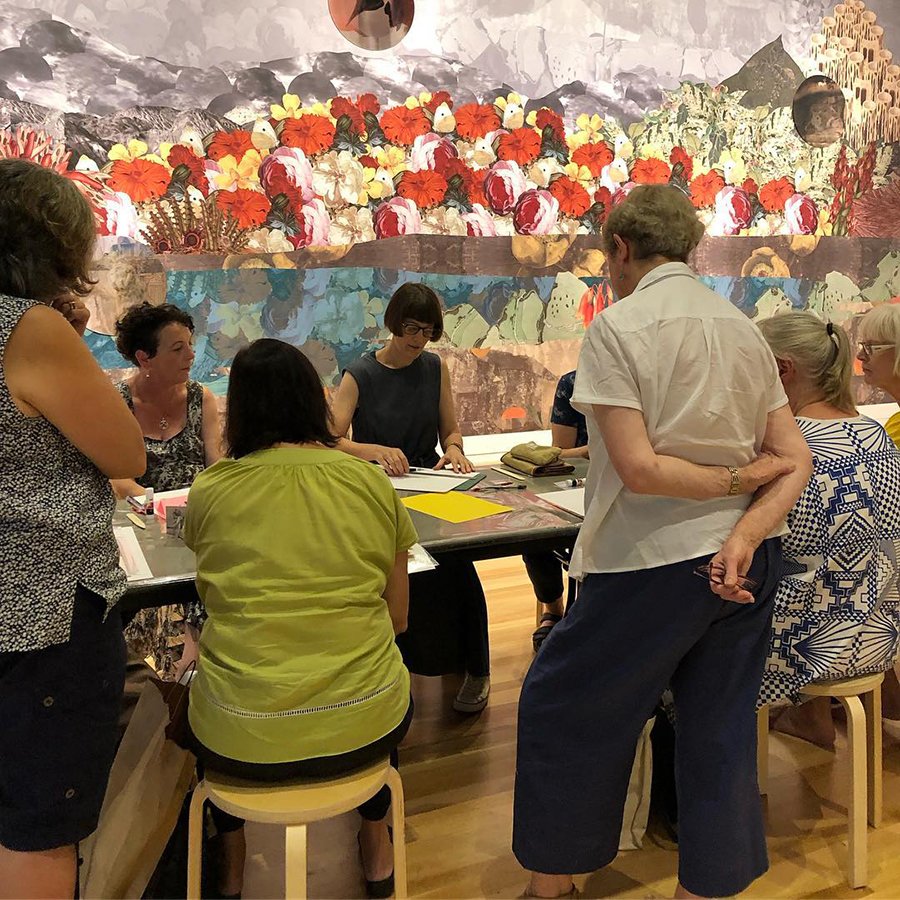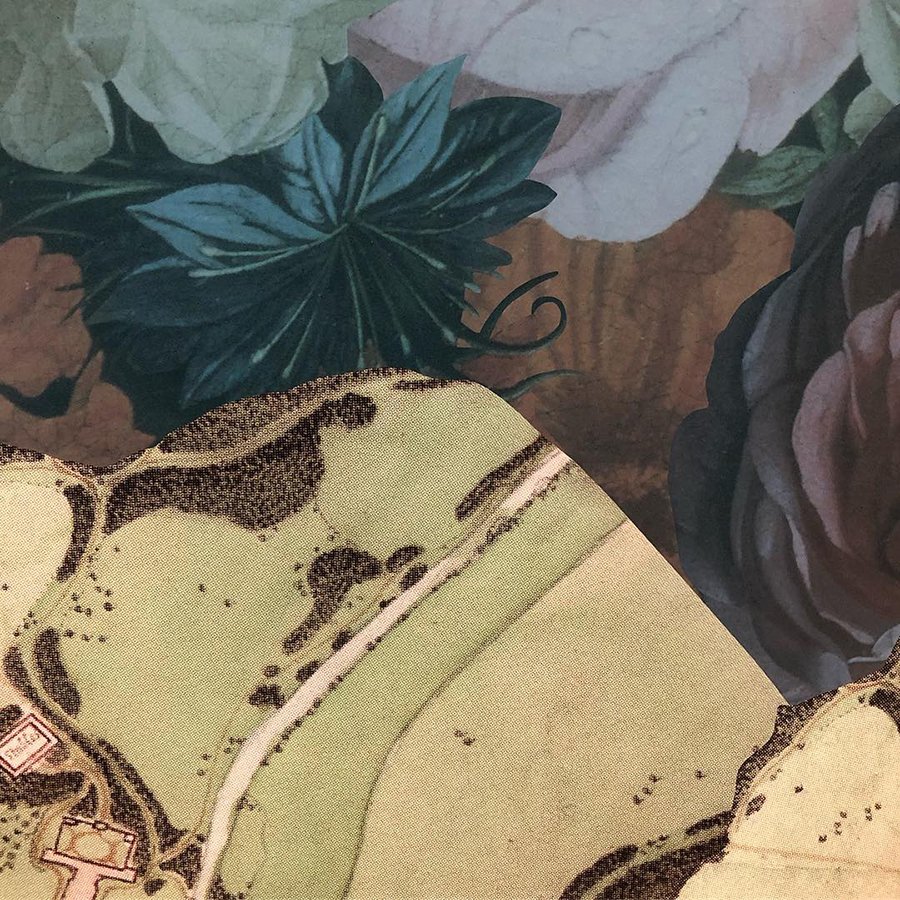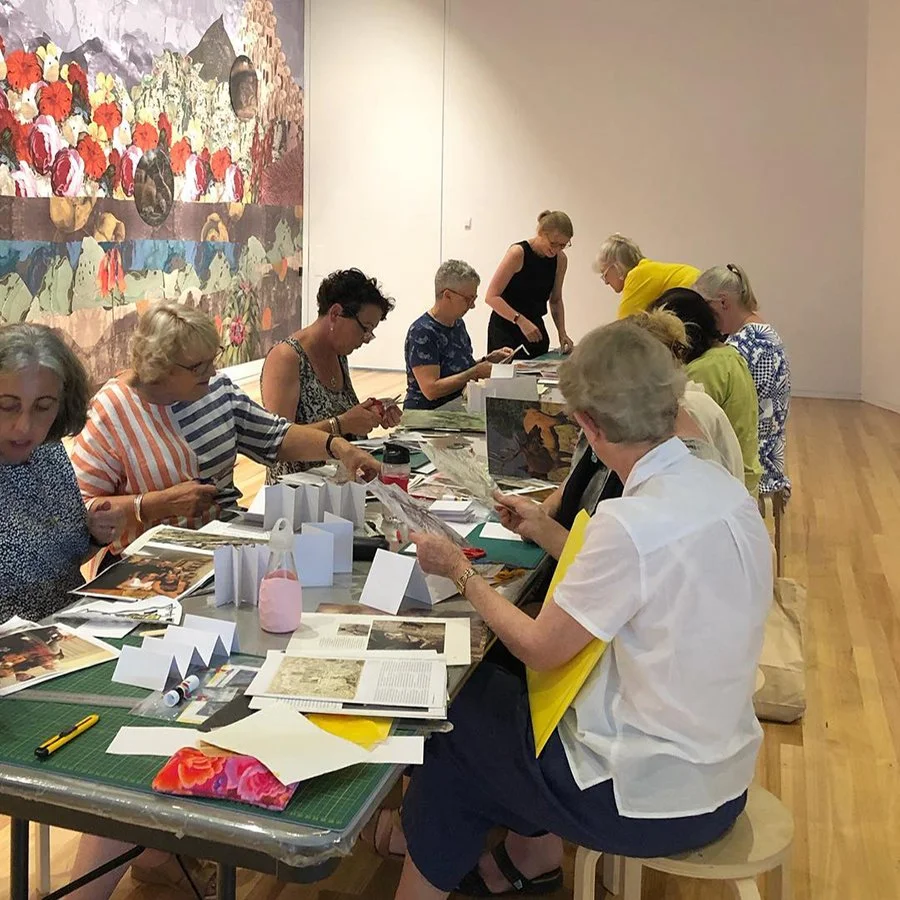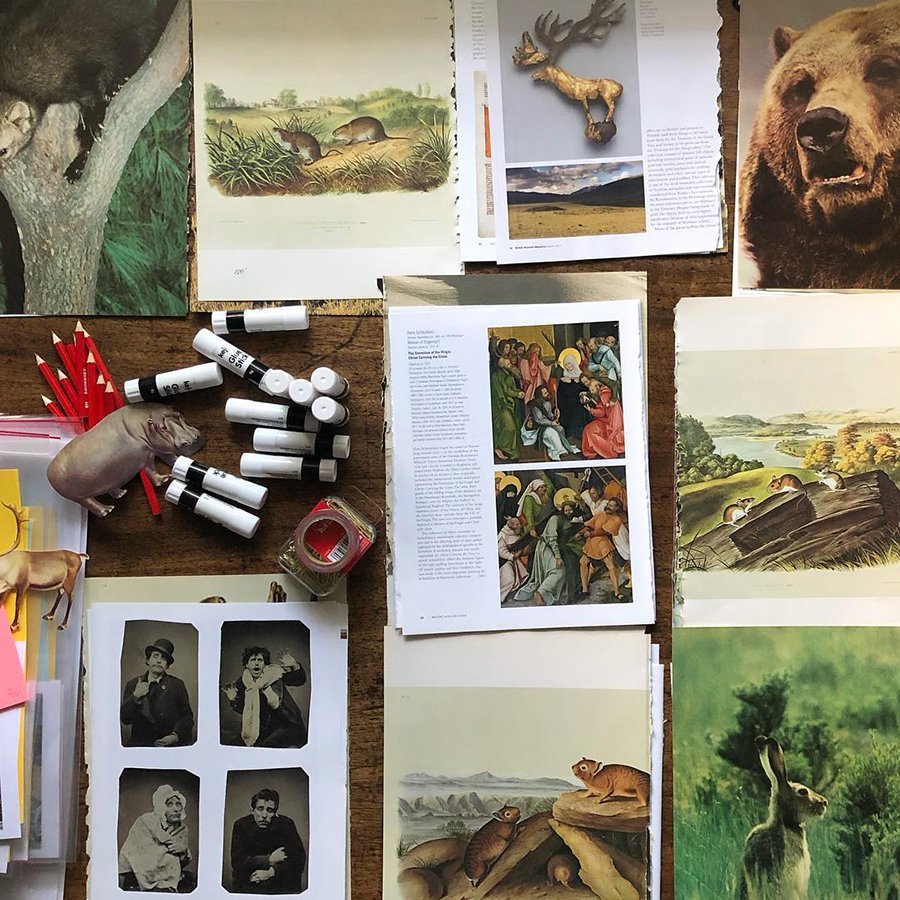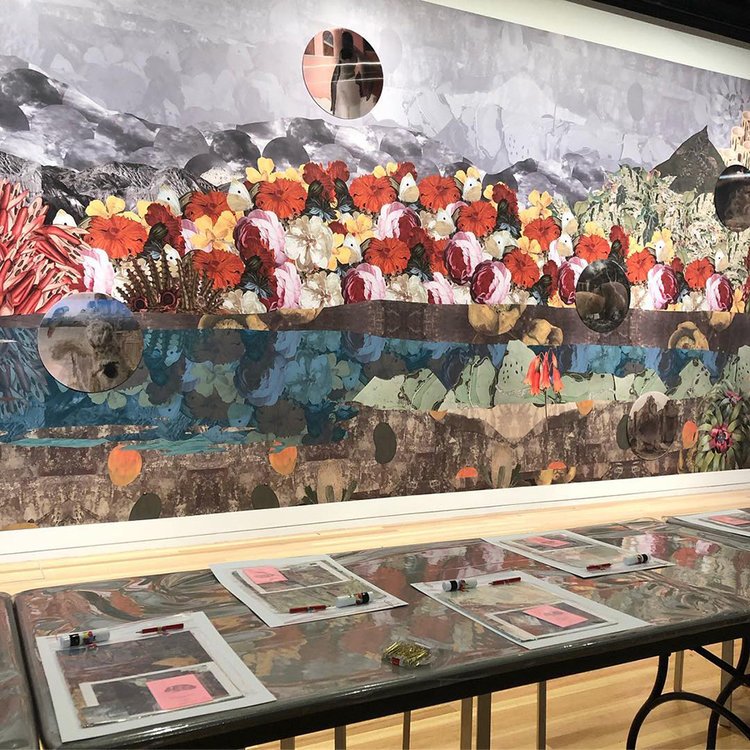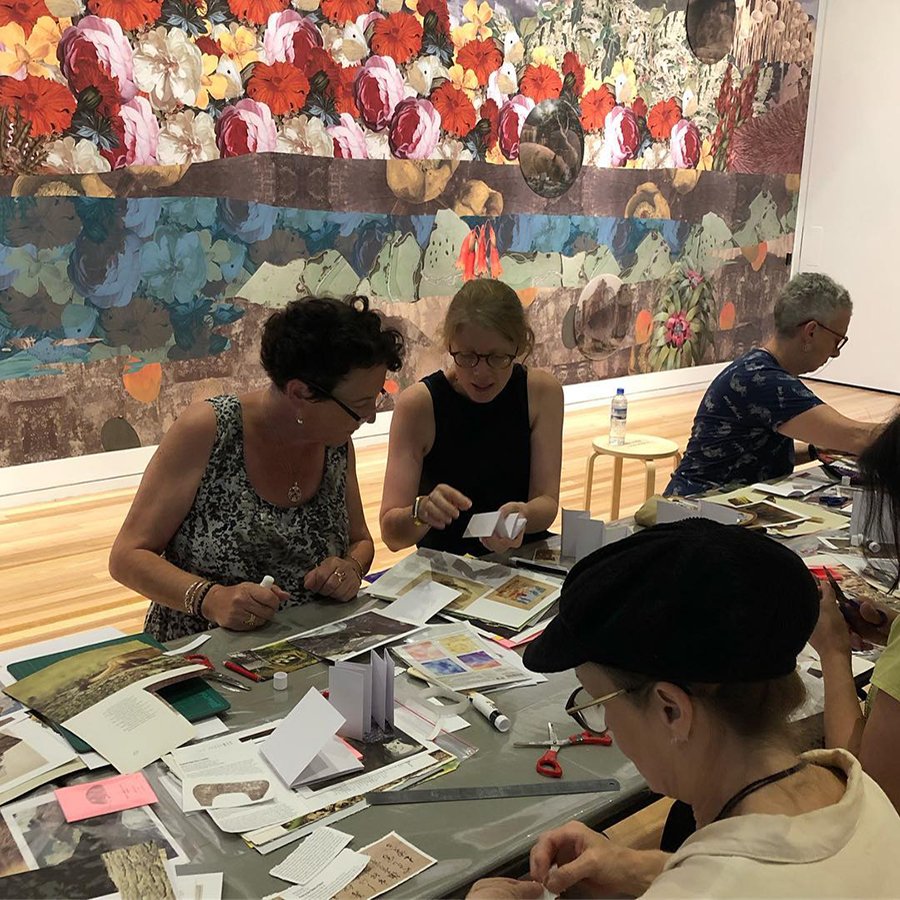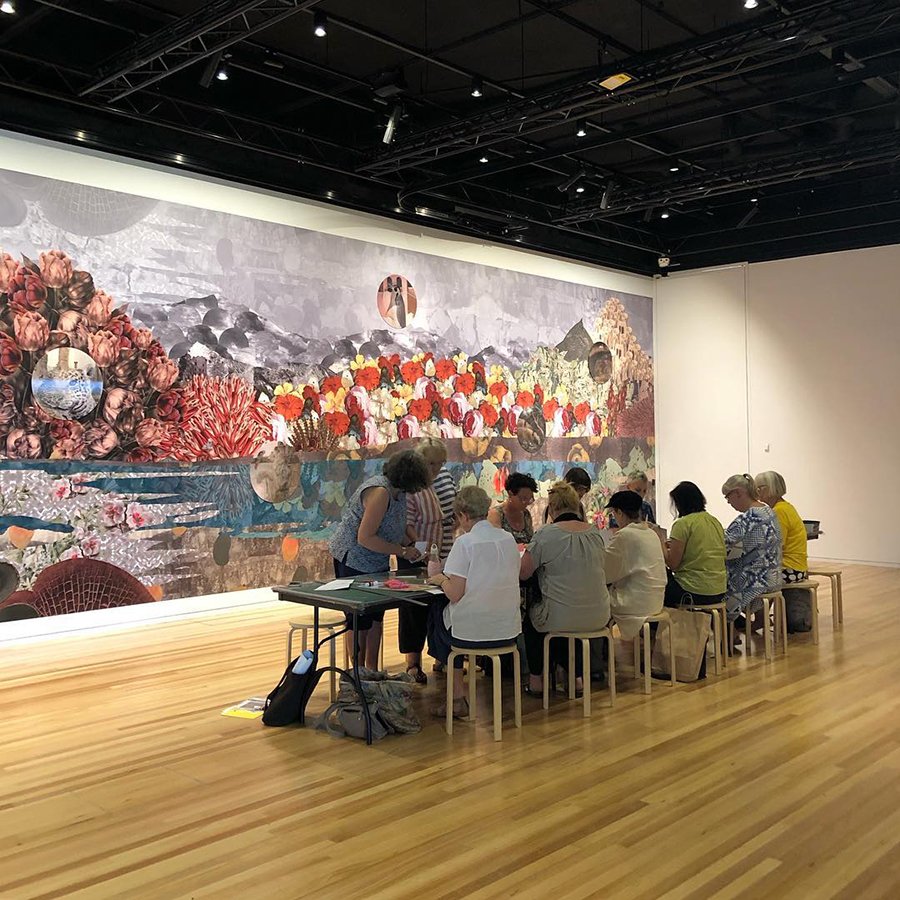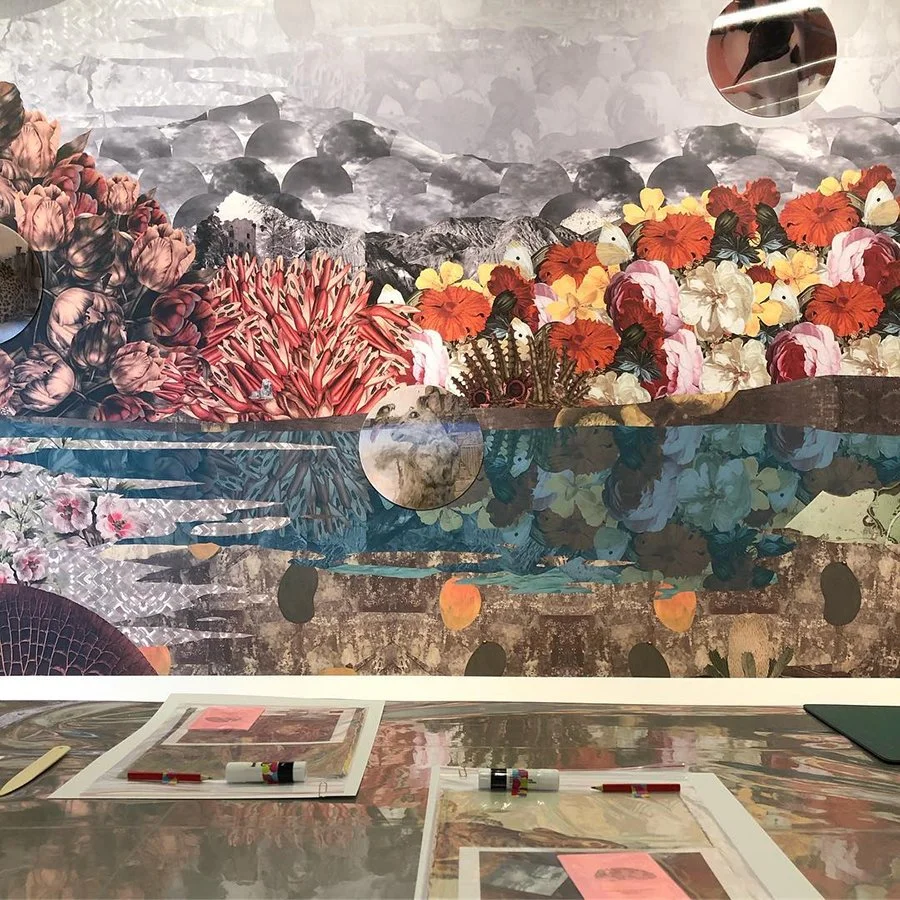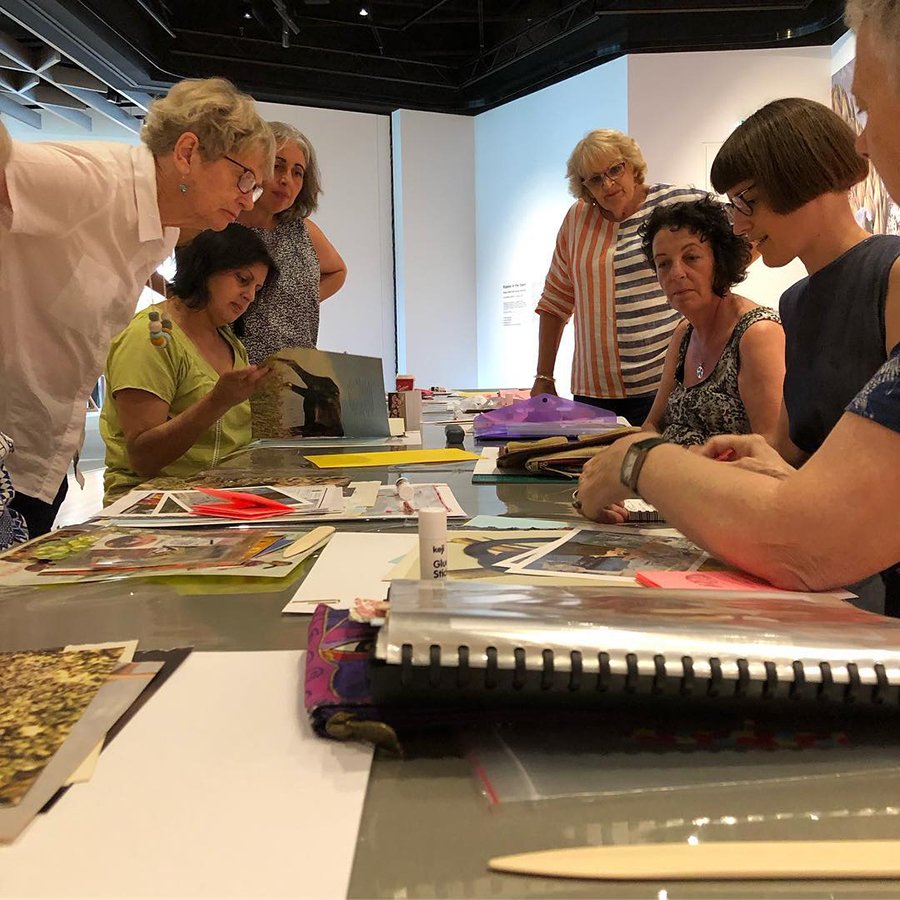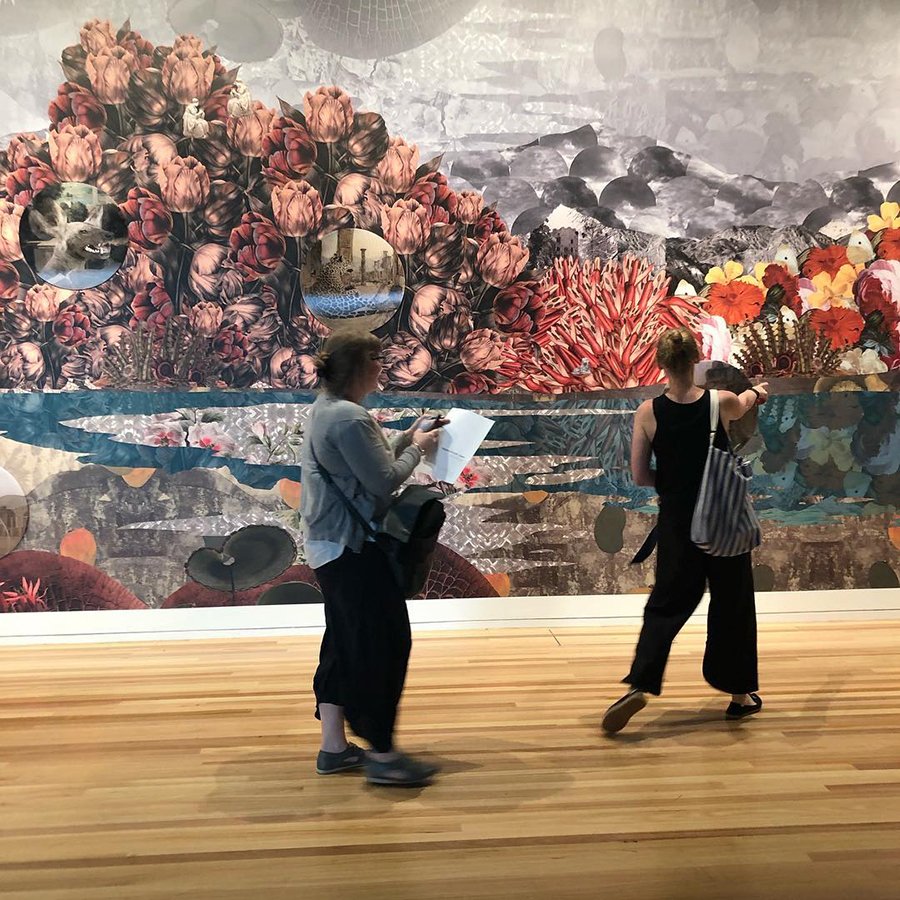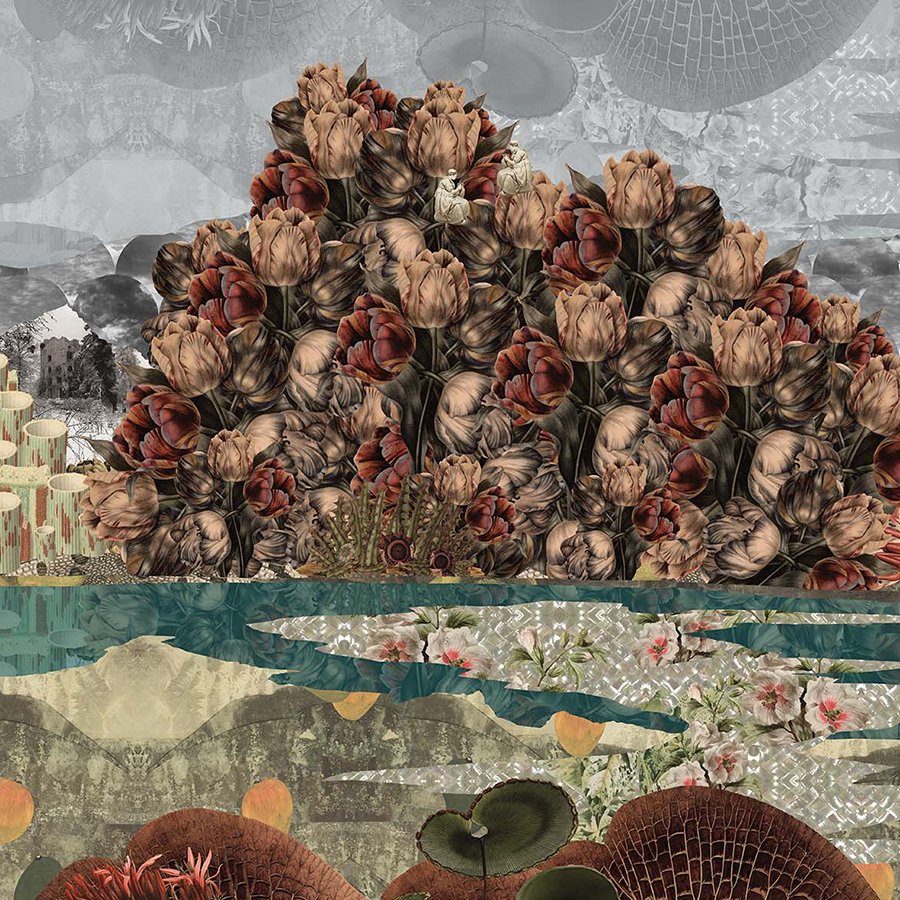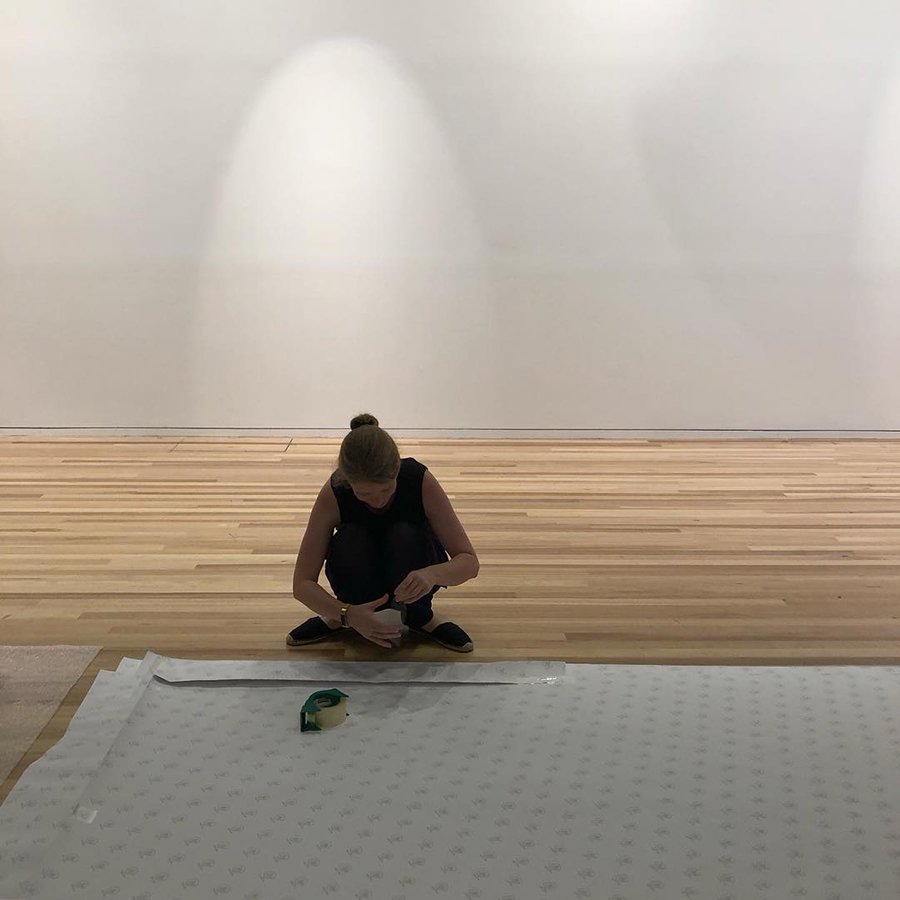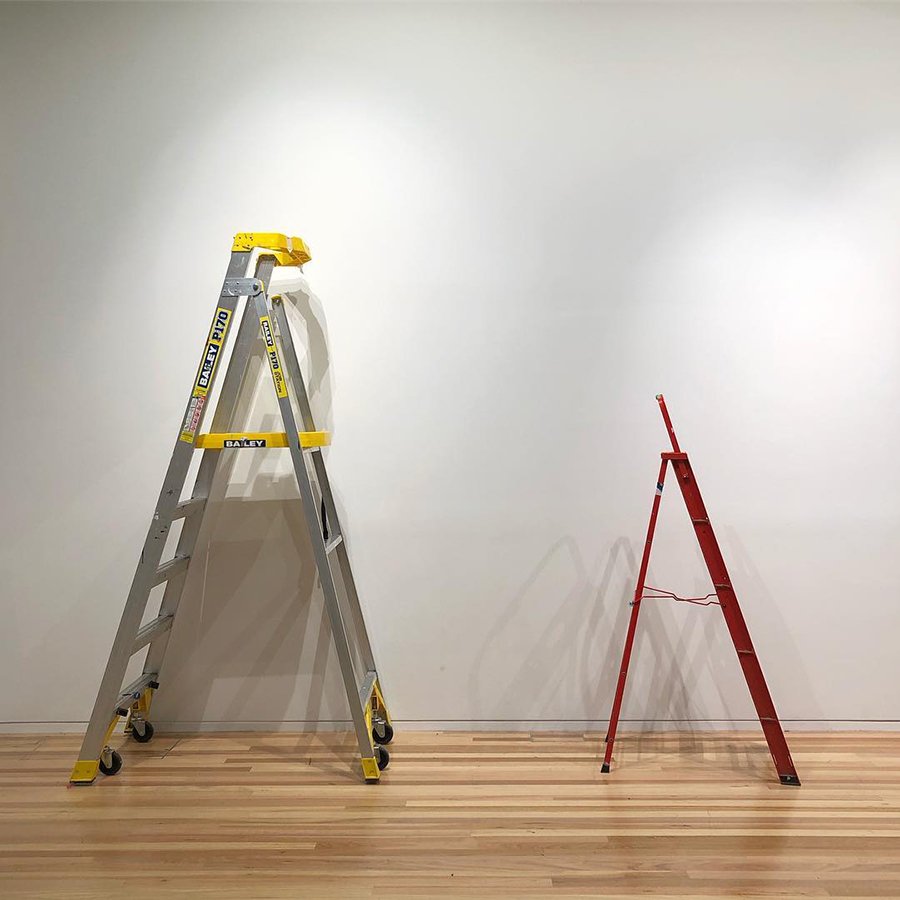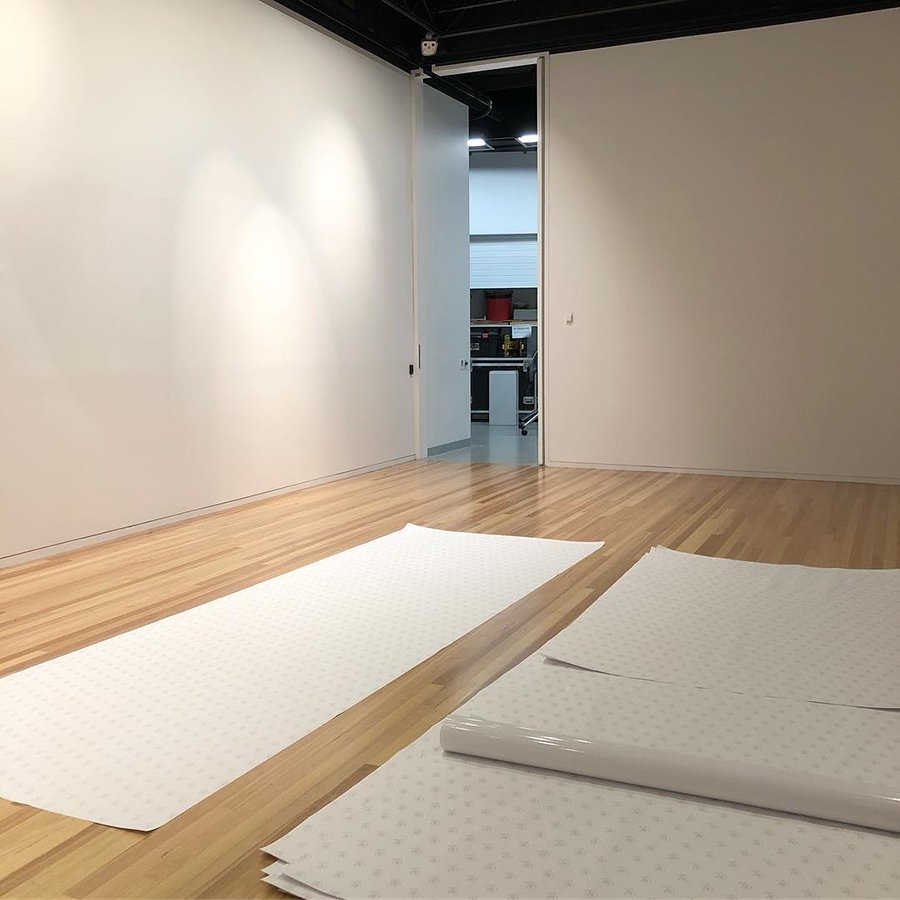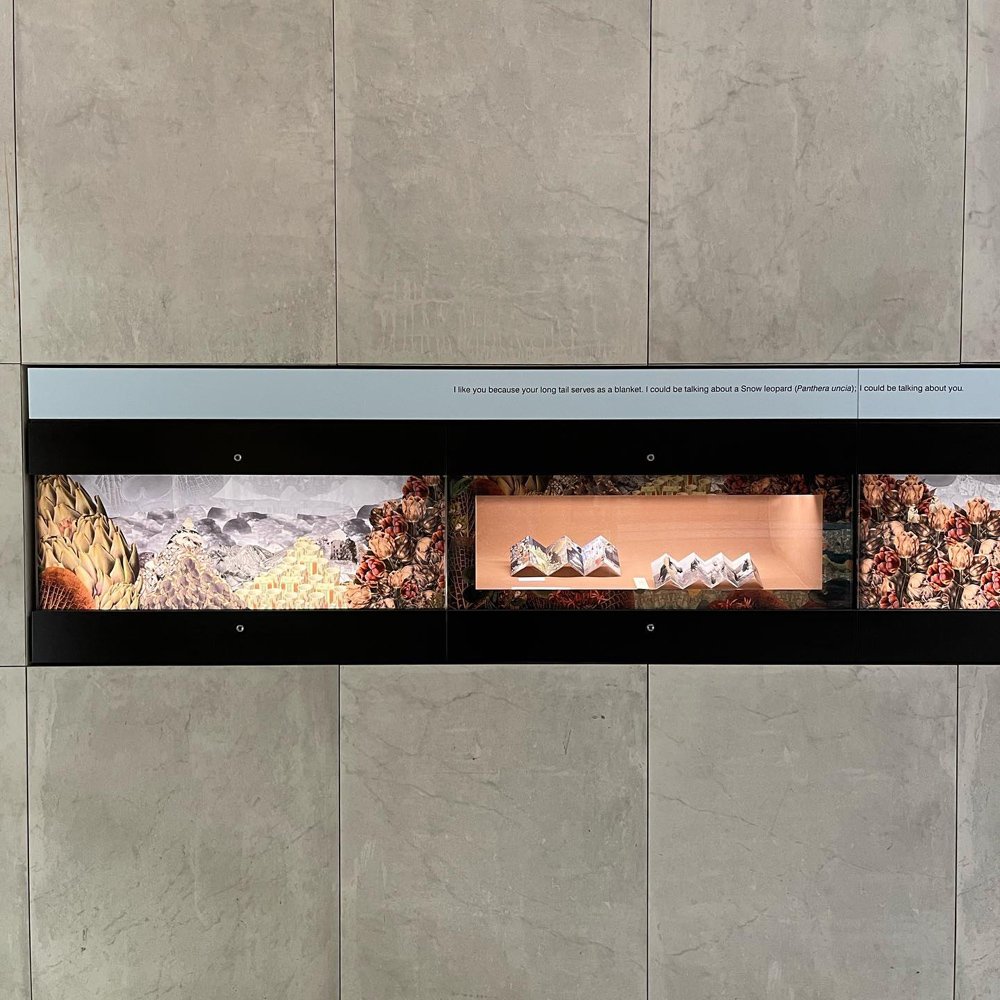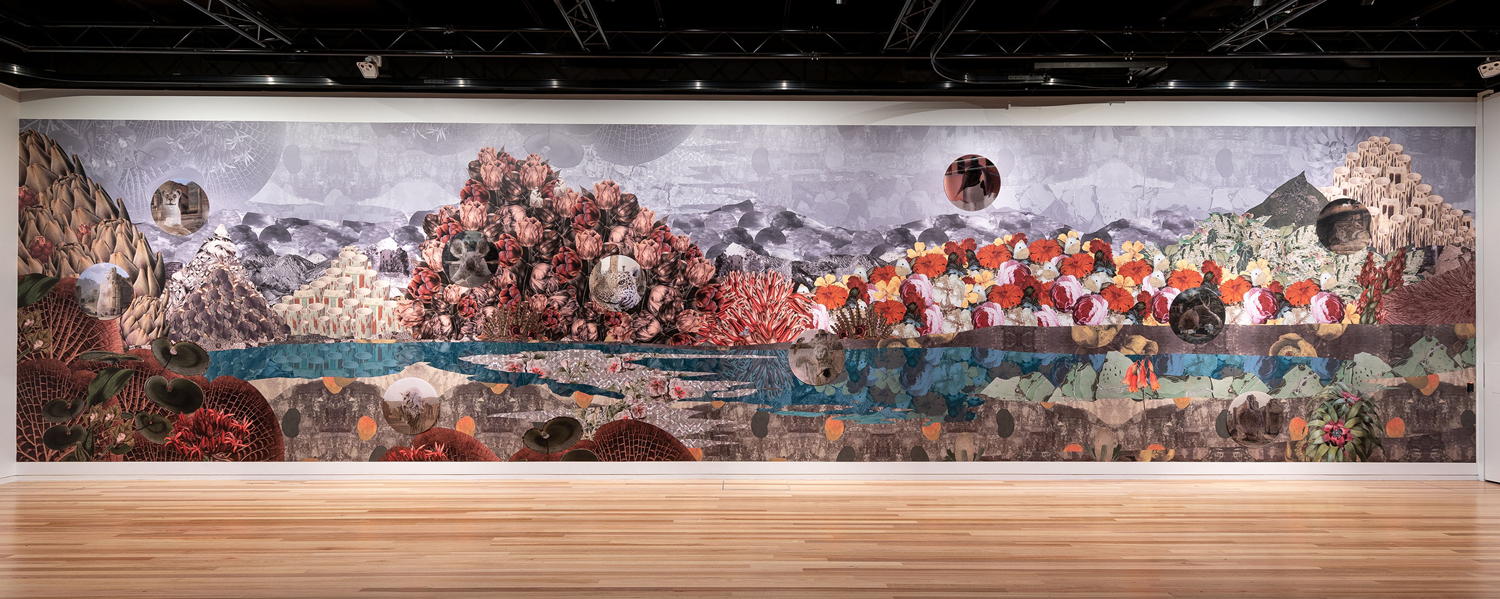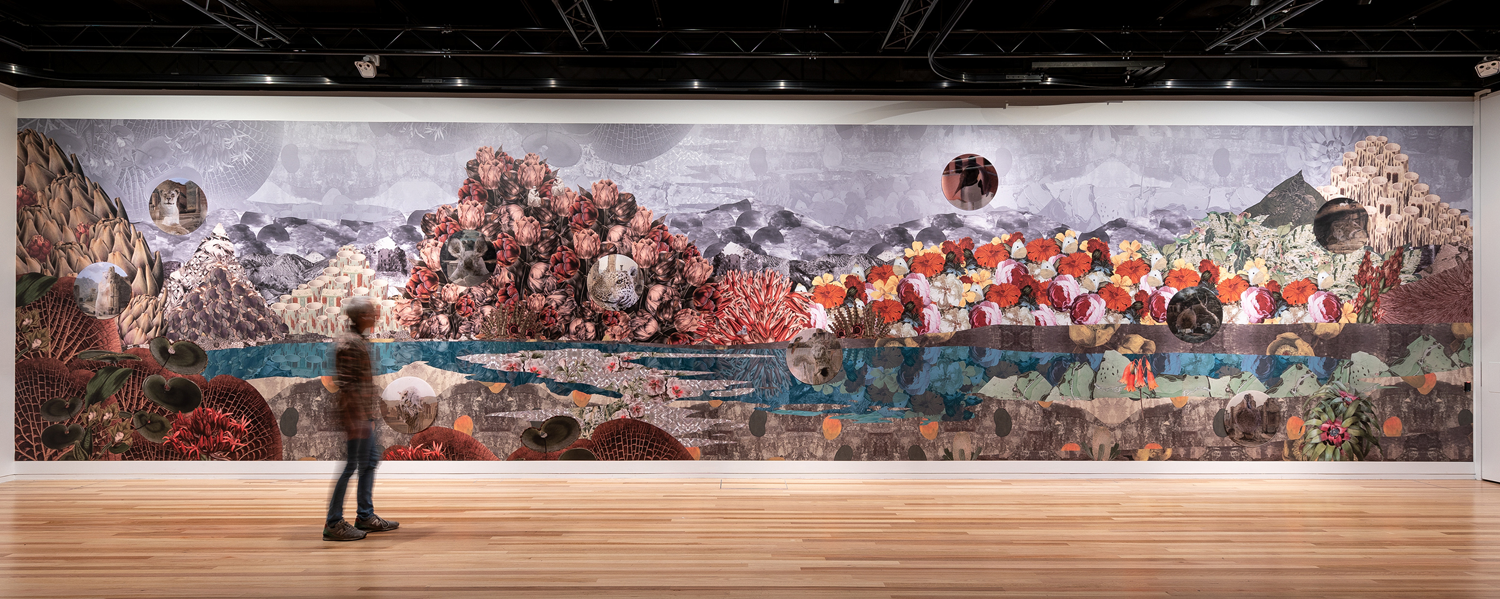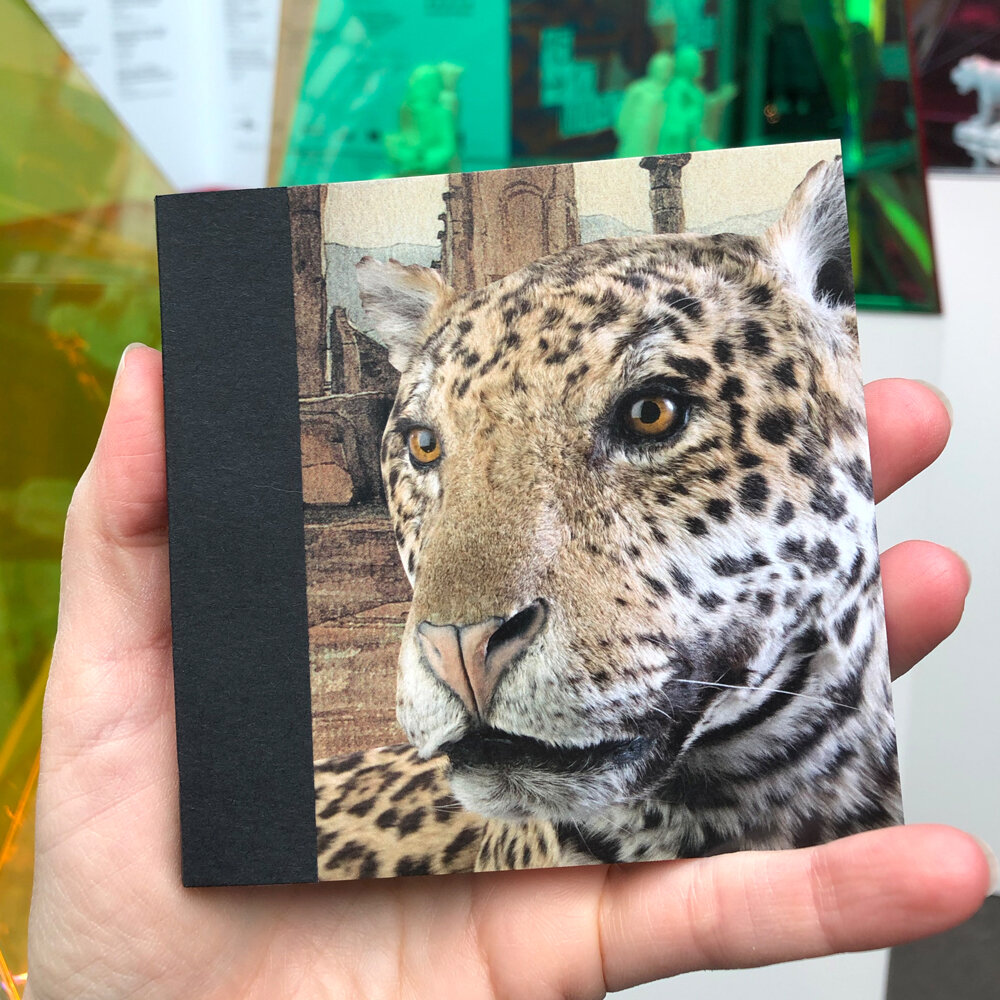RIPPLES IN THE OPEN
“We begin such a stroll on a sunny day before a flowering meadow in which insects buzz and butterflies flutter, and we make a bubble around each of the animals living in the meadow. The bubble represents each animal’s environment [umwelt] and contains all the features accessible to the subject. As soon as we enter into each one bubble, the previous surroundings of the subject are completely reconfigured…. and new connections are created. A new world arises in each bubble.”
Gracia Haby & Louise Jennison
Ripples in the Open
2018–2019
Digital collage, lenticular prints, and sound loop
ArtSpace at Realm
Ringwood Town Square, Victoria
Saturday 10th of November, 2018 – Monday 28th of January, 2019
Gracia Haby and Louise Jennison are best known for their intricately detailed collages, artists' books, prints, zines and drawings, using a palette drawn from natural history collections and found ephemera from the 17th to 20th centuries.
For this new work, a spectacular expanded collage commissioned especially for ArtSpace at Realm, the artists call upon their love of cinema and collecting. Comprised entirely of digitally scanned images from borrowed library books, interspersed with portholes of lenticular prints, the landscape subtly flutters and shifts with the movement of an eye.
Resplendent with flora and fauna — a menagerie of mammal and bird museum specimens — repetitions of forms and colour are piled onto grass plains and sublime New Zealand and Australian vistas. Ripples in the Open marks a new trajectory in the artists’ career — from the intimate to the epic in scale — that takes stock of their vast array of collected and created imagery, gathering them all together in an exploration of our perceptions of the natural world. Each animal floats in its own bubble, in representation of its particular umwelt (perception).
Gracia Haby and Louise Jennison have been collaborating for over 20 years and work by this creative duo can be found in collections across Australia and internationally. They were most recently commissioned by Maroondah City Council for their public artwork, A Weight of Albatross, which can be viewed in the Realm stairwell.
Realm
●
In 2022, a detail of our Ripples in the Open collage, and a curl of text about a Snow leopard, frames the cabinets of the Arts West Building, University of Melbourne. Inside the cabinets, page details from our artists’ book, Because I Like You (2016), and a pair of zines, A warmed pebble in my hand (2018) and Take a lesson from the ground (2017), from the library’s collection, are on display for the whole year.
Arts West
The University of Melbourne
Grattan Street, Parkville
Monday to Friday 7.45am–8pm
Ripples in the Open at Realm
Gracia Haby & Louise Jennison
“Vortexes of movement in space. Everything is falling. The sun is falling. We are falling in pursuit. Like a chameleon, the human mind disguises itself by camouflaging the globe”[i].
In 1919, Blaise Cendrars, a novelist and poet of embers, ash, and art[ii], wrote of the new art of the cinema, which he poetically described as “clustered beams”[iii]. Through the recreation of “a hundred worlds, a thousand movements”[iv], cinema was able to shift our bearings so much so that it allowed us to see with “an eye more marvellous than the multifaceted eye of the fly”[v].
Plucking Cendrars’ words from the page, we sought to shoehorn them into our giant 15-metre collage, Ripples in the Open.
A collaged landscape comprised entirely from images scanned from borrowed library books, it seemed fitting to scan a sensation too, “since everything is rhythm, word, life”[vi]. Subtract a word or two from Cendrars, and there was all we’d hoped to convey in our ‘fusion’ of rebuilt visuals:
In fast motion, the life of the flowers is Shakespearean; in slow motion, everything classical is there in the flexing of a biceps…. enlarged a thousand times…. Crystallizations come to life. Ecstasy. Animals, plants, minerals represent ideas, sensations, ciphers, numbers…. part of a living organism that we surprise, dislodge, and track. Above the spectators’ heads, the bright cone of light wriggles like a dolphin. Characters…. plunge, turn, pursue one another, crisscross, with a luminous, mathematical precision…. Projection of the sky falling. Life from the deep.[vii]
Using three paintings by Eugene von Guérard as a base on which to lay our pieces—one depicting the north-west vista of Milford Sound (1877–79) in New Zealand’s South Island and the others representing the sweeping prospects of Mt. Tambo from the Omeo Station, 1862 and Tower Hill (1855) in Victoria, Australia—we constructed grass plains from wild mangoes, old man banksia (Banksia serrata), a bright call of Tasmanian Christmas bells (Blandfordia nobilis), and the underside of a giant lily pad (Victoria amazonica). We then set about building a mountain from the leaves of a mosaic fig tree (Ficus parcelli), and another with the heads of black orchids, with thanks to the botanical illustrations of Francis Bauer and Mary Anderson Grierson alongside the plump flowers within the still-life paintings of Willem van Aelst. We also drew inspiration from an eclectic selection of library books[viii].
And, as you now walk through Ripples in the Open, like Lewis Carroll’s Alice who “know[s] this is ‘our’ world, yet everything looks different”[ix], you will see floating into frame, like bubbles, 10 taxidermied specimens that are suspended inside lenticular orbs in representation of each animal’s particular umwelt or individually perceived world:
We begin such a stroll on a sunny day before a flowering meadow in which insects buzz and butterflies flutter, and we make a bubble around each of the animals living in the meadow. The bubble represents each animal’s environment [umwelt] and contains all the features accessible to the subject. As soon as we enter into each one bubble, the previous surroundings of the subject are completely reconfigured…. and new connections are created. A new world arises in each bubble.[x]
Umwelt, meaning literally ‘the world around’, signifies “the world sensed by an animal, a view idiosyncratic to each species, fuelled by its particular sensory and cognitive powers and limited by its deficits”[xi]. Surrounded by our own umwelt bubble, can we begin to know or understand the umwelt of another being? Perhaps there is “no common ground [for there] is no common world”[xii].
Our landscape is both of this world and of another world. Just as cinema presents us with an umwelt (through the camera’s eye) within our own umwelt, we have composed an umwelt from images, blown up large, in an echo of the tiny painted dots of pointillism, with every segment of a mountain assembled in reaction to the last. Cinema screen, gallery wall: need the difference be great? Cue: birdsong.
In the digested words of Edmund Husserl, the principal founder of phenomenology, just as one’s umwelt is “always in the process of becoming”[xiii], subjected to constant change, the animals within Ripples in the Open lie just beyond our understanding, “flirting between the worlds of lost and found”. We see our Long-nosed potoroo and Panthera leo, not unlike poet Ruth Padel’s Tiger drinking at a forest pool, one “Slash of light, then gone”[xv]. Opening the door to a different way of knowing. “Quick and quickening”[xvi].
Overhead, the promise of a dolphin wriggles. Because animals are movement. Still, shifting, stirring, moving from one space to the next. Even taxidermied specimens (from the collection of Museums Victoria[xvii]), if you wink. Animate. Animated. Animal.
The capacity to inhabit new umwelten is yours.
Notes:
[i] Blaise Cendrars, The Modern: A New Art, the Cinema (Modernités – Un nouveau art: le cinéma), La Rose rouge 7, 12th June, 1919, p. 108, cited within Richard Abel, ‘French Film Theory and Criticism: 1907–1929’ (New Jersey: Princeton University Press, 1993), vol. 1, p. 182.
[ii] Blaise Cendrars was born Frédéric Louis Sauser in La Chaux-de-Fonds, Switzerland. In 1911, he changed his name to Blaise Cendrars, “a bastardisation…. of ‘braise’ (embers) and ‘cendres’ (ashes) with ‘ars’ (art) thrown in for good measure”, according to Lee Rourke. Blasie Cendrars, The Poetry Foundation, poetryfoundation.org/poets/blaise-cendrars, accessed 12th October, 2018.
[iii] Cendrars, op. cit., p. 183.
[iv] Ibid., p. 182.
[v] Inga Pollmann, ‘Invisible Worlds, Visible: Uexküll’s Umwelt, Film, and Film Theory’, Critical Inquiry, vol. 39, no. 4 (Chicago: The University of Chicago Press, 2013), p. 777. JSTOR, www.jstor.org/stable/10.1086/671356, accessed 8th October, 2018.
[vi] Cendrars, op. cit., p. 182.
[vii] Ibid., p. 183.
[viii] We drew and owe our palette from library books from RMIT University library, including: A World with a View: An Inquiry into the Nature of Scenic Values by Christopher Tunnard; Vision and Its Instruments: Art, Science, and Technology in Early Modern Europe edited by Alina Alexandra Payne; Landscape as a cabinet of curiosities: in search of a position by Günther Vogt, edited by Rebecca Bornhauser and Thomas Kissling; and an amassing of Ruins by Michel Makarius, translated from the French by David Radzinowicz.
[ix] Pollmann, op. cit., p. 779.
[x] Jakob von Uexküll, ‘A Foray into the Worlds of Animals and Humans’ in A Foray into the Worlds of Animals and Humans, with A Theory of Meaning, trans. Joseph D. O’Neil (Minneapolis: University of Minnesota Press, 2010), p. 41.
[xi] Carol Kaesuk Yoon, Naming Nature: The Clash Between Instinct and Science, (New York: W.W. Norton & Company, 2009), p. 15.
[xii] Pollmann, op. cit., p. 778.
[xiii] Edmund Husserl’s definition of the “surround-world” (umwelt), cited within Paul S. MacDonald, ‘Husserl’s Preemptive Responses to Existentialist Critiques’, Indo-Pacific Journal of Phenomenology, vol. 1, ed. 1, April 2001, p. 2.
[xiv] Henry Buller, ‘“One Slash of Light, then Gone”: animals as movement’, Études rurales, No. 189, Sociabilités animales (Paris: EHESS, 2012), pp. 139–153. JSTOR, www.jstor.org/stable/23345168, accessed 15th October, 2018.
[xv] Ibid., p. 139.
[xvi] Jay Griffiths, ‘Birdsong: Hannah’s Wood, Heart of Wales’, Arboreal: A Collection of New Woodland Writing, ed. Adrian Cooper, (Dorset: Little Toller Books, 2016), p. 19.
[xvii] Panthera leo, lion [C 38142]; Potorous tridactylus, Long-nosed potoroo [C 6177]; Ursus maritimus, Polar bear [C 38090]; Aptenodytes forsteri, Emperor penguin [B 21000]; Lasiorhinus krefftii, Northern hairy-nosed wombat [C 6230]; Panthera onca, Jaguar [C 27448]; Cercartetus concinnus, Western pygmy possum, [C 2789]; Lagorchestes leporides, Eastern hair wallaby [C 28241]; Anas superciliosa rogersi, Pacific black duck [B 21681]; Lycaon pictus, African wild dog [C 30350].
